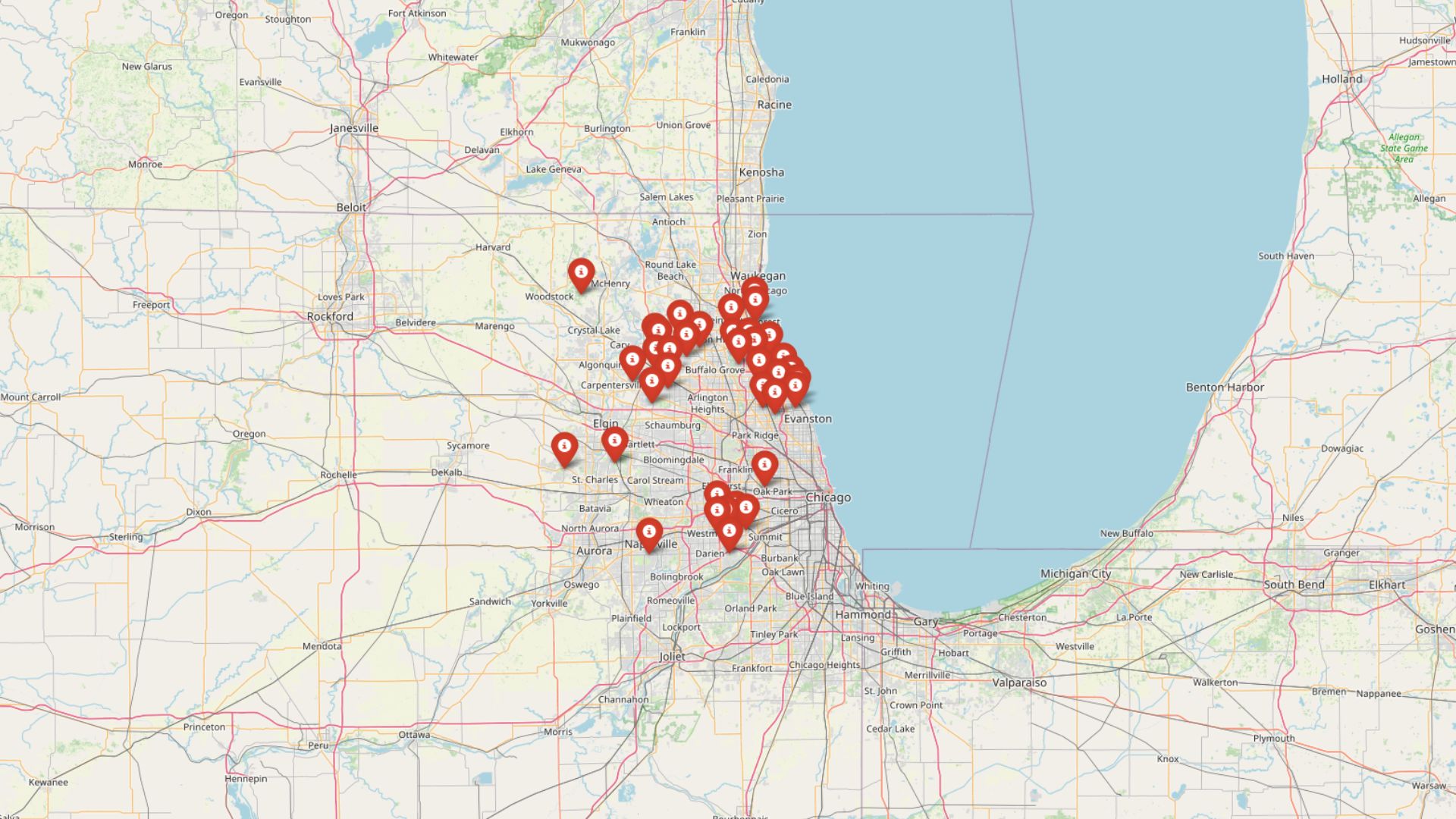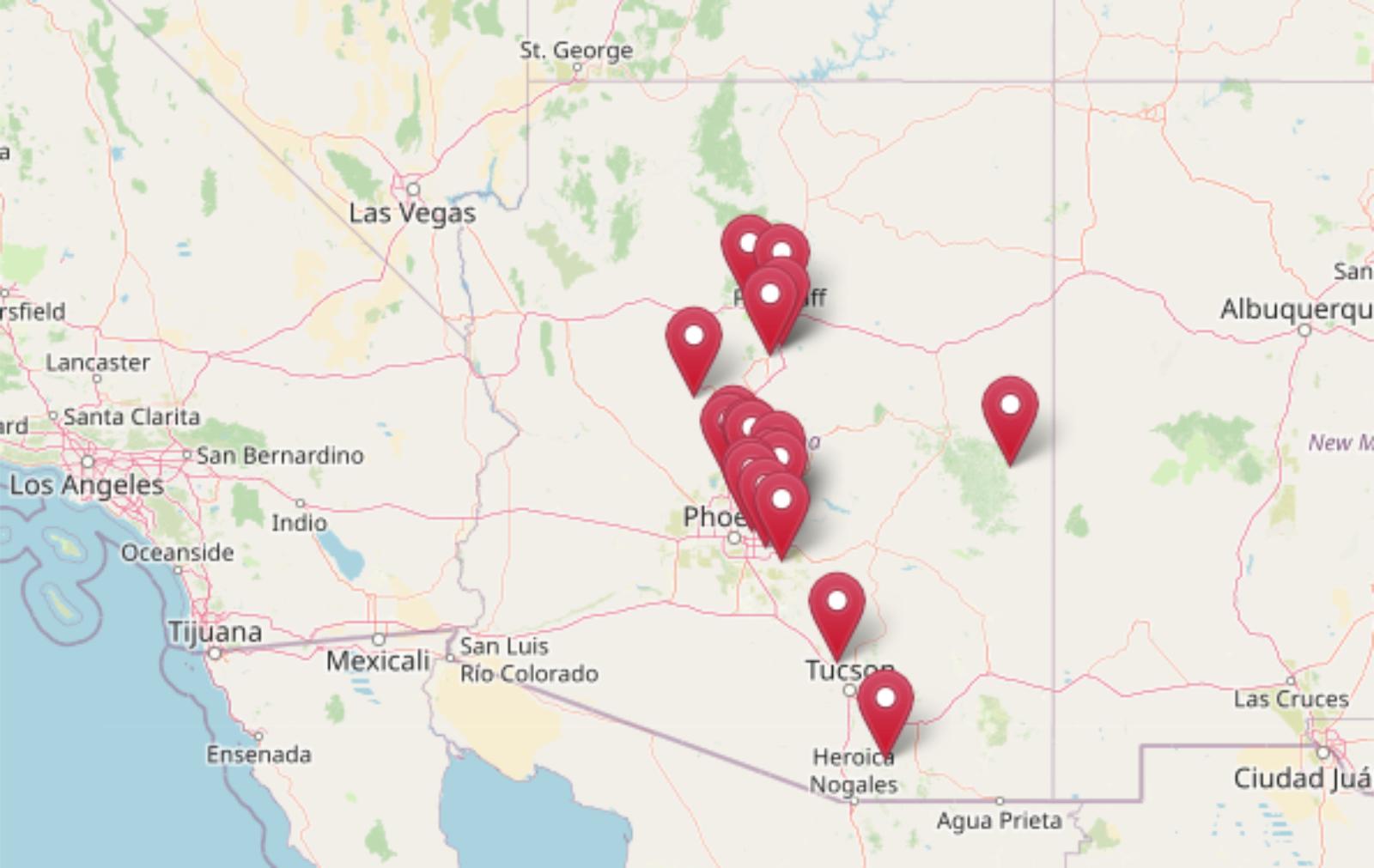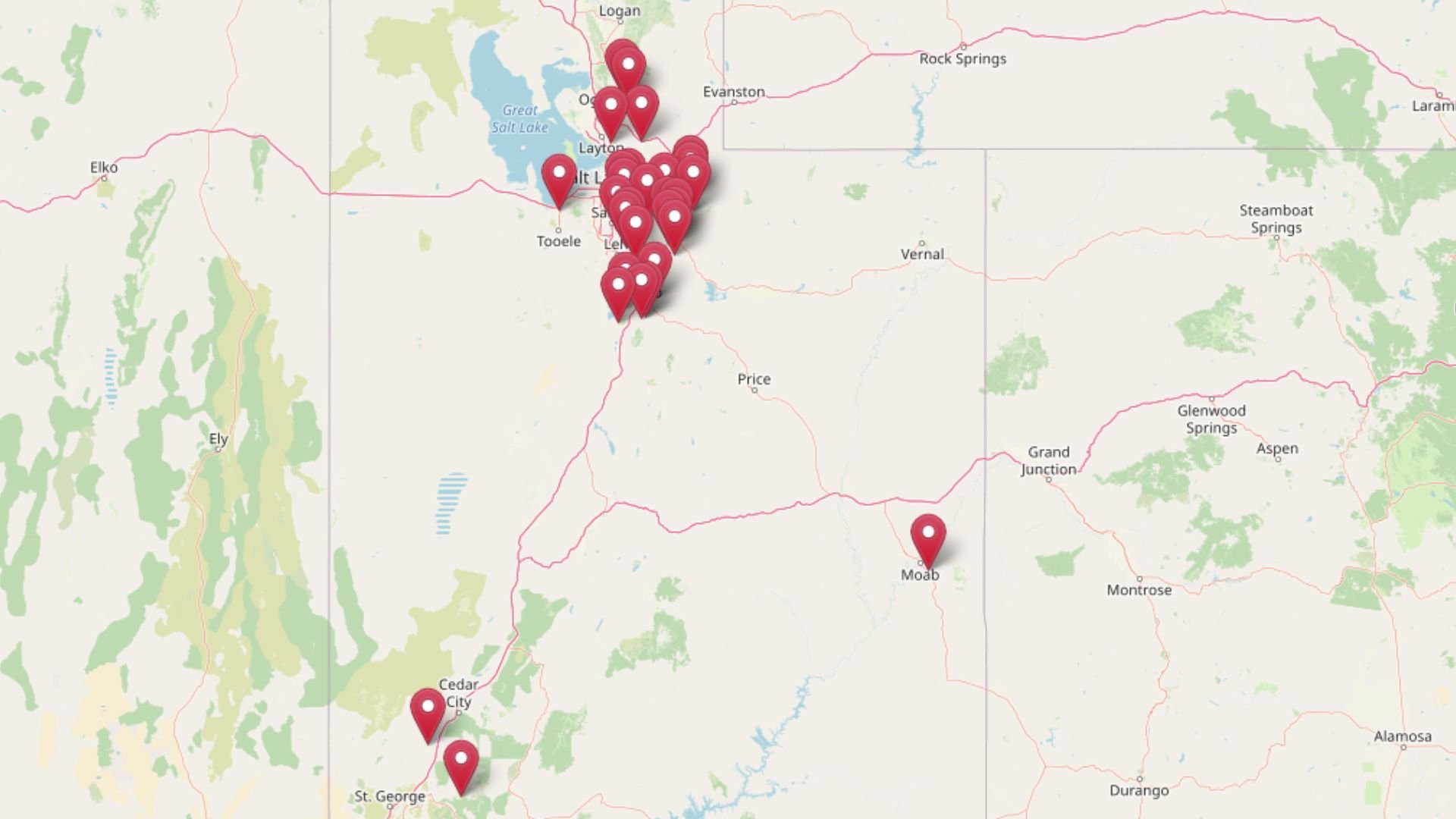
Using the latest Zillow Home Value Index data, we’ve identified the 30 most expensive towns in Utah based on current median home prices. These communities represent more than just high price tags—they showcase Utah’s most desirable locations where natural beauty meets luxury living. From exclusive ski resorts to upscale mountain retreats, each town on this list has carved out a unique position in Utah’s competitive real estate market.
Utah ranks as the nation’s ninth most expensive housing market, making these premium communities even more remarkable in their appeal to buyers. Whether you’re considering an investment, planning a move, or simply curious about where Utah’s housing prices peak, this comprehensive breakdown reveals what makes these towns worth their premium price tags.
30. Spanish Valley – 2% Home Price Increase Since 2010
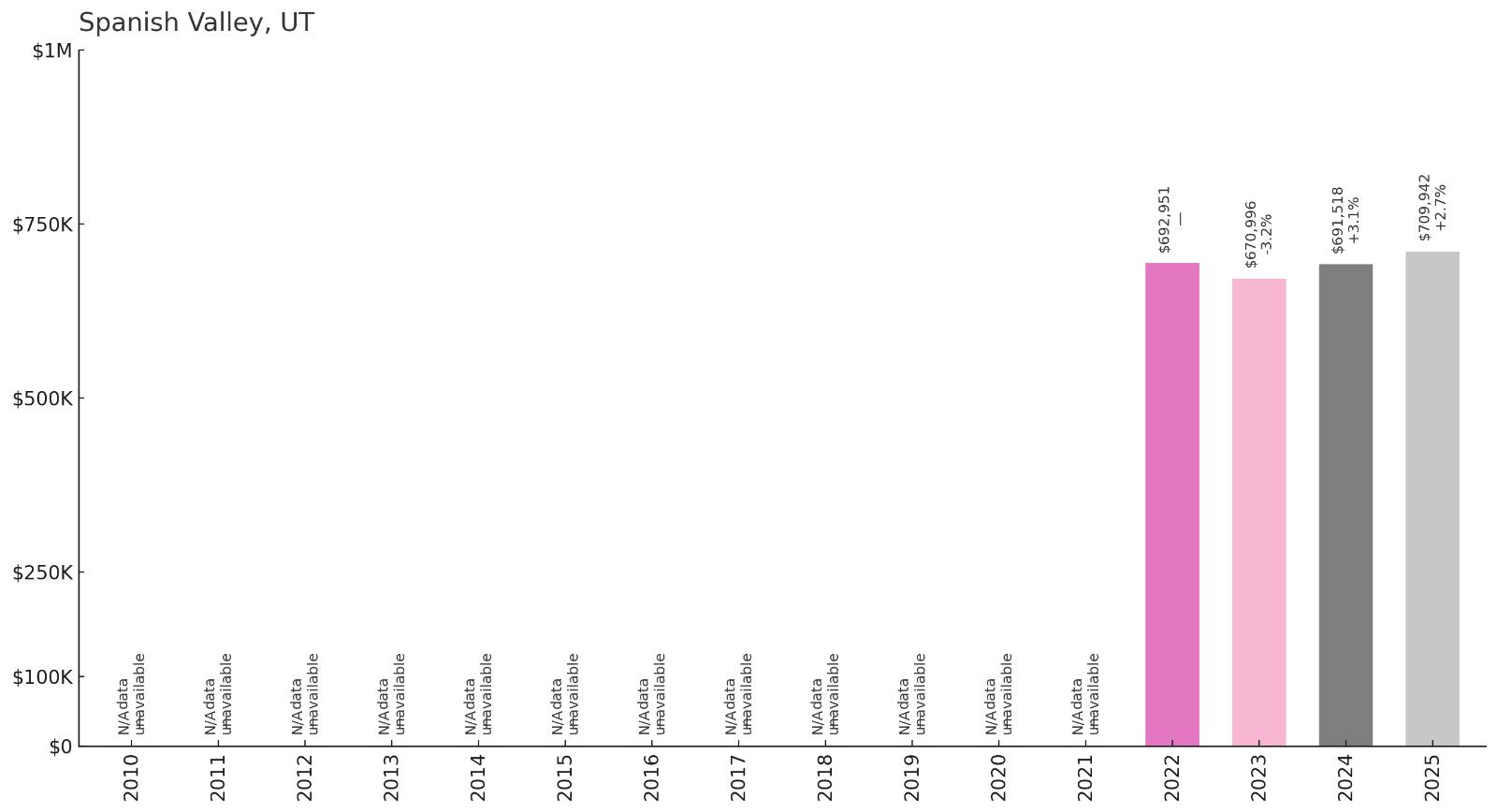
- 2010: N/A
- 2011: N/A
- 2012: N/A
- 2013: N/A
- 2014: N/A
- 2015: N/A
- 2016: N/A
- 2017: N/A
- 2018: N/A
- 2019: N/A
- 2020: N/A
- 2021: N/A
- 2022: $692,951
- 2023: $670,996
- 2024: $691,518
- 2025: $709,942
Spanish Valley has experienced modest growth since reliable data became available in 2022. The median home price reached $709,942 by 2025, showing steady appreciation despite a temporary dip in 2023. This community near Moab has maintained stable values as buyers seek proximity to Utah’s renowned outdoor recreation areas.
Why Spanish Valley?
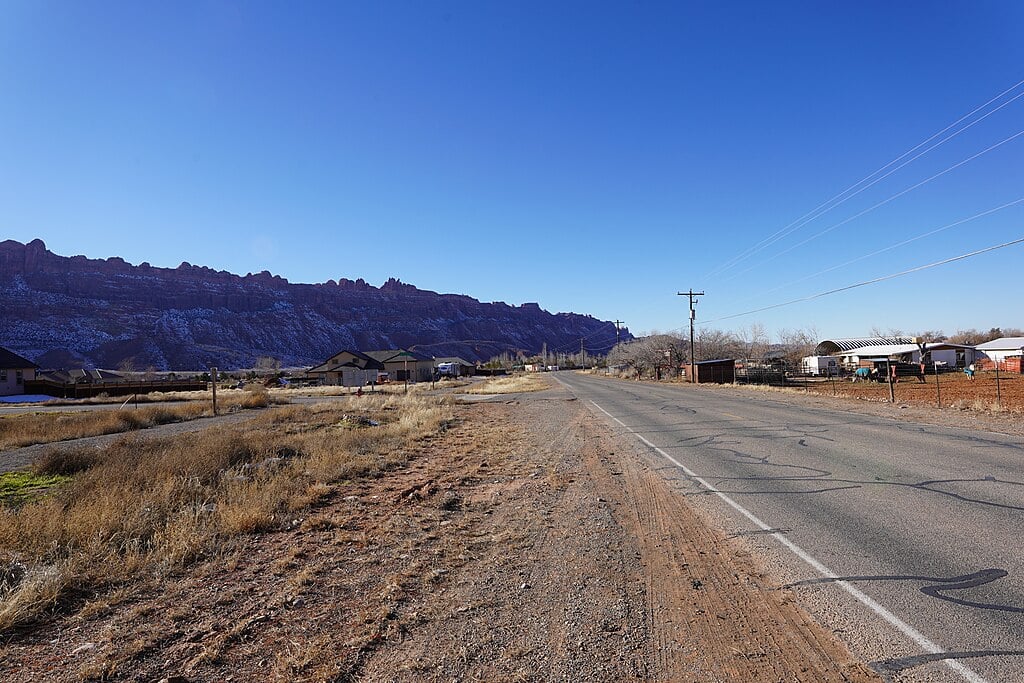
Why are people willing to pay so much to live here? What’s special about it?
Spanish Valley attracts residents who crave easy access to Arches and Canyonlands National Parks without sacrificing modern conveniences. The area offers a rare combination of desert beauty and established neighborhoods with reliable utilities and services. Unlike more remote Utah locations, Spanish Valley provides the infrastructure families need while maintaining that sought-after small-town atmosphere.
How Spanish Valley Rose to Prominence
Spanish Valley developed as a bedroom community for Moab, offering more space and lower costs than living directly in the tourist hub. As Moab’s popularity exploded with outdoor enthusiasts and adventure travelers, Spanish Valley became the logical choice for residents who wanted proximity without the crowds. The area’s growth accelerated as remote work became more common, allowing professionals to live in scenic locations while maintaining their careers.
3 Interesting Tidbits
1. Gateway Location – Spanish Valley serves as the primary residential area for people working in Moab’s tourism industry, offering more affordable housing than the main town.
2. Desert Oasis – The valley provides crucial services and amenities for the greater Moab area, including shopping centers and medical facilities that serve the wider region.
3. Outdoor Paradise – Residents enjoy year-round access to world-class mountain biking, hiking, and rock climbing, with Arches National Park just minutes away.
29. Lindon – 169% Home Price Increase Since 2010

- 2010: $266,146
- 2011: $250,563
- 2012: $264,825
- 2013: $296,907
- 2014: $317,874
- 2015: $336,657
- 2016: $370,542
- 2017: $394,073
- 2018: $425,907
- 2019: $462,184
- 2020: $490,339
- 2021: $621,840
- 2022: $734,522
- 2023: $682,255
- 2024: $696,008
- 2025: $716,983
Lindon has seen remarkable growth of 169% since 2010, with median prices reaching $716,983 by 2025. The biggest jump occurred between 2020 and 2022, reflecting Utah’s broader housing boom during the pandemic. Despite some cooling in 2023, values have resumed their upward climb.
Why Lindon?
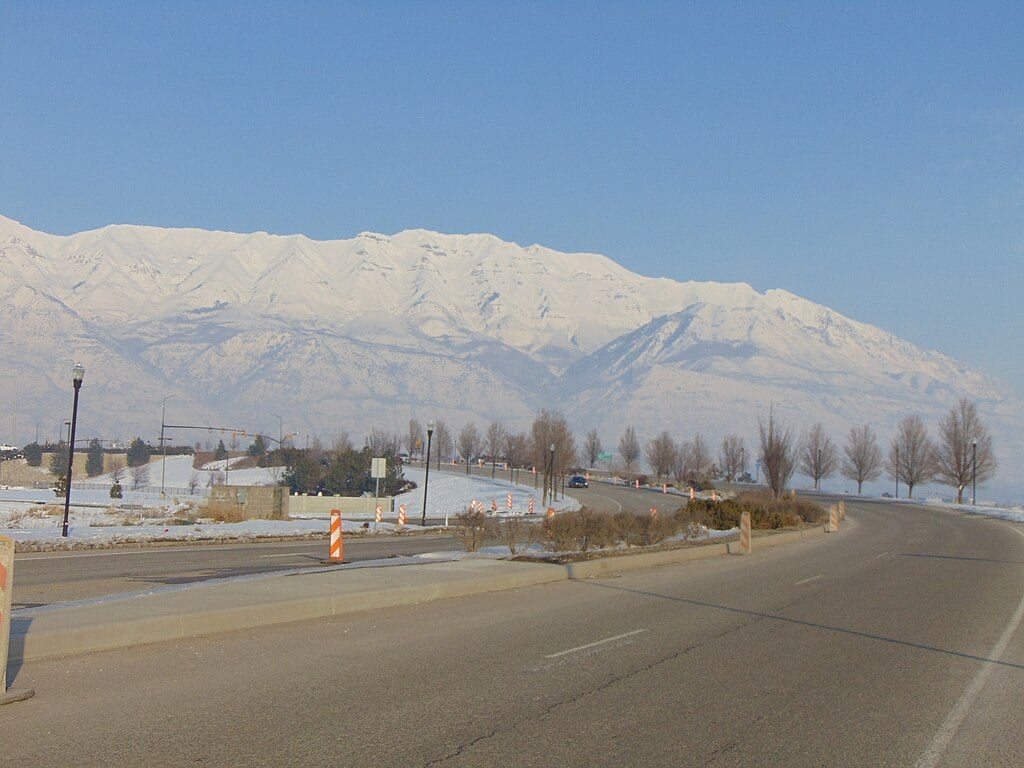
Why are people willing to pay so much to live here? What’s special about it?
Lindon offers the perfect balance of small-town charm and big-city accessibility in Utah County. Families are drawn to the excellent schools, safe neighborhoods, and strong sense of community that defines this city. The location provides easy access to both Salt Lake City employment opportunities and Utah Valley’s booming tech corridor.
How Lindon Rose to Prominence
Originally a farming community, Lindon transformed as Utah County experienced rapid growth in the 1990s and 2000s. The city’s strategic location between Provo and American Fork made it attractive to families seeking new construction and larger lots. As Utah’s Silicon Slopes tech boom expanded southward, Lindon became a prime location for professionals wanting suburban living with short commutes.
3 Interesting Tidbits
1. Tech Hub Access – Lindon sits at the heart of Utah County’s technology corridor, with major employers like Adobe and Novell nearby.
2. Family Focus – The city maintains one of the youngest median ages in Utah, reflecting its appeal to growing families.
3. Outdoor Access – Residents enjoy easy access to Utah Lake and the nearby Wasatch Mountains for year-round recreation.
28. Morgan – 175% Home Price Increase Since 2010
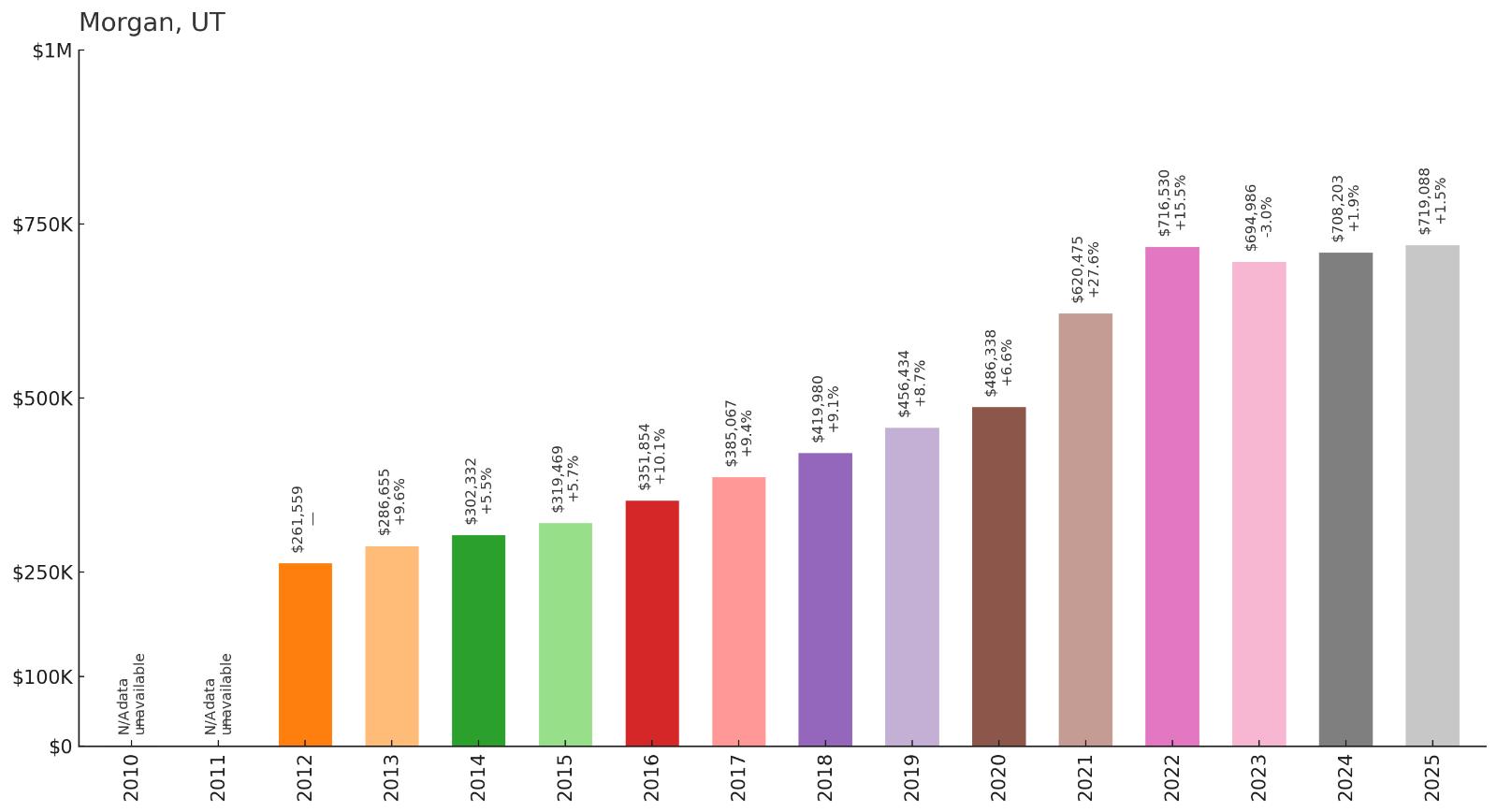
- 2010: N/A
- 2011: N/A
- 2012: $261,559
- 2013: $286,655
- 2014: $302,332
- 2015: $319,469
- 2016: $351,854
- 2017: $385,067
- 2018: $419,980
- 2019: $456,434
- 2020: $486,338
- 2021: $620,475
- 2022: $716,530
- 2023: $694,986
- 2024: $708,203
- 2025: $719,088
Morgan has achieved impressive 175% growth since data became available in 2012, reaching $719,088 by 2025. The town experienced steady appreciation through the 2010s before accelerating dramatically during the pandemic years. Values have stabilized in recent years while maintaining their elevated levels.
Why Morgan?

Why are people willing to pay so much to live here? What’s special about it?
Morgan offers a genuine small-town experience in a stunning mountain valley setting. Residents value the tight-knit community, excellent schools, and abundant recreational opportunities that surround this charming town. The location provides a peaceful retreat from urban life while remaining accessible to major employment centers.
How Morgan Rose to Prominence
Nestled in Morgan Valley, this town began as an agricultural community in the 1860s. As Utah’s population grew and people sought alternatives to urban living, Morgan’s scenic beauty and small-town atmosphere became increasingly attractive. The town carefully managed growth to preserve its character while welcoming new residents seeking a slower pace of life.
3 Interesting Tidbits
1. Valley Setting – Morgan sits in a picturesque valley surrounded by mountains, offering stunning views from virtually every neighborhood.
2. Agricultural Heritage – The town maintains its farming roots with large lots and rural atmosphere despite increasing suburban development.
3. Recreation Hub – Morgan provides easy access to skiing, hiking, and fishing, with several reservoirs and mountain areas nearby.
27. Elk Ridge – 170% Home Price Increase Since 2010
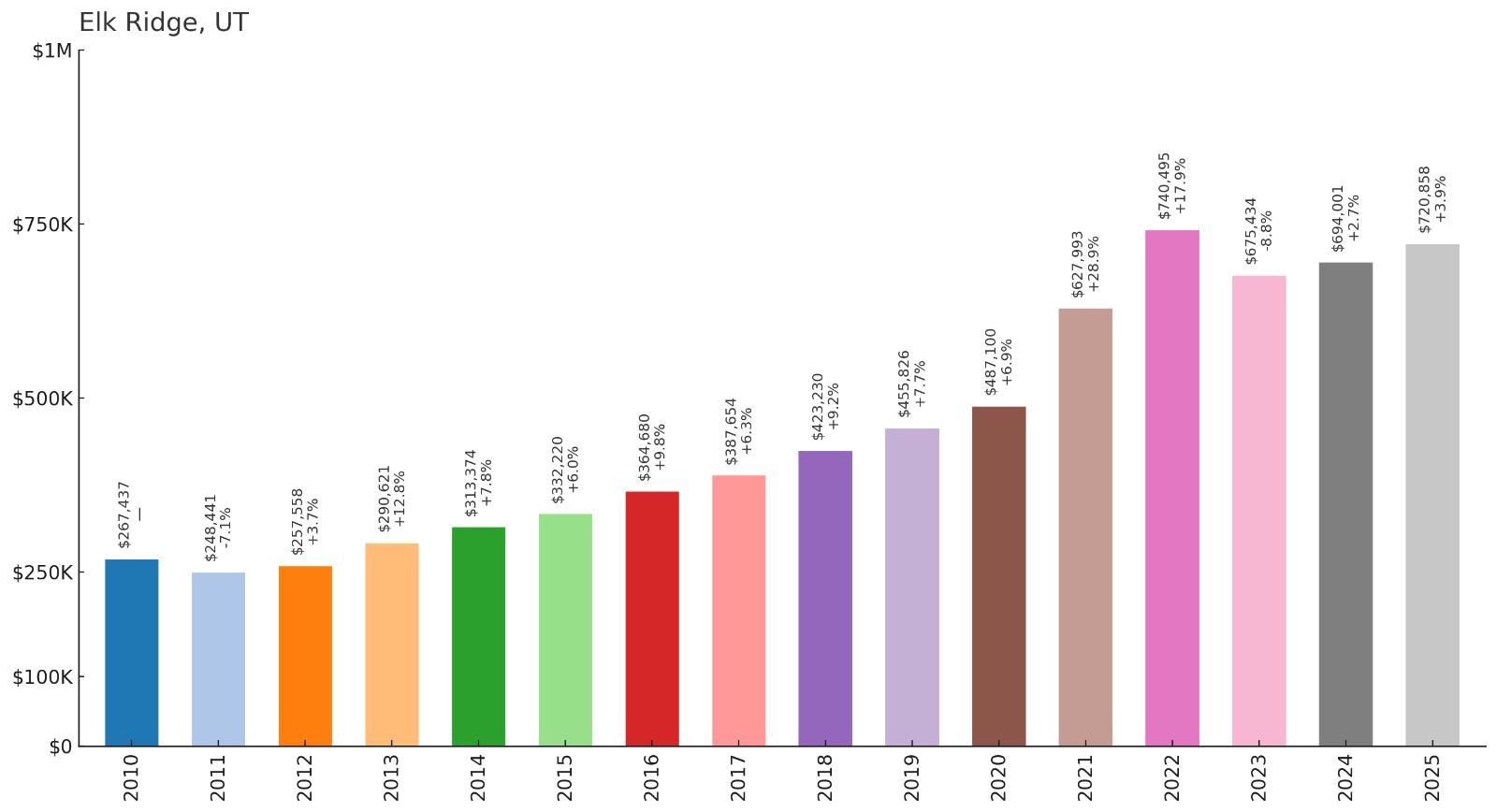
- 2010: $267,437
- 2011: $248,441
- 2012: $257,558
- 2013: $290,621
- 2014: $313,374
- 2015: $332,220
- 2016: $364,680
- 2017: $387,654
- 2018: $423,230
- 2019: $455,826
- 2020: $487,100
- 2021: $627,993
- 2022: $740,495
- 2023: $675,434
- 2024: $694,001
- 2025: $720,858
Elk Ridge has posted strong 170% growth since 2010, with median prices now at $720,858. The community saw significant appreciation through the 2010s, followed by dramatic increases during 2021-2022. Recent years have shown some volatility but values remain well above pre-pandemic levels.
Why Elk Ridge?
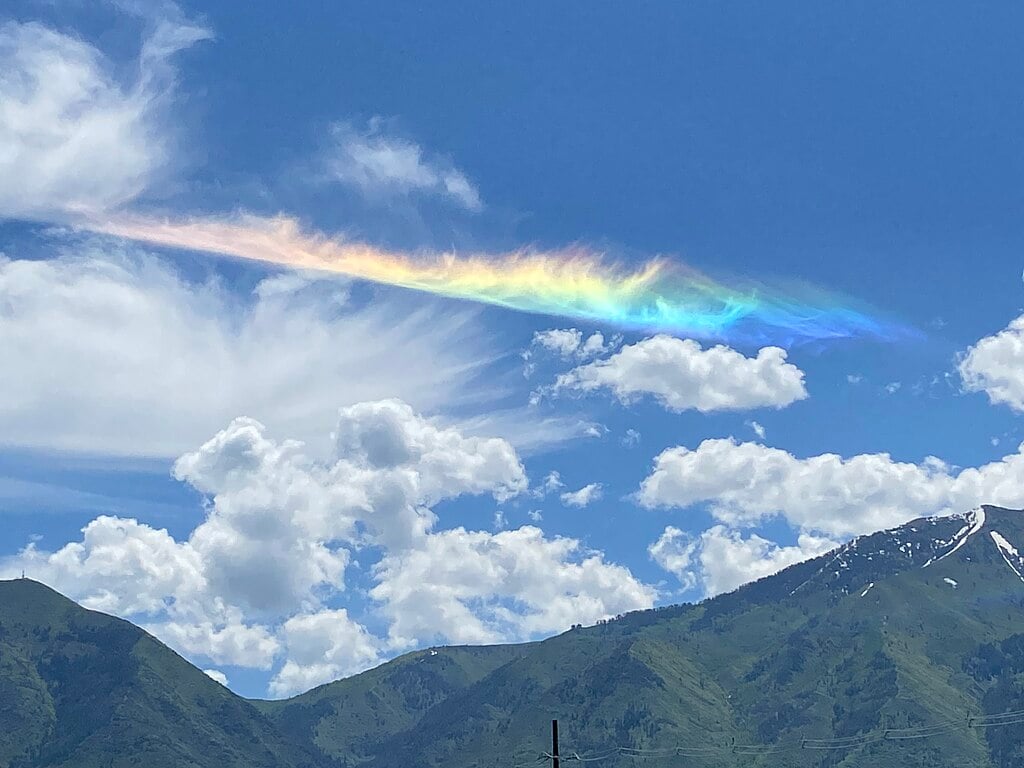
Why are people willing to pay so much to live here? What’s special about it?
Elk Ridge appeals to families seeking spacious homes on large lots with mountain views. The community offers a semi-rural lifestyle while maintaining proximity to Utah Valley’s employment centers and amenities. Residents appreciate the newer construction, planned neighborhoods, and family-friendly atmosphere that defines this growing city.
How Elk Ridge Rose to Prominence
Incorporated in 1998, Elk Ridge represents Utah County’s planned community development approach. The city was designed from the ground up to accommodate families seeking larger homes and lots than typically available in older communities. As Utah County’s population exploded, Elk Ridge became a destination for buyers wanting new construction in a master-planned environment.
3 Interesting Tidbits
1. Planned Community – Elk Ridge was designed as a master-planned community with large lots and mountain views integrated into the development.
2. Family Oriented – The city maintains excellent schools and numerous parks designed specifically for families with children.
3. Growing Fast – Elk Ridge continues to develop new neighborhoods, making it one of Utah County’s fastest-growing communities.
26. Erda – 157% Home Price Increase Since 2010
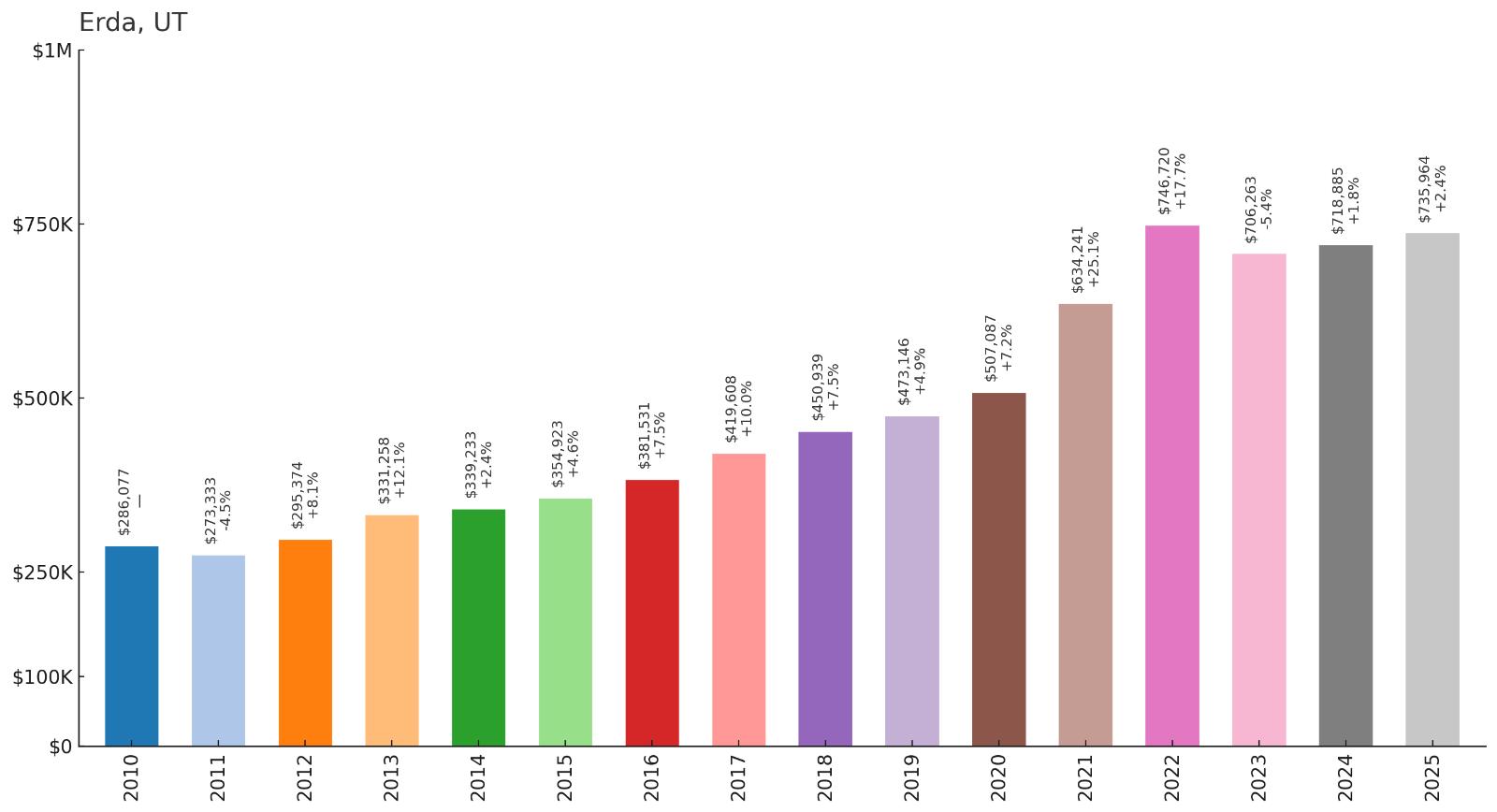
- 2010: $286,077
- 2011: $273,333
- 2012: $295,374
- 2013: $331,258
- 2014: $339,233
- 2015: $354,923
- 2016: $381,531
- 2017: $419,608
- 2018: $450,939
- 2019: $473,146
- 2020: $507,087
- 2021: $634,241
- 2022: $746,720
- 2023: $706,263
- 2024: $718,885
- 2025: $735,964
Erda has achieved solid 157% growth since 2010, reaching $735,964 by 2025. The community experienced steady appreciation throughout the 2010s before surging during the pandemic housing boom. Values have stabilized recently while maintaining their elevated status in Tooele County’s market.
Why Erda?
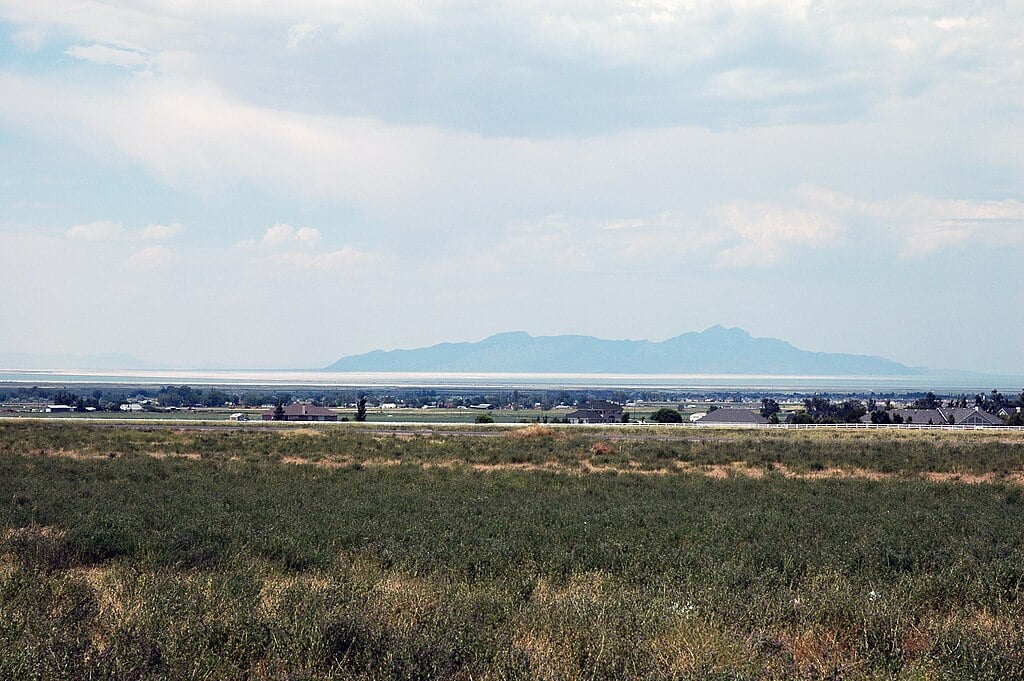
Why are people willing to pay so much to live here? What’s special about it?
Erda offers rural living with large lots and horse-friendly neighborhoods while remaining accessible to Salt Lake Valley employment. Families value the small-town atmosphere, excellent schools, and wide-open spaces that allow for various lifestyle choices. The community provides a genuine rural experience without sacrificing modern conveniences.
How Erda Rose to Prominence
Originally an agricultural area in Tooele County, Erda began attracting suburban development as Salt Lake Valley became increasingly crowded and expensive. The area’s large lots and rural zoning attracted buyers seeking space for horses, gardens, and outdoor activities. As remote work became more common, Erda’s appeal grew among professionals wanting rural living without long commutes.
3 Interesting Tidbits
1. Horse Country – Erda maintains a strong equestrian culture with numerous properties zoned for horses and livestock.
2. Rural Zoning – The area preserves large lot sizes and agricultural uses, maintaining its rural character despite suburban growth.
3. Mountain Access – Residents enjoy easy access to the Oquirrh Mountains for hiking, biking, and outdoor recreation.
25. Huntsville – 173% Home Price Increase Since 2010
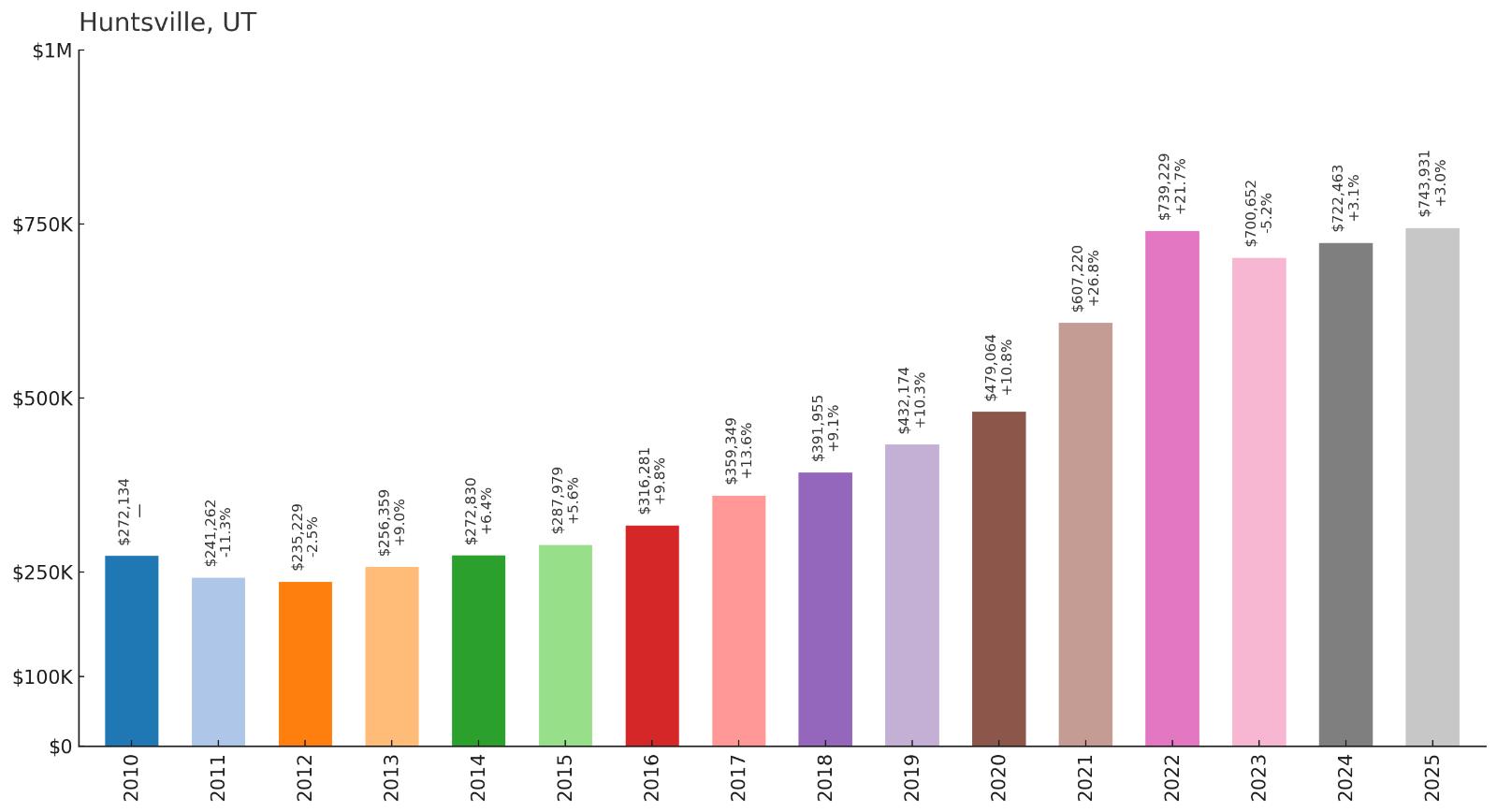
- 2010: $272,134
- 2011: $241,262
- 2012: $235,229
- 2013: $256,359
- 2014: $272,830
- 2015: $287,979
- 2016: $316,281
- 2017: $359,349
- 2018: $391,955
- 2019: $432,174
- 2020: $479,064
- 2021: $607,220
- 2022: $739,229
- 2023: $700,652
- 2024: $722,463
- 2025: $743,931
Huntsville has posted remarkable 173% growth since 2010, with median prices now at $743,931. The town recovered from early 2010s softness to show consistent appreciation, culminating in dramatic increases during 2021-2022. Recent years have shown some moderation but values remain at historically high levels.
Why Huntsville?
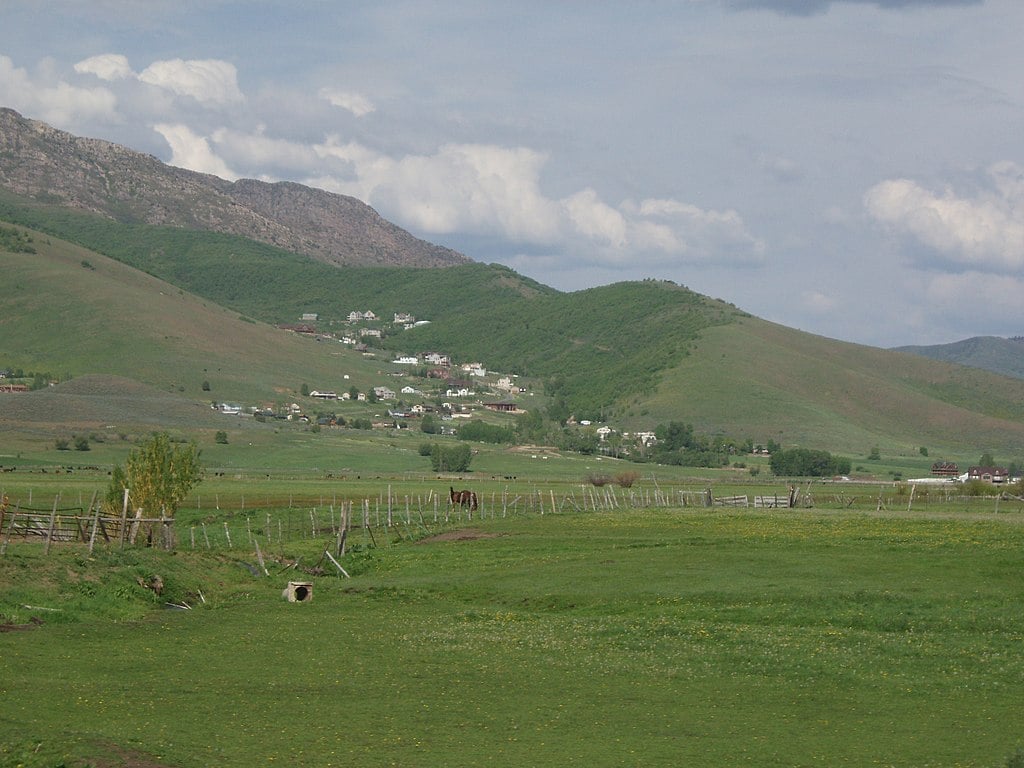
Why are people willing to pay so much to live here? What’s special about it?
Huntsville offers a unique lakeside mountain community experience with Pineview Reservoir as the centerpiece. Residents enjoy year-round recreation including boating, fishing, skiing at nearby Snowbasin, and hiking in the surrounding mountains. The town maintains a resort-like atmosphere while providing a genuine small-town community feel.
How Huntsville Rose to Prominence
Founded in the 1860s in the Ogden Valley, Huntsville remained a quiet farming community until Pineview Dam created the reservoir in 1957. The lake transformed the area into a recreational destination, attracting summer homes and year-round residents. As Utah’s population grew and Snowbasin ski resort expanded, Huntsville became increasingly desirable for both vacation and primary homes.
3 Interesting Tidbits
1. Lake Life – Pineview Reservoir provides boating, fishing, and water sports right in town, making it a premier lake community in Utah.
2. Ski Access – Snowbasin ski resort is just minutes away, offering world-class skiing that hosted events during the 2002 Olympics.
3. Historic Charm – The town maintains several historic buildings and celebrates its pioneer heritage while embracing modern recreation.
24. Oakley – 249% Home Price Increase Since 2010
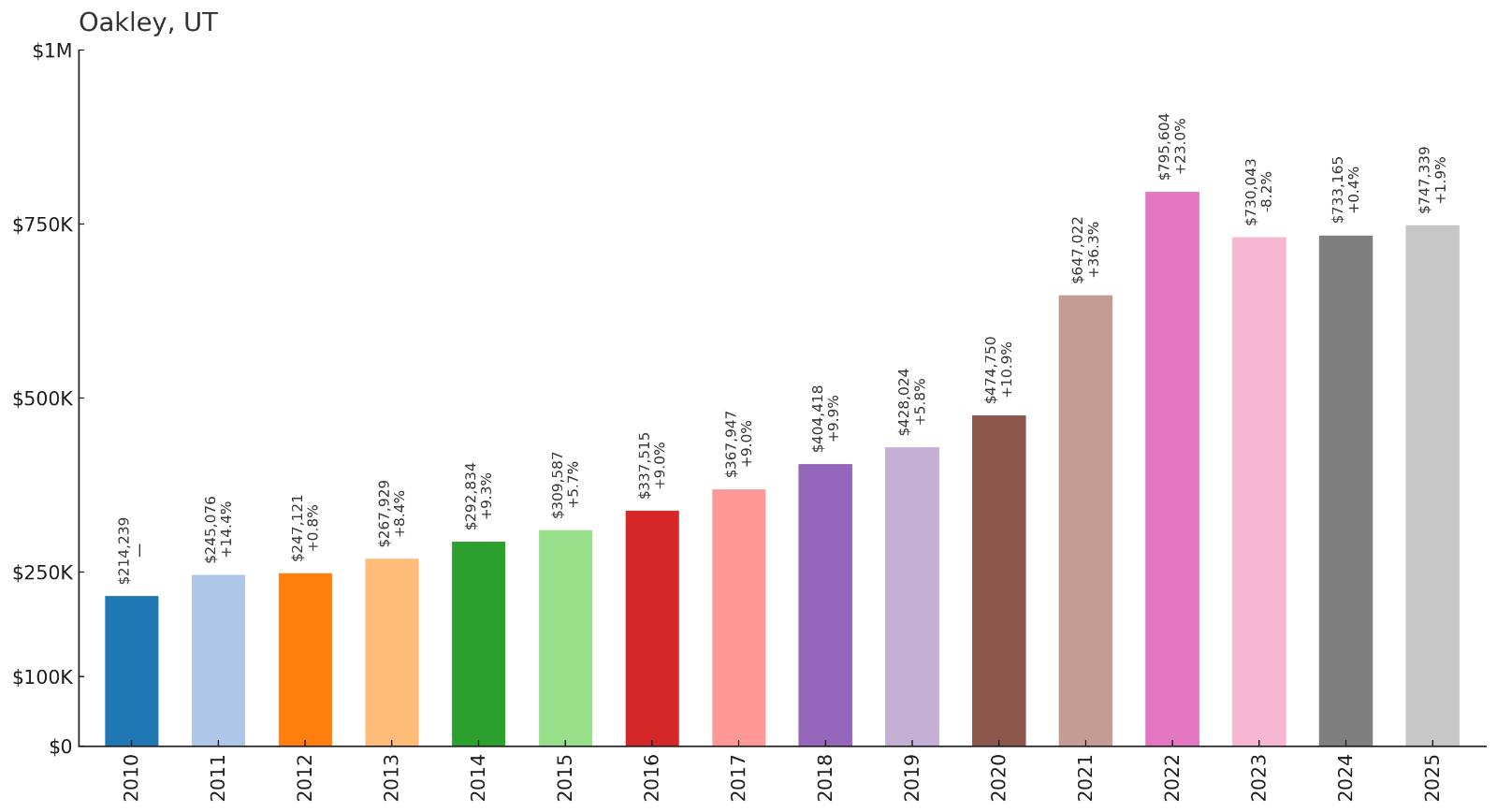
- 2010: $214,239
- 2011: $245,076
- 2012: $247,121
- 2013: $267,929
- 2014: $292,834
- 2015: $309,587
- 2016: $337,515
- 2017: $367,947
- 2018: $404,418
- 2019: $428,024
- 2020: $474,750
- 2021: $647,022
- 2022: $795,604
- 2023: $730,043
- 2024: $733,165
- 2025: $747,339
Oakley has experienced exceptional 249% growth since 2010, reaching $747,339 by 2025. The town showed steady appreciation throughout the 2010s before surging dramatically during the pandemic boom. Despite some volatility in recent years, values remain substantially elevated from their starting point.
Why Oakley?
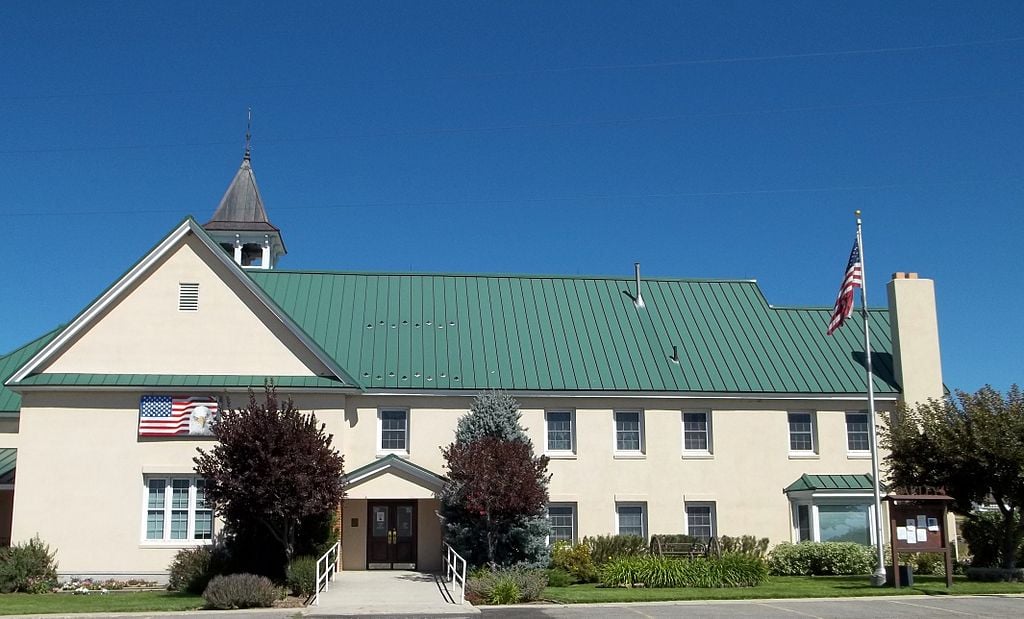
Why are people willing to pay so much to live here? What’s special about it?
Oakley provides authentic small-town living in a beautiful mountain valley setting near Park City’s recreational opportunities. Residents appreciate the agricultural heritage, wide-open spaces, and strong community bonds that define this historic town. The location offers rural tranquility while maintaining access to world-class skiing and outdoor recreation.
How Oakley Rose to Prominence
Established in the 1870s as a farming community in the Kamas Valley, Oakley remained largely agricultural until Park City’s ski industry expansion brought new attention to the area. As Park City became increasingly expensive, buyers began looking to nearby communities like Oakley for more affordable options with similar access to recreation. The town’s charm and proximity to outdoor activities have made it increasingly popular.
3 Interesting Tidbits
1. Agricultural Heritage – Oakley maintains active farming and ranching operations, preserving its rural character despite growing popularity.
2. Park City Access – The town provides relatively affordable access to Park City’s world-class skiing and recreational opportunities.
3. Valley Setting – Oakley sits in the scenic Kamas Valley, surrounded by mountains and offering stunning views in all directions.
23. Rockville – 7% Home Price Increase Since 2010
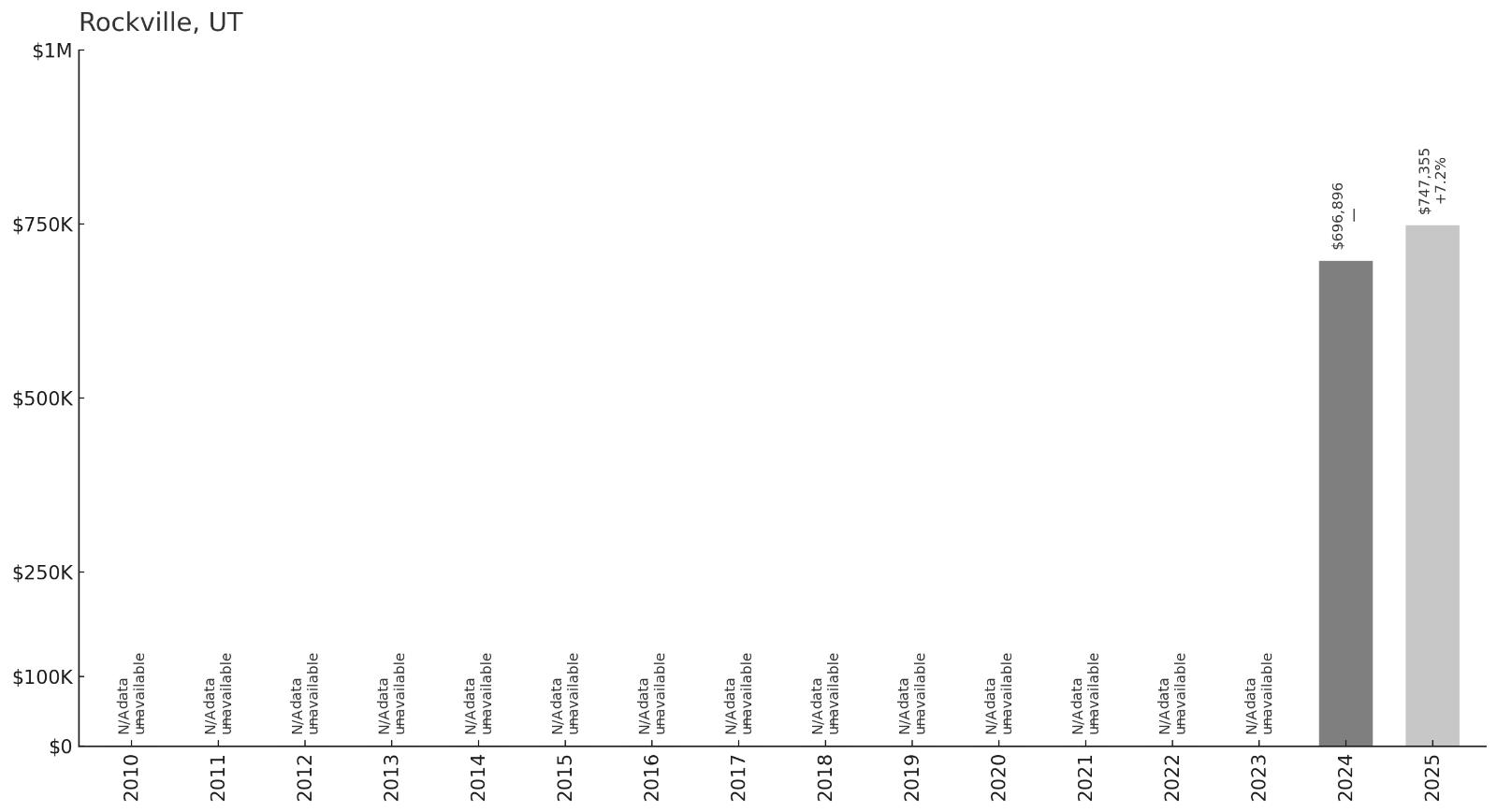
- 2010: N/A
- 2011: N/A
- 2012: N/A
- 2013: N/A
- 2014: N/A
- 2015: N/A
- 2016: N/A
- 2017: N/A
- 2018: N/A
- 2019: N/A
- 2020: N/A
- 2021: N/A
- 2022: N/A
- 2023: N/A
- 2024: $696,896
- 2025: $747,355
Rockville shows modest 7% growth with limited data available only from 2024-2025. The median price reached $747,355 by 2025, representing solid appreciation in a short timeframe. This southern Utah community near Zion National Park commands premium prices for its unique location and natural beauty.
Why Rockville?
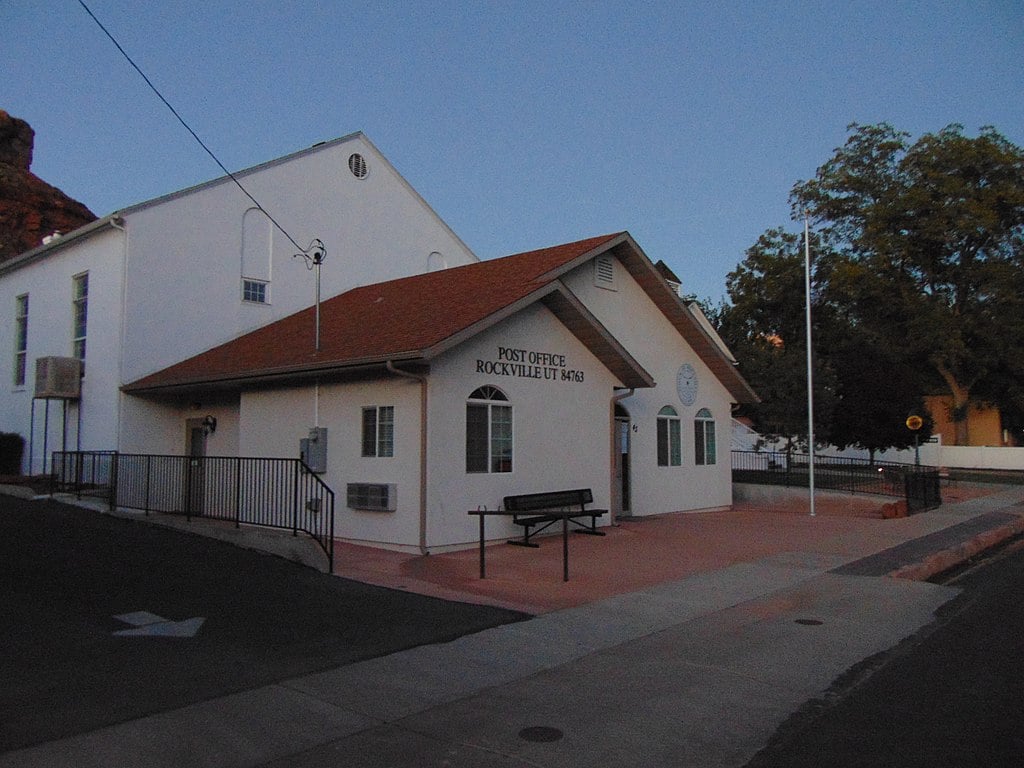
Why are people willing to pay so much to live here? What’s special about it?
Rockville offers unparalleled access to Zion National Park’s red rock country and outdoor recreation opportunities. Residents enjoy a desert mountain lifestyle with world-class hiking, climbing, and scenic beauty right outside their doors. The town provides a gateway to one of America’s most beloved national parks while maintaining a small-town atmosphere.
How Rockville Rose to Prominence
Originally settled by Mormon pioneers in the 1860s along the Virgin River, Rockville remained a quiet farming community until Zion National Park’s popularity exploded in recent decades. As outdoor recreation and national park tourism grew, Rockville became increasingly desirable for both vacation homes and permanent residences. The town’s location at Zion’s doorstep makes it uniquely valuable.
3 Interesting Tidbits
1. Zion Gateway – Rockville sits at the entrance to Zion National Park, providing unmatched access to one of Utah’s premier destinations.
2. Red Rock Beauty – The town is surrounded by stunning red rock formations and desert landscapes that define southern Utah’s appeal.
3. Outdoor Paradise – Residents enjoy world-class hiking, rock climbing, and canyoneering opportunities right in their backyard.
22. Mapleton – 164% Home Price Increase Since 2010
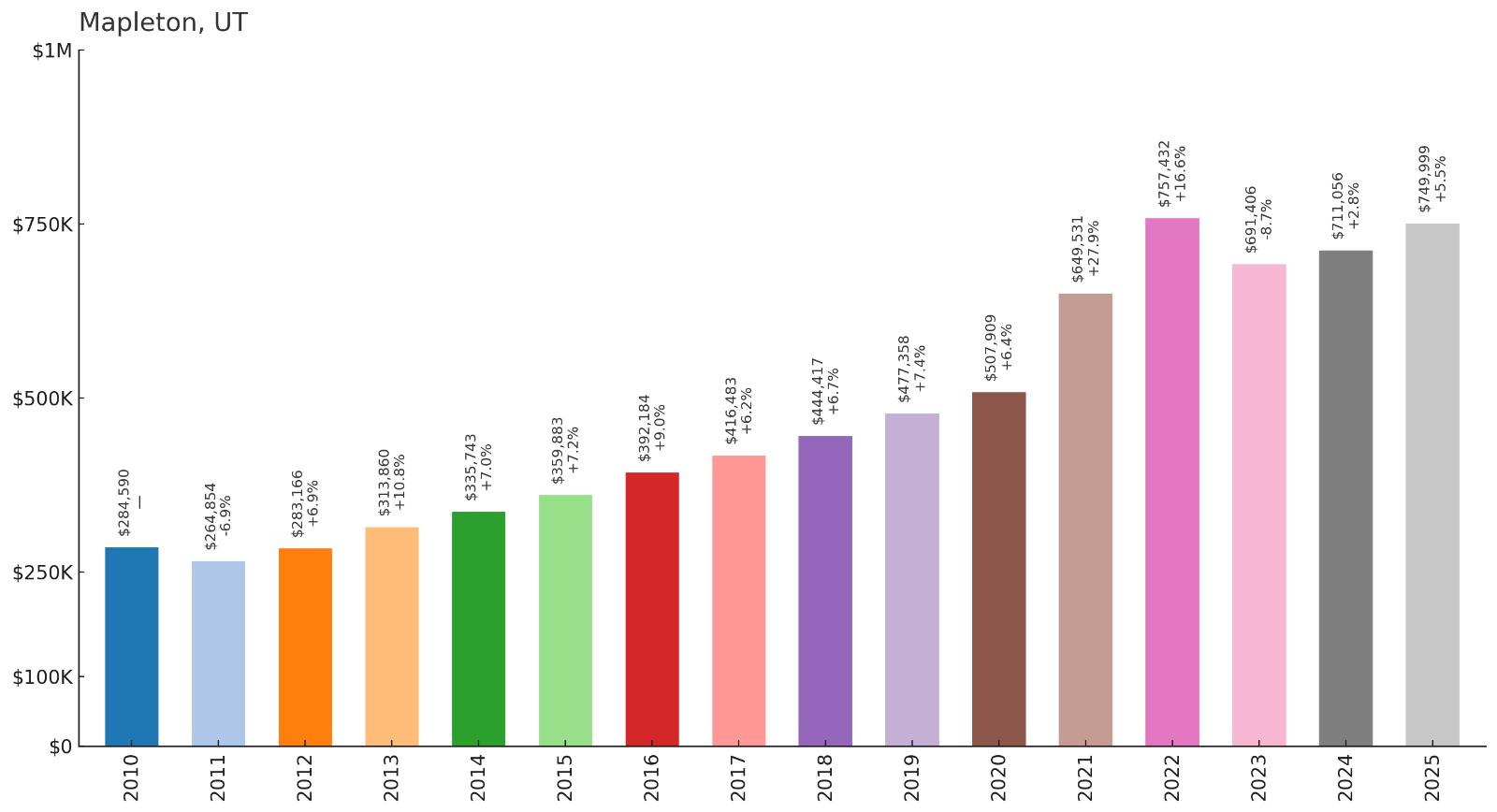
- 2010: $284,590
- 2011: $264,854
- 2012: $283,166
- 2013: $313,860
- 2014: $335,743
- 2015: $359,883
- 2016: $392,184
- 2017: $416,483
- 2018: $444,417
- 2019: $477,358
- 2020: $507,909
- 2021: $649,531
- 2022: $757,432
- 2023: $691,406
- 2024: $711,056
- 2025: $749,999
Mapleton has achieved solid 164% growth since 2010, reaching $749,999 by 2025. The city showed consistent appreciation throughout the 2010s before experiencing dramatic increases during the pandemic years. Despite some volatility in 2023, values have resumed their upward trajectory.
Why Mapleton?
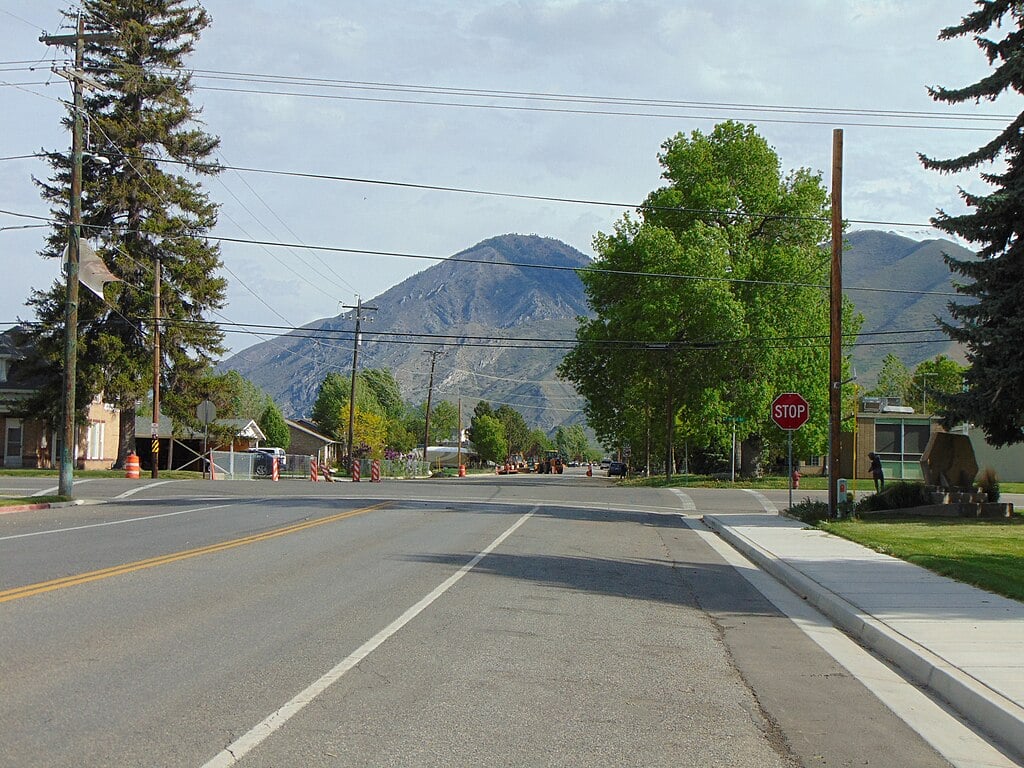
Why are people willing to pay so much to live here? What’s special about it?
Mapleton offers small-town charm with mountain views and easy access to Utah Valley’s employment centers. Families are drawn to the safe neighborhoods, excellent schools, and strong community spirit that characterizes this growing city. The location provides suburban amenities while maintaining a more relaxed pace than larger cities.
How Mapleton Rose to Prominence
Originally an agricultural community at the base of the Wasatch Mountains, Mapleton transformed as Utah County experienced rapid growth. The city’s strategic location and available land made it attractive for new development seeking mountain views and family-friendly neighborhoods. As Utah’s Silicon Slopes expanded, Mapleton became a desirable location for professionals wanting suburban living with short commutes.
3 Interesting Tidbits
1. Mountain Views – Mapleton offers stunning views of the Wasatch Mountains from most neighborhoods, creating a scenic suburban environment.
2. Family Focus – The city has invested heavily in parks, trails, and family amenities that make it attractive to growing families.
3. Tech Access – Mapleton provides easy access to Utah County’s technology corridor while maintaining a small-town atmosphere.
21. Fruit Heights – 154% Home Price Increase Since 2010
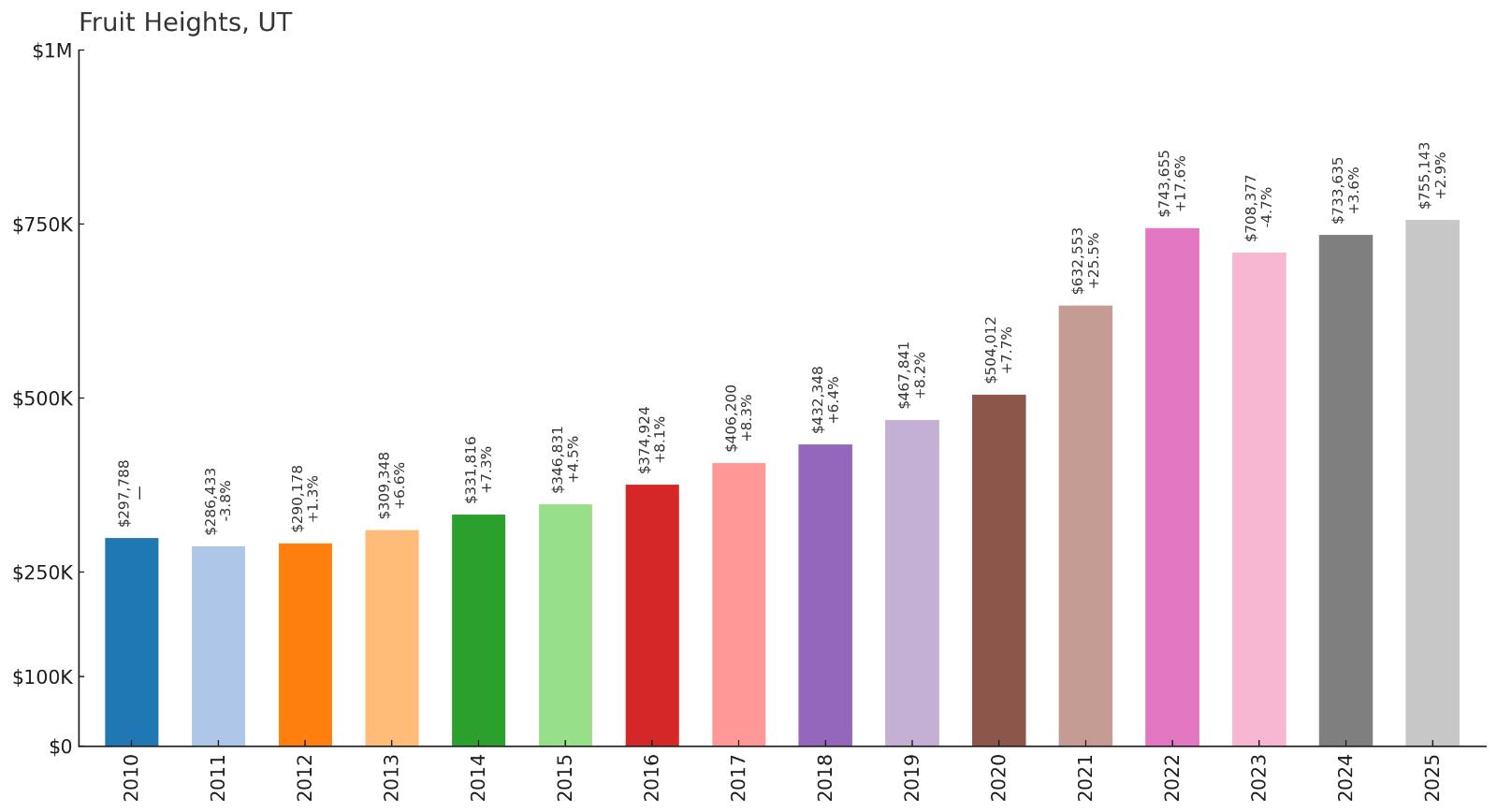
- 2010: $297,788
- 2011: $286,433
- 2012: $290,178
- 2013: $309,348
- 2014: $331,816
- 2015: $346,831
- 2016: $374,924
- 2017: $406,200
- 2018: $432,348
- 2019: $467,841
- 2020: $504,012
- 2021: $632,553
- 2022: $743,655
- 2023: $708,377
- 2024: $733,635
- 2025: $755,143
Fruit Heights has posted strong 154% growth since 2010, with median prices now at $755,143. The city showed steady appreciation through the 2010s before accelerating during the pandemic boom. Recent years have shown some volatility but values remain well above historical levels.
Why Fruit Heights?

Why are people willing to pay so much to live here? What’s special about it?
Fruit Heights offers stunning views of the Great Salt Lake and Wasatch Mountains from an elevated location in Davis County. Residents enjoy large lots, custom homes, and a prestigious address while maintaining easy access to Salt Lake City and Ogden employment centers. The community provides an upscale suburban lifestyle with small-town character.
How Fruit Heights Rose to Prominence
Incorporated in 1939, Fruit Heights began as an agricultural area known for its fruit orchards. As the Wasatch Front developed, the city’s elevated location and large lots made it attractive to buyers seeking custom homes with views. The community carefully managed growth to preserve its character while becoming one of Davis County’s most desirable addresses.
3 Interesting Tidbits
1. Elevated Views – Fruit Heights sits on benches above the valley floor, offering panoramic views of the Great Salt Lake and surrounding mountains.
2. Orchard Heritage – The city’s name reflects its agricultural past as a fruit-growing region, though most orchards have given way to custom homes.
3. Custom Homes – Fruit Heights is known for large lots and custom-built homes that take advantage of the area’s natural beauty and views.
20. Cottonwood Heights – 160% Home Price Increase Since 2010
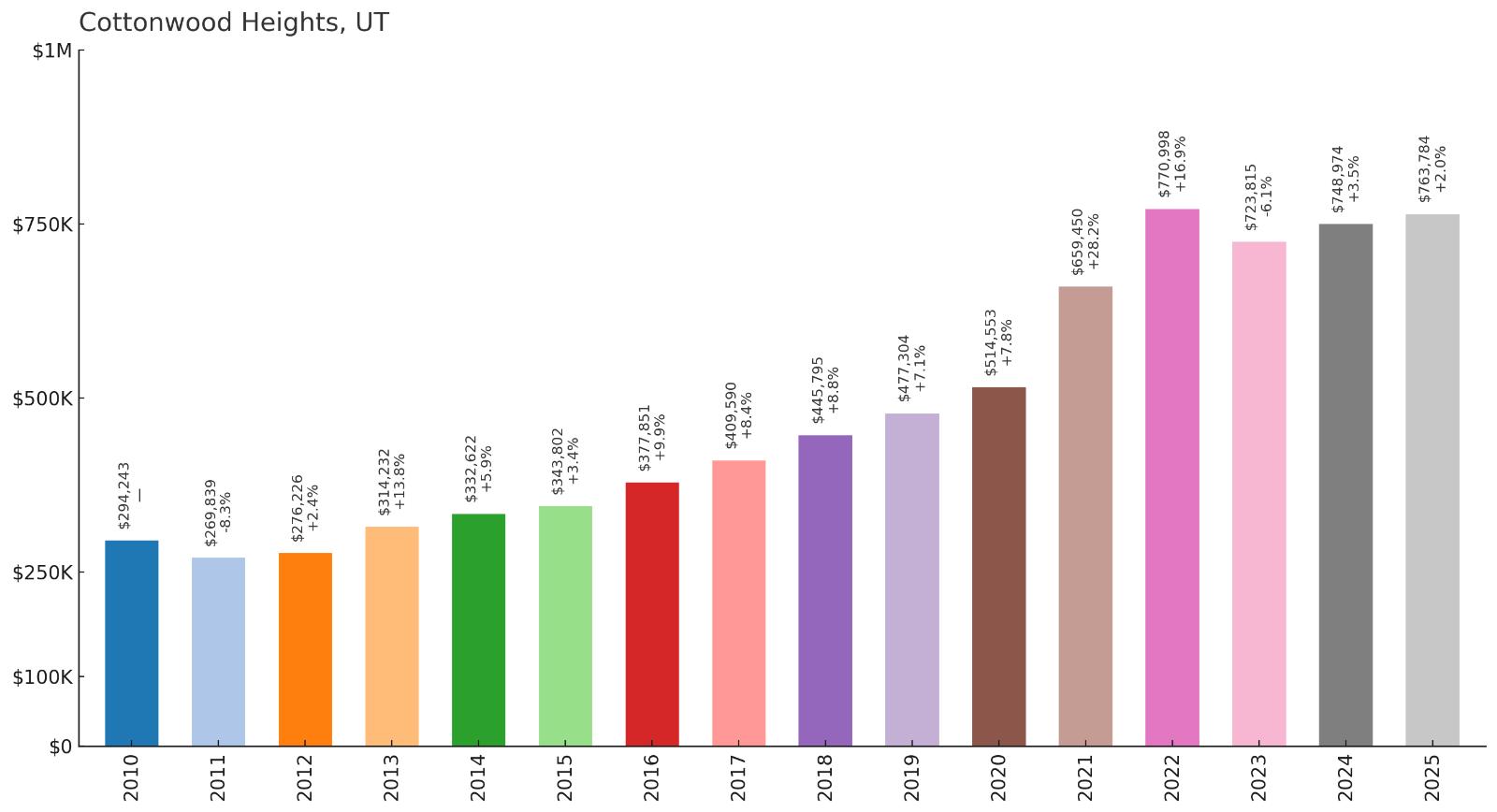
- 2010: $294,243
- 2011: $269,839
- 2012: $276,226
- 2013: $314,232
- 2014: $332,622
- 2015: $343,802
- 2016: $377,851
- 2017: $409,590
- 2018: $445,795
- 2019: $477,304
- 2020: $514,553
- 2021: $659,450
- 2022: $770,998
- 2023: $723,815
- 2024: $748,974
- 2025: $763,784
Cottonwood Heights has achieved impressive 160% growth since 2010, reaching $763,784 by 2025. The city recovered from early 2010s weakness to show strong appreciation, with dramatic increases during the pandemic period. Values have stabilized recently while maintaining their elevated status.
Why Cottonwood Heights?
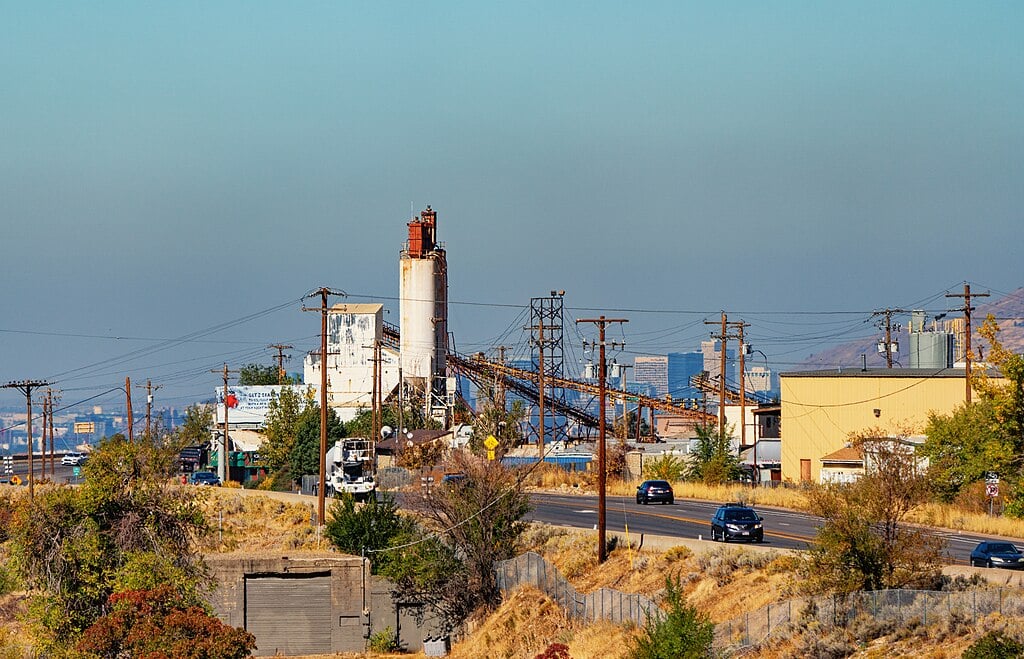
Why are people willing to pay so much to live here? What’s special about it?
Cottonwood Heights provides prime access to Little and Big Cottonwood Canyons’ world-class skiing while maintaining suburban convenience. Residents enjoy excellent schools, upscale neighborhoods, and easy access to both downtown Salt Lake City and mountain recreation. The location offers the perfect balance of urban amenities and outdoor adventure.
How Cottonwood Heights Rose to Prominence
Incorporated in 2004 from unincorporated Salt Lake County, Cottonwood Heights was created to preserve the area’s suburban character while providing municipal services. The city’s location at the mouth of the Cottonwood Canyons made it increasingly valuable as Utah’s ski industry grew. Its proximity to both downtown Salt Lake and world-class skiing made it a premium location.
3 Interesting Tidbits
1. Ski Access – Cottonwood Heights provides the closest suburban access to Alta, Snowbird, Brighton, and Solitude ski resorts.
2. New City – Incorporated in 2004, it’s one of Utah’s newest cities, formed to preserve suburban character and provide better services.
3. Canyon Gateway – The city serves as the primary gateway to the Cottonwood Canyons, making it a hub for outdoor recreation year-round.
19. Heber City – 201% Home Price Increase Since 2010

- 2010: $266,683
- 2011: $249,662
- 2012: $255,426
- 2013: $283,368
- 2014: $300,762
- 2015: $337,287
- 2016: $373,809
- 2017: $410,035
- 2018: $445,316
- 2019: $476,785
- 2020: $519,093
- 2021: $683,619
- 2022: $844,110
- 2023: $777,294
- 2024: $799,689
- 2025: $803,834
Heber City has delivered exceptional 201% growth since 2010, reaching $803,834 by 2025. The city showed consistent appreciation throughout the 2010s before experiencing dramatic increases during 2021-2022. Despite some cooling in 2023, values have resumed their upward climb in this popular mountain community.
Why Heber City?
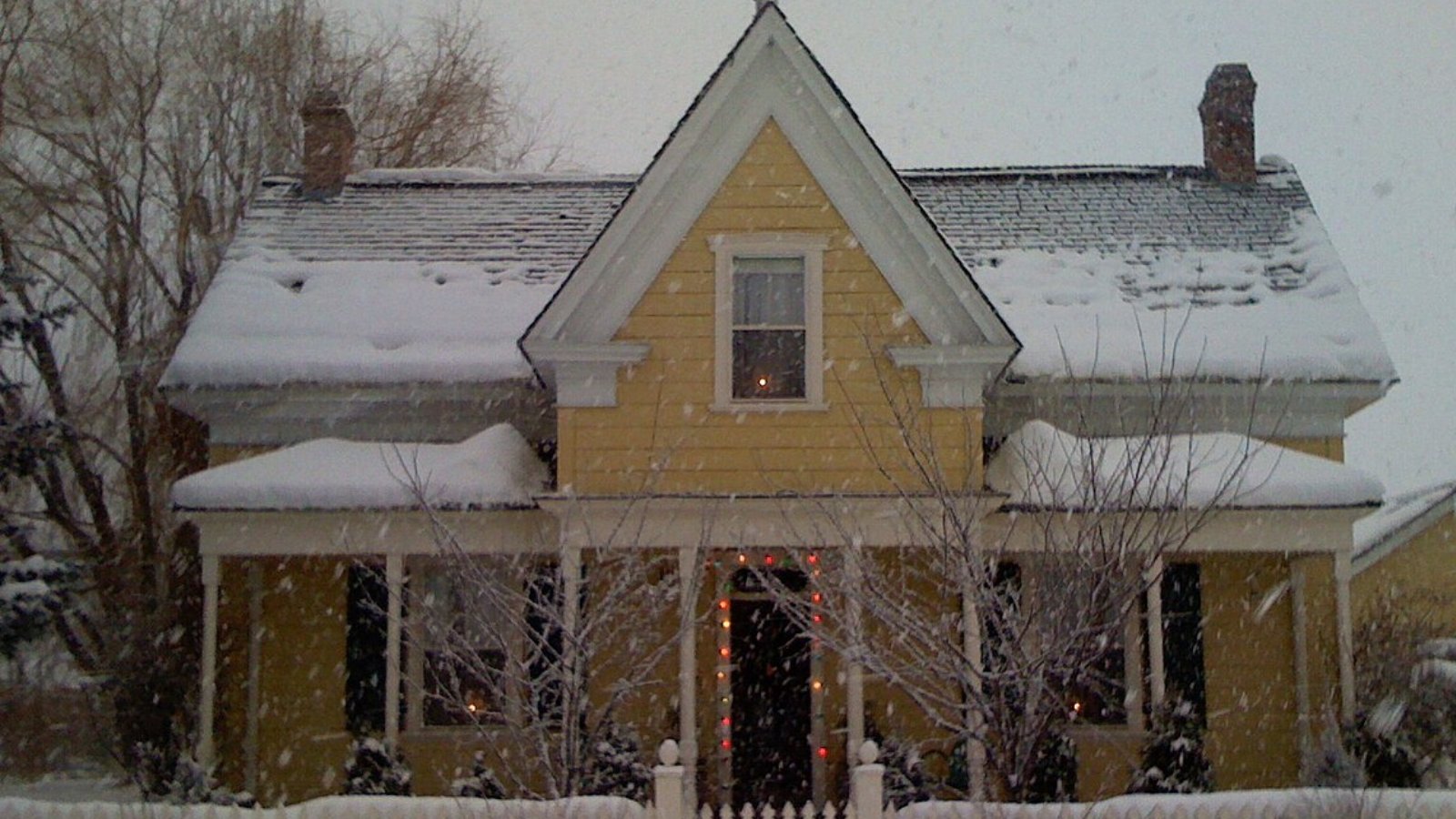
Why are people willing to pay so much to live here? What’s special about it?
Heber City offers authentic mountain living in the scenic Heber Valley while providing easy access to Park City’s world-class recreation. Residents enjoy small-town charm, agricultural heritage, and stunning mountain views while remaining close to skiing, hiking, and other outdoor activities. The community maintains its rural character despite growing popularity among those seeking mountain lifestyle.
How Heber City Rose to Prominence
Founded in the 1860s as a farming and ranching community in the Heber Valley, the city remained largely agricultural until Park City’s ski boom brought new attention to the area. As Park City became increasingly expensive, buyers discovered Heber City offered similar mountain access at more affordable prices. The city’s authentic western character and beautiful valley setting have made it increasingly popular for both primary and vacation homes.
3 Interesting Tidbits
1. Valley Setting – Heber City sits in the picturesque Heber Valley, surrounded by mountains and offering stunning 360-degree views.
2. Park City Access – The city provides more affordable mountain living while maintaining easy access to Park City’s recreational opportunities.
3. Agricultural Heritage – Heber City preserves its ranching and farming traditions despite increasing suburban development.
18. Draper – 141% Home Price Increase Since 2010

- 2010: $334,336
- 2011: $313,304
- 2012: $318,940
- 2013: $356,783
- 2014: $379,856
- 2015: $396,197
- 2016: $428,466
- 2017: $454,081
- 2018: $491,399
- 2019: $518,675
- 2020: $554,921
- 2021: $708,940
- 2022: $842,269
- 2023: $780,017
- 2024: $789,609
- 2025: $804,412
Draper has achieved solid 141% growth since 2010, with median prices reaching $804,412 by 2025. The city showed steady appreciation through the 2010s before surging during the pandemic boom. Recent research identifies Draper as having the highest median home prices among Utah’s large cities, reflecting its premium status.
Why Draper?
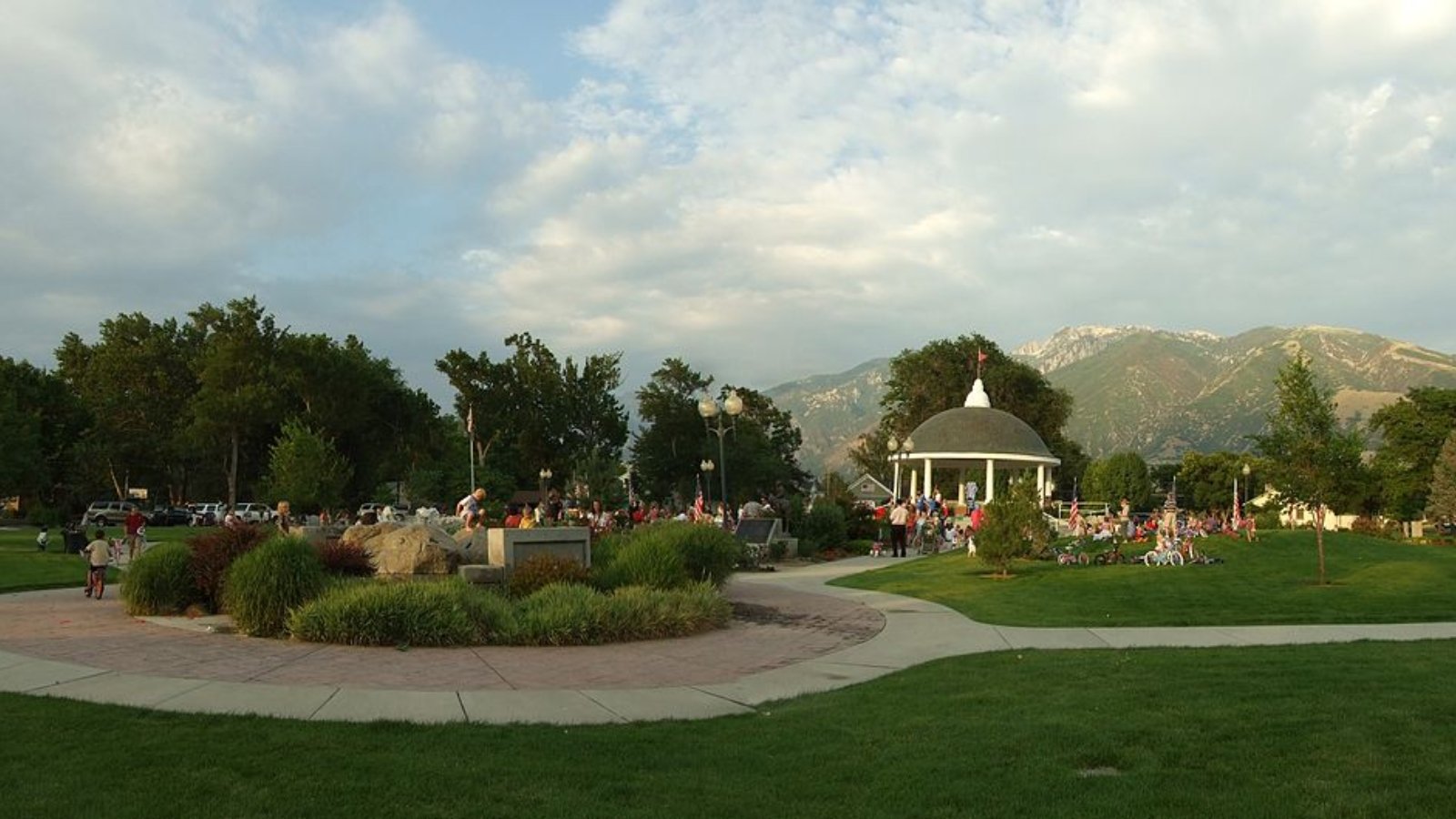
Why are people willing to pay so much to live here? What’s special about it?
Draper combines upscale suburban living with stunning mountain views and outdoor recreation access. Families are drawn to the excellent schools, newer neighborhoods, and proximity to both Silicon Slopes employment and mountain activities. The city offers luxury amenities while maintaining easy access to hiking trails and ski resorts that define Utah’s appeal.
How Draper Rose to Prominence
Originally a farming community, Draper transformed rapidly as Salt Lake Valley expanded southward in the 1990s and 2000s. The city’s location at the base of the Wasatch Mountains, combined with available land for development, made it attractive for upscale subdivisions. As Utah’s technology sector grew, Draper became a preferred location for professionals seeking luxury suburban living with mountain access.
3 Interesting Tidbits
1. Priciest Large City – Recent research shows Draper has the highest median home prices among Utah cities with more than 40,000 residents.
2. Tech Hub – The city sits at the heart of Utah’s Silicon Slopes, with major technology companies nearby providing high-paying employment.
3. Trail Access – Draper offers direct access to numerous hiking and biking trails in the Wasatch Mountains, including popular destinations like Bell Canyon.
17. New Harmony – 229% Home Price Increase Since 2010
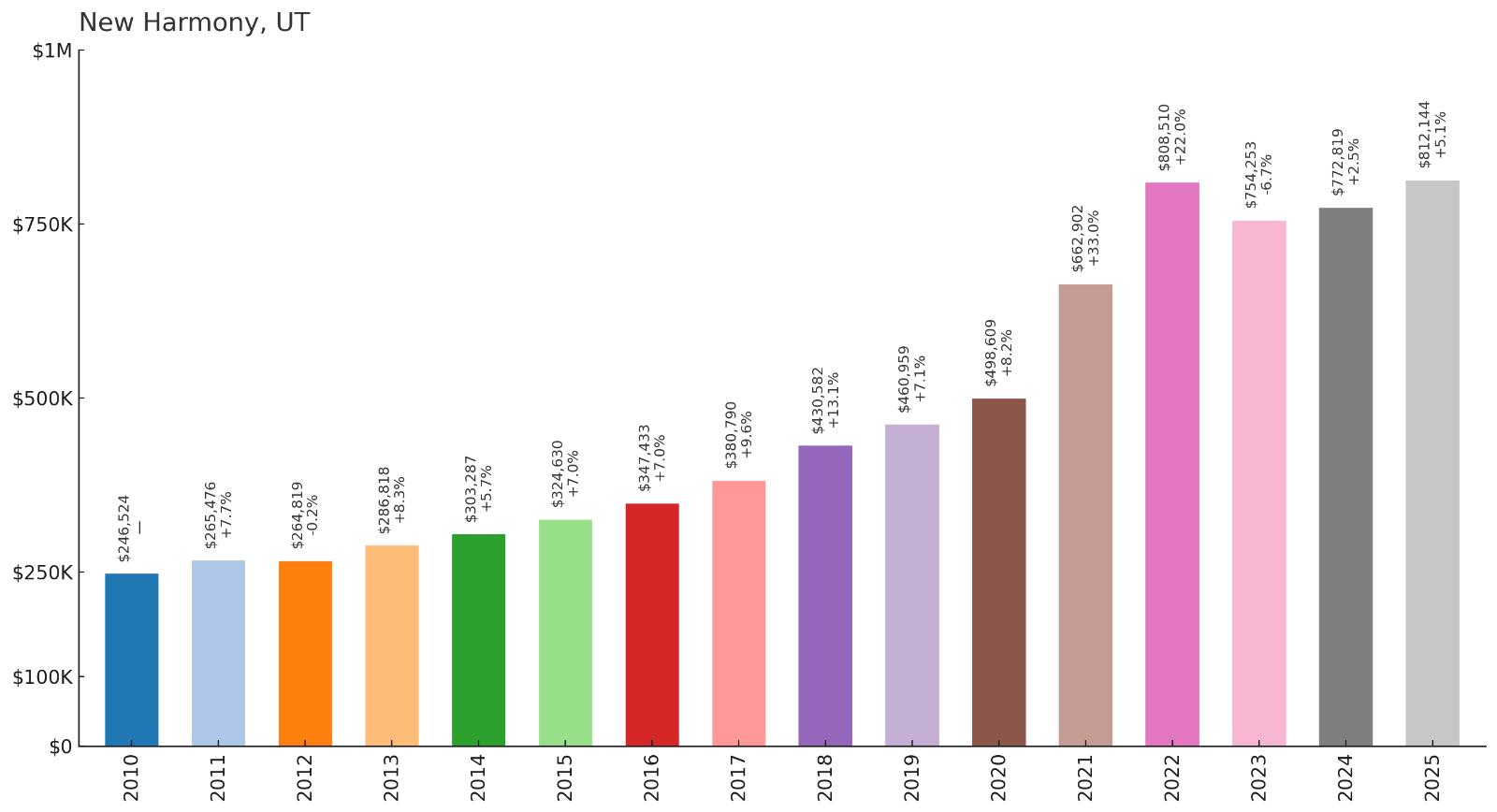
- 2010: $246,524
- 2011: $265,476
- 2012: $264,819
- 2013: $286,818
- 2014: $303,287
- 2015: $324,630
- 2016: $347,433
- 2017: $380,790
- 2018: $430,582
- 2019: $460,959
- 2020: $498,609
- 2021: $662,902
- 2022: $808,510
- 2023: $754,253
- 2024: $772,819
- 2025: $812,144
New Harmony has posted remarkable 229% growth since 2010, reaching $812,144 by 2025. The small southern Utah town showed steady appreciation through the 2010s before experiencing dramatic increases during the pandemic years. Despite some volatility, values remain substantially elevated from their starting point.
Why New Harmony?

Why are people willing to pay so much to live here? What’s special about it?
New Harmony offers a peaceful desert mountain lifestyle with stunning red rock scenery and proximity to Zion National Park. Residents enjoy wide-open spaces, dark night skies, and access to world-class hiking and outdoor recreation. The community provides an escape from urban life while maintaining basic amenities and services.
How New Harmony Rose to Prominence
Founded by Mormon pioneers in the 1860s, New Harmony remained a quiet farming community until southern Utah’s natural beauty began attracting more visitors and residents. As Zion National Park’s popularity exploded and outdoor recreation became more important to buyers, New Harmony’s location and character became increasingly valuable. The town offers authentic small-town living in one of Utah’s most scenic regions.
3 Interesting Tidbits
1. Dark Skies – New Harmony’s remote location provides exceptional stargazing opportunities with minimal light pollution.
2. Red Rock Country – The town sits in Utah’s stunning red rock region, offering scenic beauty and outdoor recreation access.
3. Small Scale – New Harmony maintains its small-town character with a tight-knit community and rural atmosphere.
16. Holladay – 152% Home Price Increase Since 2010
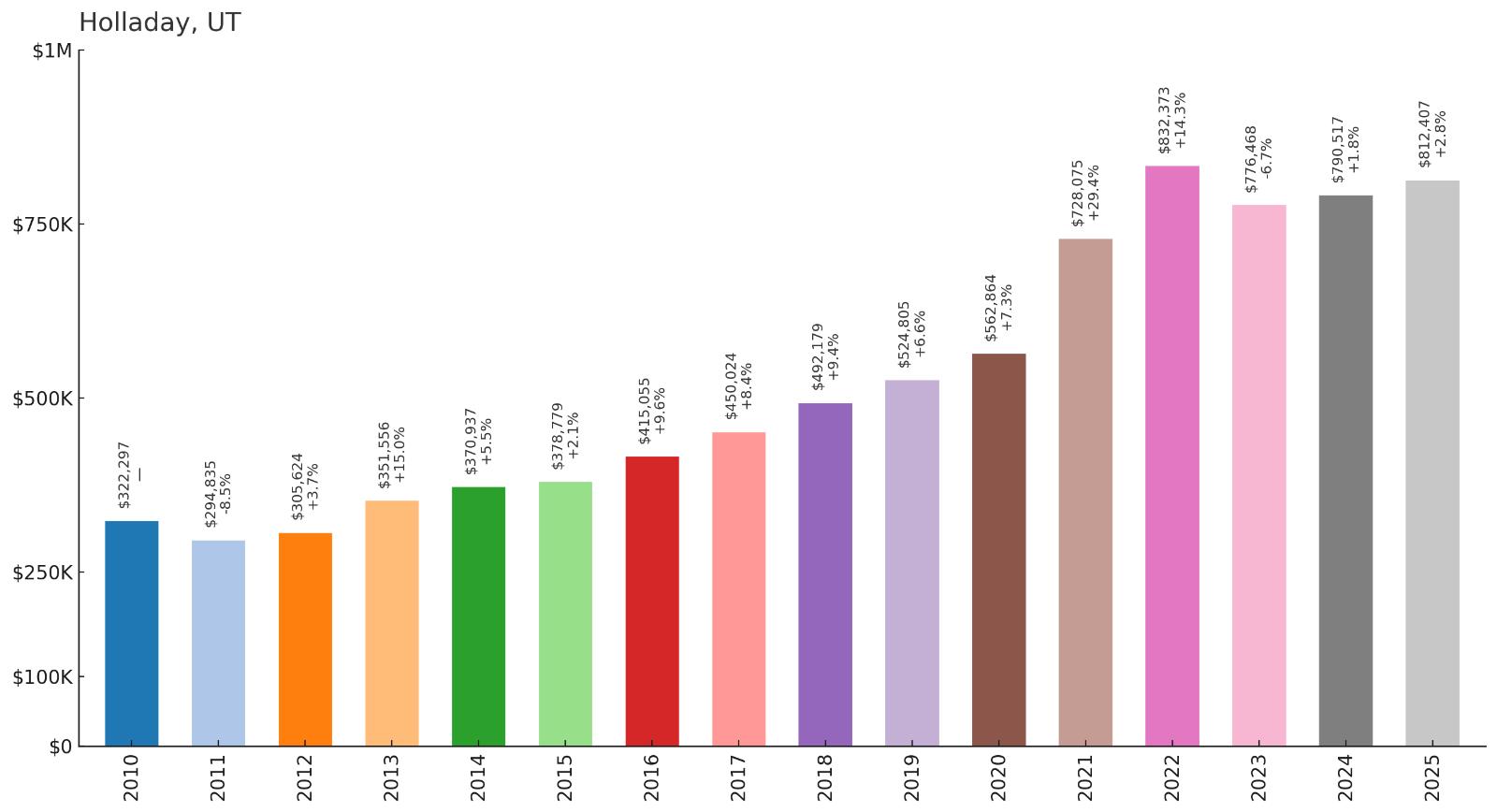
- 2010: $322,297
- 2011: $294,835
- 2012: $305,624
- 2013: $351,556
- 2014: $370,937
- 2015: $378,779
- 2016: $415,055
- 2017: $450,024
- 2018: $492,179
- 2019: $524,805
- 2020: $562,864
- 2021: $728,075
- 2022: $832,373
- 2023: $776,468
- 2024: $790,517
- 2025: $812,407
Holladay has achieved strong 152% growth since 2010, with median prices now at $812,407. The city showed steady appreciation through most of the period before accelerating during the pandemic boom. Despite some recent volatility, values remain well above historical levels in this established Salt Lake County community.
Why Holladay?
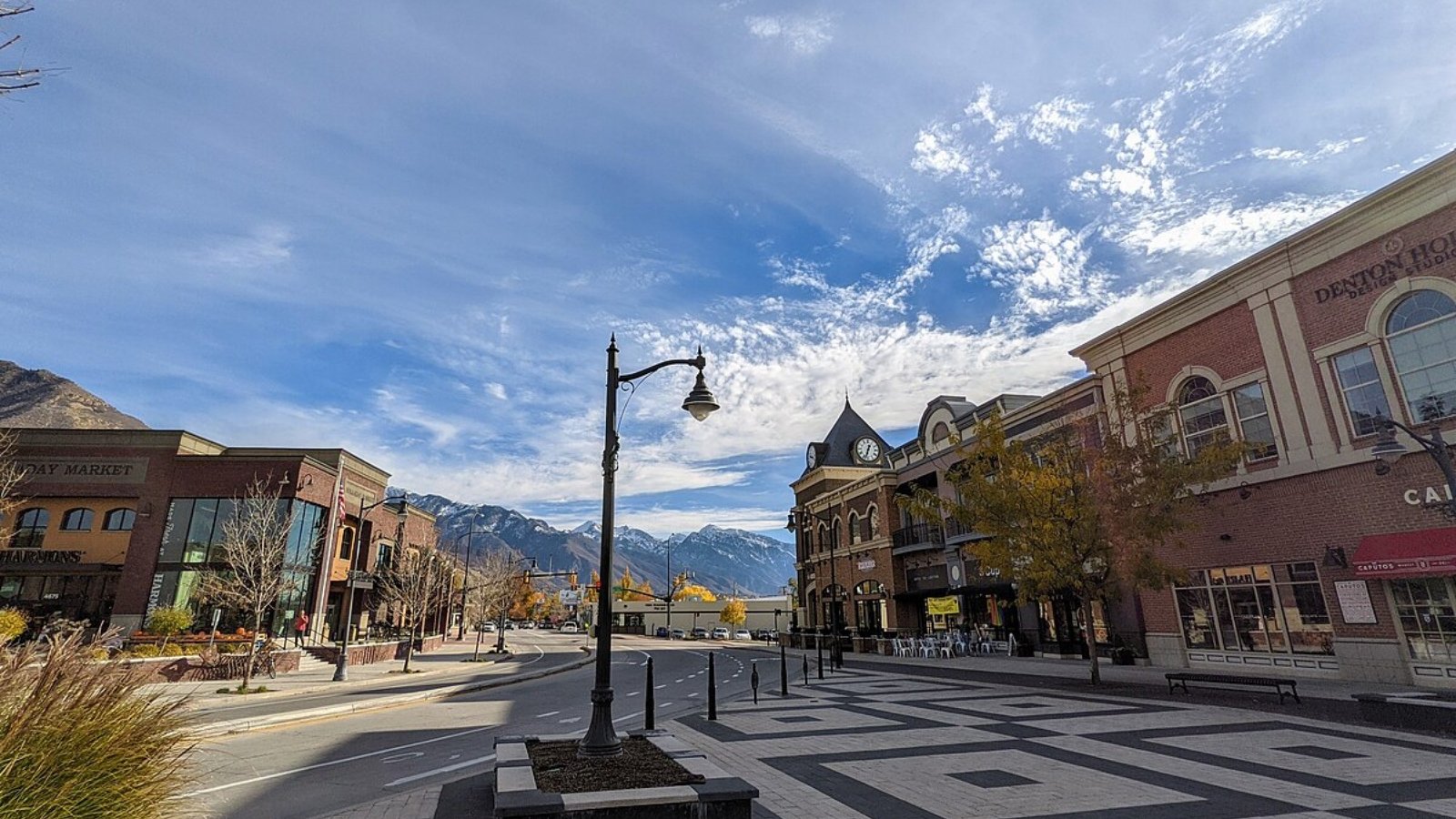
Why are people willing to pay so much to live here? What’s special about it?
Holladay offers an established upscale suburban lifestyle with mature neighborhoods and excellent access to both downtown Salt Lake City and mountain recreation. Residents value the tree-lined streets, quality schools, and central location that provides easy access to employment, entertainment, and outdoor activities. The community maintains a prestigious address while offering diverse housing options.
How Holladay Rose to Prominence
Incorporated in 1999 from unincorporated Salt Lake County, Holladay was created to preserve the area’s suburban character and provide better municipal services. The area had long been considered one of Salt Lake Valley’s more desirable locations due to its central position and established neighborhoods. The city’s incorporation helped maintain property values and community standards.
3 Interesting Tidbits
1. Central Location – Holladay sits in the heart of Salt Lake Valley, providing easy access to downtown, mountains, and surrounding communities.
2. Mature Neighborhoods – The city features established tree-lined streets and well-maintained neighborhoods that have been desirable for decades.
3. Recent Incorporation – Holladay incorporated in 1999 to maintain local control and preserve its suburban character.
15. Eden – 120% Home Price Increase Since 2010
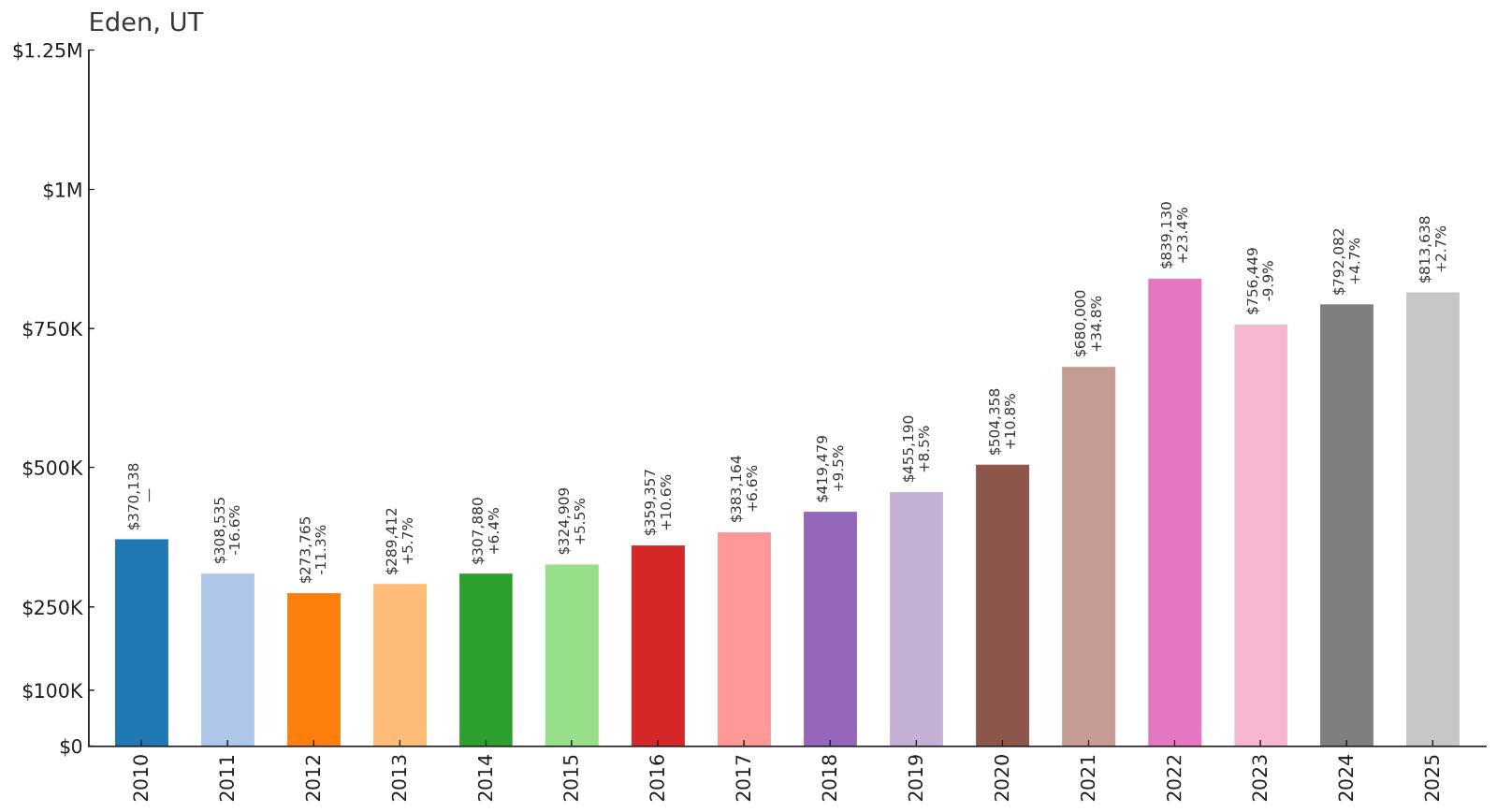
- 2010: $370,138
- 2011: $308,535
- 2012: $273,765
- 2013: $289,412
- 2014: $307,880
- 2015: $324,909
- 2016: $359,357
- 2017: $383,164
- 2018: $419,479
- 2019: $455,190
- 2020: $504,358
- 2021: $680,000
- 2022: $839,130
- 2023: $756,449
- 2024: $792,082
- 2025: $813,638
Eden has posted solid 120% growth since 2010, reaching $813,638 by 2025. The mountain community experienced significant volatility in the early 2010s before establishing consistent appreciation that accelerated dramatically during the pandemic years. Values have stabilized recently while maintaining their elevated status.
Why Eden?

Why are people willing to pay so much to live here? What’s special about it?
Eden provides mountain living with easy access to world-class skiing at Snowbasin and Powder Mountain. Residents enjoy a rural atmosphere with large lots and mountain views while remaining close to Ogden Valley’s recreational opportunities. The community offers an authentic mountain lifestyle without the crowds of more popular ski destinations.
How Eden Rose to Prominence
Located in the Ogden Valley, Eden began as an agricultural community serving the surrounding farming and ranching operations. As Utah’s ski industry developed and outdoor recreation became more popular, Eden’s location near multiple ski resorts made it increasingly attractive. The town provides a more affordable alternative to Park City while offering similar mountain access and recreational opportunities.
3 Interesting Tidbits
1. Ski Access – Eden sits between Snowbasin and Powder Mountain ski resorts, providing easy access to diverse skiing experiences.
2. Mountain Valley – The town is nestled in the scenic Ogden Valley, surrounded by mountains and offering stunning natural beauty.
3. Rural Character – Eden maintains its agricultural heritage and rural atmosphere despite increasing recreational development.
14. Genola – 218% Home Price Increase Since 2010
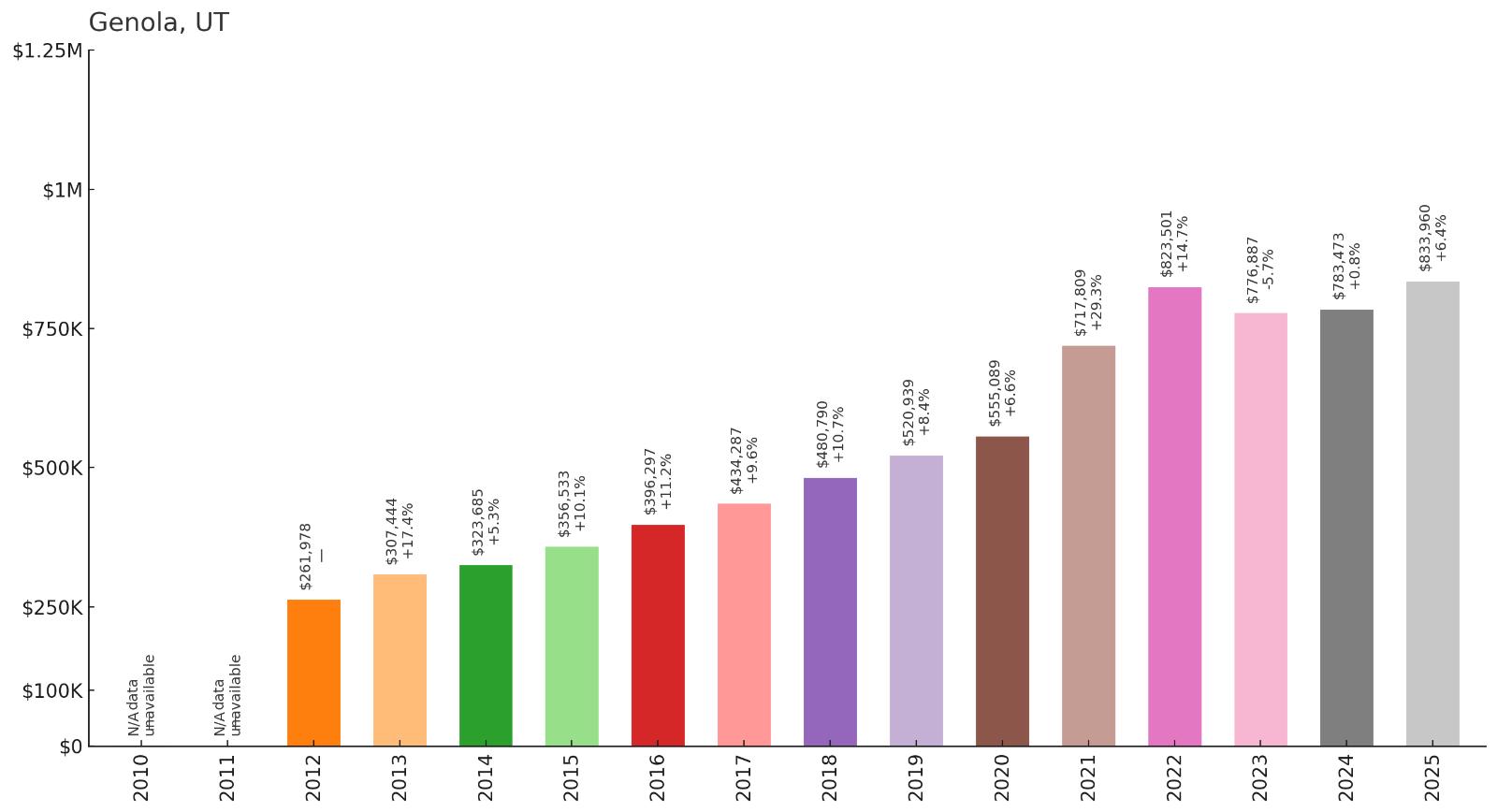
- 2010: N/A
- 2011: N/A
- 2012: $261,978
- 2013: $307,444
- 2014: $323,685
- 2015: $356,533
- 2016: $396,297
- 2017: $434,287
- 2018: $480,790
- 2019: $520,939
- 2020: $555,089
- 2021: $717,809
- 2022: $823,501
- 2023: $776,887
- 2024: $783,473
- 2025: $833,960
Genola has achieved exceptional 218% growth since data became available in 2012, reaching $833,960 by 2025. The small Utah County community showed consistent appreciation through the 2010s before experiencing dramatic increases during the pandemic years. Recent values have stabilized while remaining at historically high levels.
Why Genola?
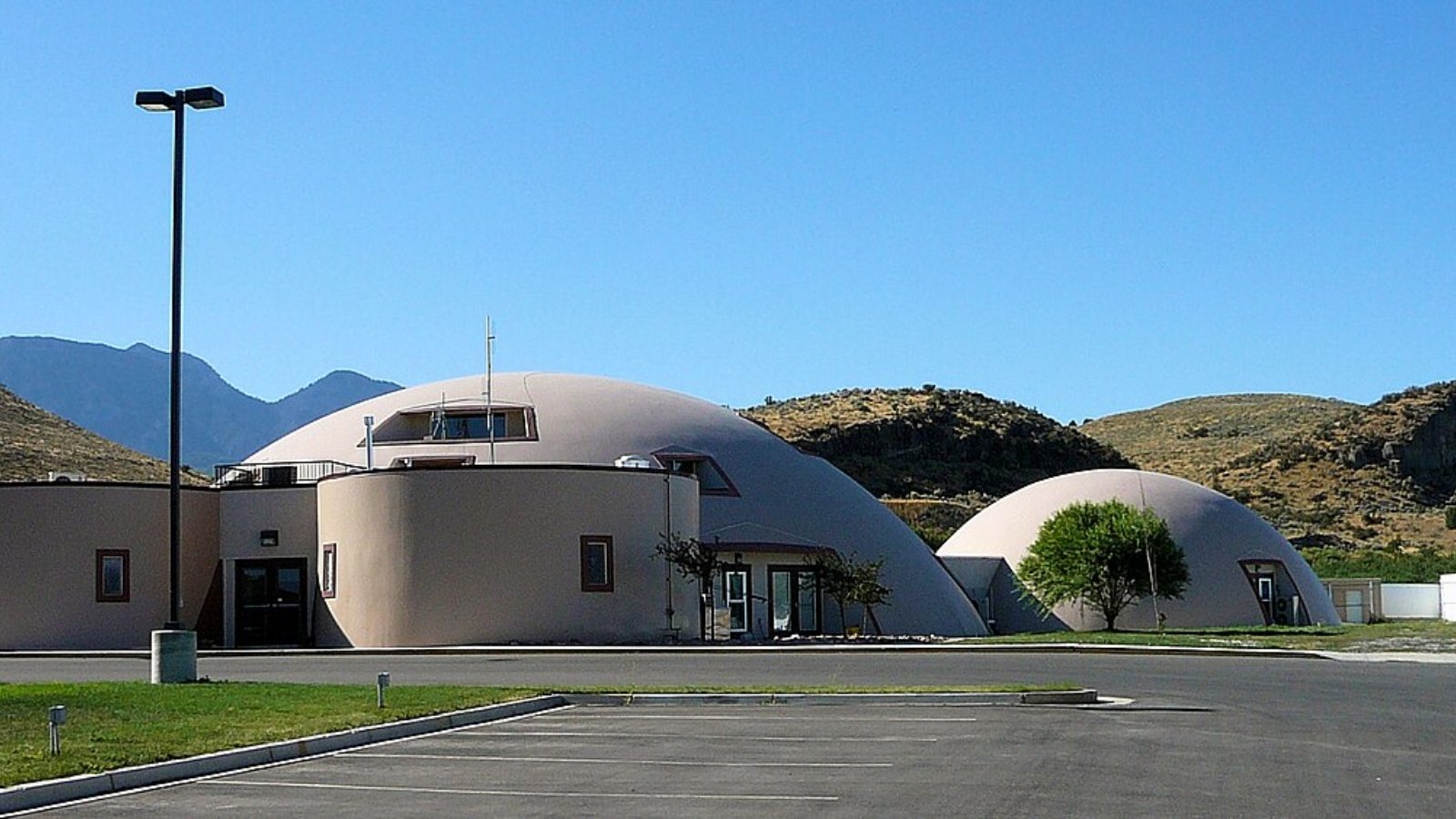
Why are people willing to pay so much to live here? What’s special about it?
Genola offers rural living with large lots and agricultural character while remaining accessible to Utah County’s employment centers. Residents value the small-town atmosphere, excellent schools, and wide-open spaces that allow for various lifestyle choices including horses and farming. The community provides authentic rural living without sacrificing modern conveniences.
How Genola Rose to Prominence
Originally an agricultural community in Utah County, Genola maintained its rural character as surrounding areas experienced rapid suburban development. The town’s large lots and agricultural zoning attracted buyers seeking space for horses, gardens, and rural pursuits. As Utah County’s population grew and land became scarce, Genola’s rural properties became increasingly valuable.
3 Interesting Tidbits
1. Agricultural Heritage – Genola maintains active farming and ranching operations, preserving its rural character and agricultural traditions.
2. Large Lots – The community is known for spacious properties that allow for horses, gardens, and various rural pursuits.
3. Rural Zoning – Genola’s zoning preserves agricultural uses and large lot sizes, maintaining its small-town character.
13. Wallsburg – 66% Home Price Increase Since 2010
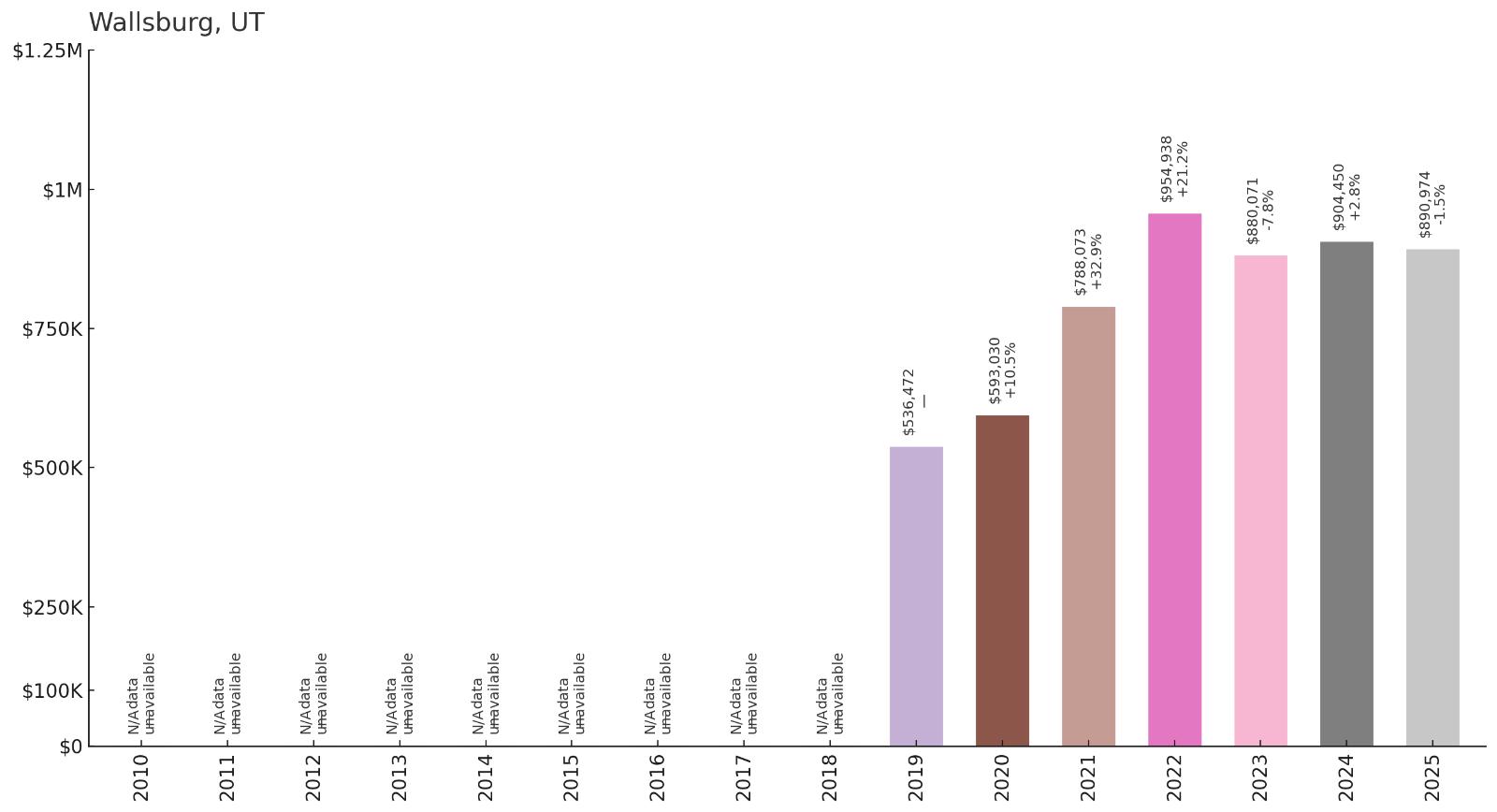
- 2010: N/A
- 2011: N/A
- 2012: N/A
- 2013: N/A
- 2014: N/A
- 2015: N/A
- 2016: N/A
- 2017: N/A
- 2018: N/A
- 2019: $536,472
- 2020: $593,030
- 2021: $788,073
- 2022: $954,938
- 2023: $880,071
- 2024: $904,450
- 2025: $890,974
Wallsburg shows 66% growth with limited data available from 2019 onward, reaching $890,974 by 2025. The small mountain community experienced dramatic increases during 2021-2022 before showing some volatility in recent years. Despite the fluctuations, values remain substantially elevated from their starting point.
Why Wallsburg?
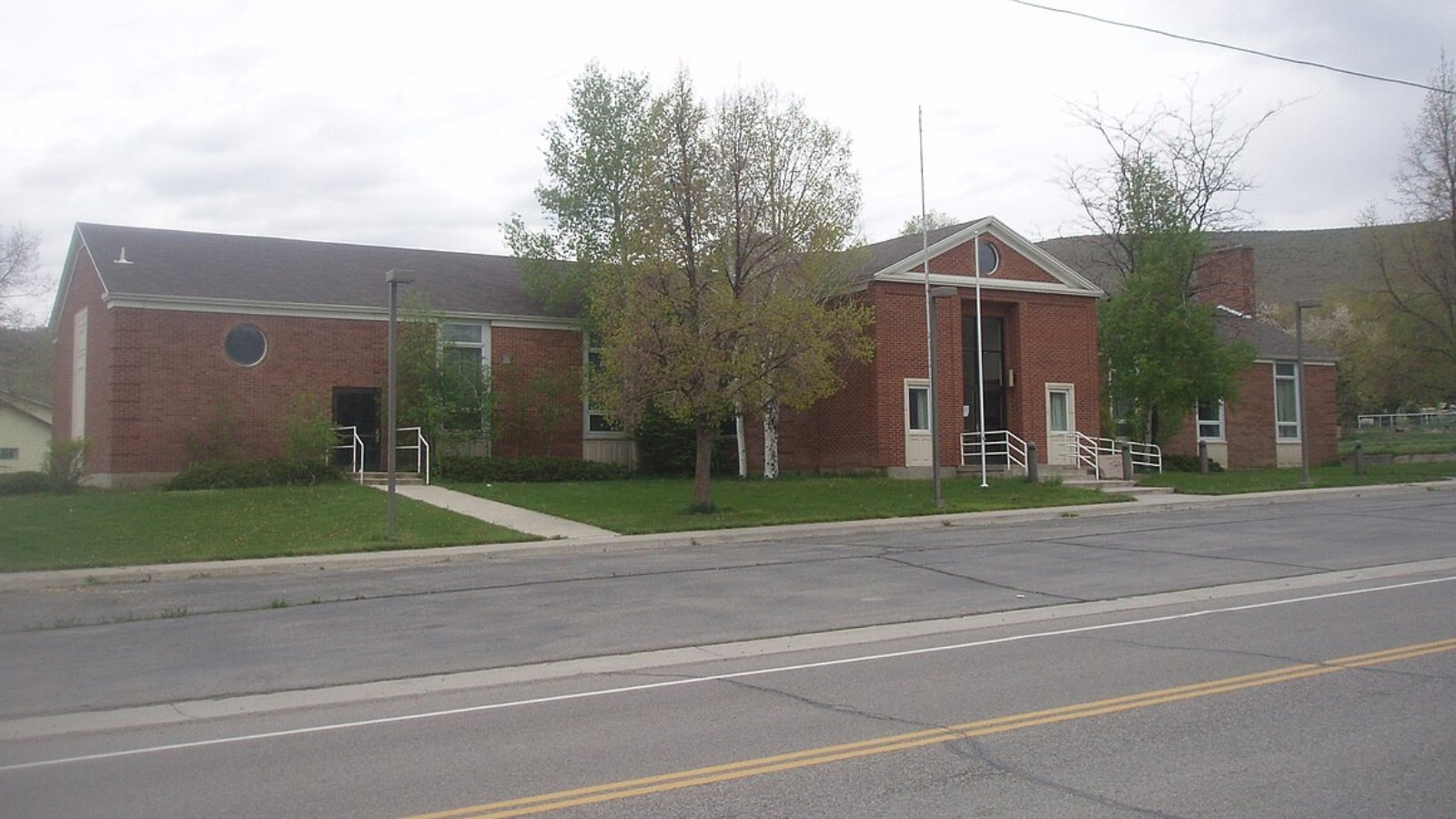
Why are people willing to pay so much to live here? What’s special about it?
Wallsburg offers authentic mountain living in the scenic Heber Valley with access to outdoor recreation and rural lifestyle. Residents enjoy wide-open spaces, agricultural heritage, and stunning mountain views while remaining close to Park City’s recreational opportunities. The community provides a genuine small-town experience in one of Utah’s most beautiful valleys.
How Wallsburg Rose to Prominence
Located in the Heber Valley, Wallsburg began as a farming and ranching community serving the surrounding agricultural operations. As the Heber Valley gained popularity due to its proximity to Park City and scenic beauty, Wallsburg became attractive to buyers seeking rural mountain living. The town’s authentic character and beautiful setting have made it increasingly desirable.
3 Interesting Tidbits
1. Valley Views – Wallsburg sits in the picturesque Heber Valley, surrounded by mountains and offering stunning natural beauty.
2. Agricultural Character – The town maintains its farming and ranching heritage despite increasing popularity among recreational property buyers.
3. Park City Access – Wallsburg provides mountain living with relatively easy access to Park City’s world-class recreational opportunities.
12. Daniel – 3% Home Price Increase Since 2010
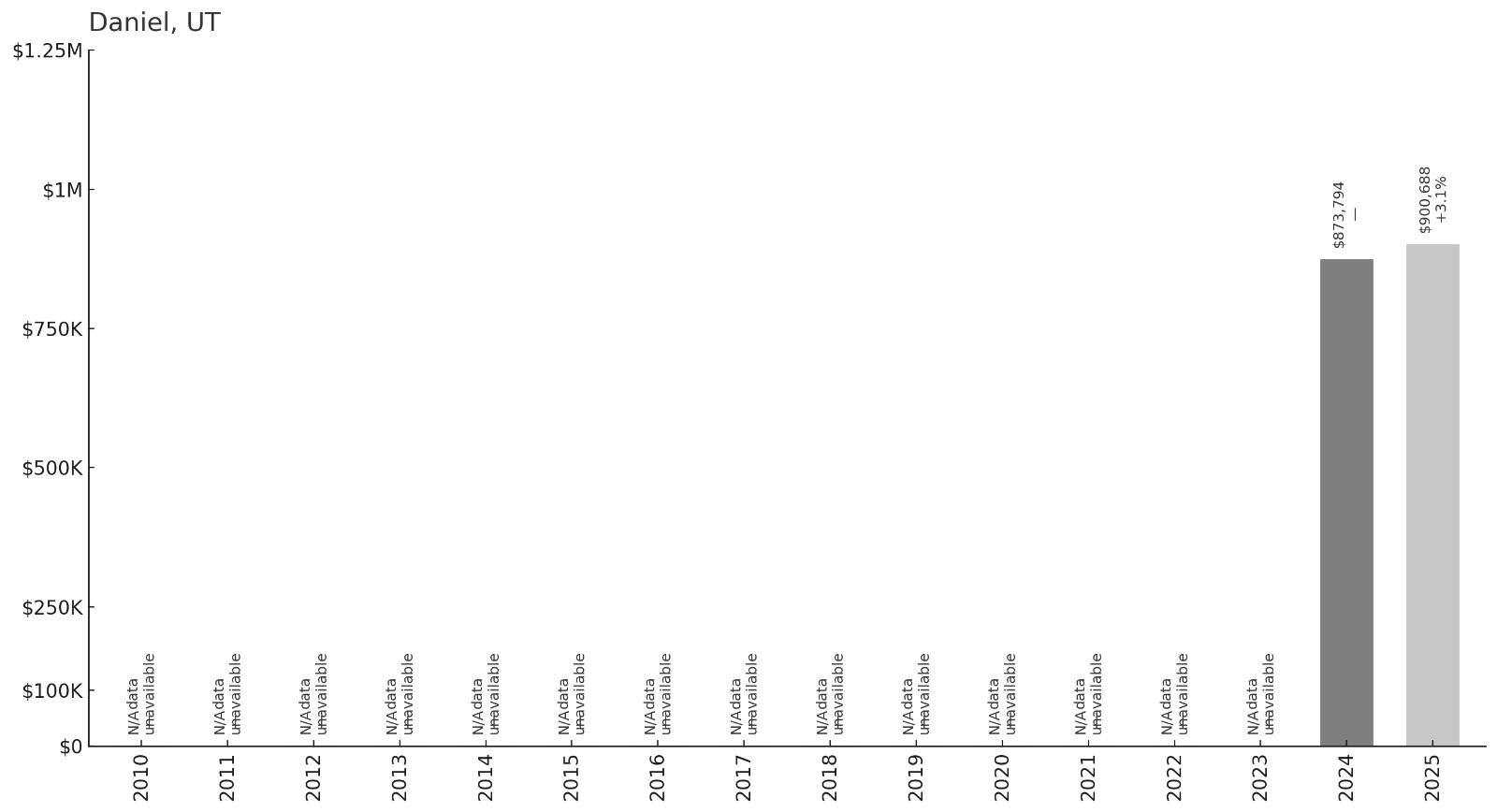
- 2010: N/A
- 2011: N/A
- 2012: N/A
- 2013: N/A
- 2014: N/A
- 2015: N/A
- 2016: N/A
- 2017: N/A
- 2018: N/A
- 2019: N/A
- 2020: N/A
- 2021: N/A
- 2022: N/A
- 2023: N/A
- 2024: $873,794
- 2025: $900,688
Daniel shows modest 3% growth with very limited data available only from 2024-2025. The median price reached $900,688 by 2025, representing solid appreciation in the short timeframe available. This small Summit County community commands premium prices for its exclusive mountain location.
Why Daniel?
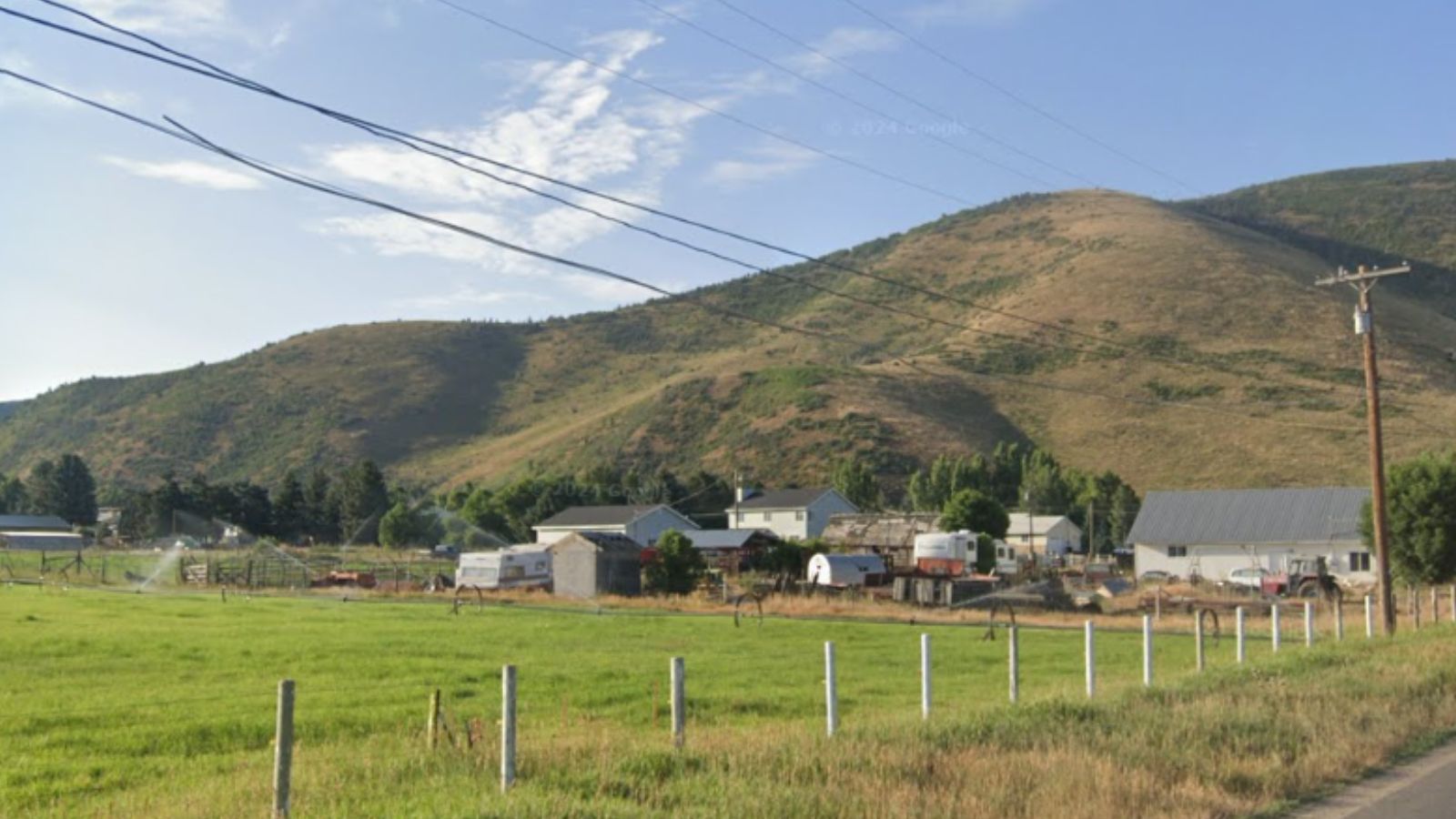
Why are people willing to pay so much to live here? What’s special about it?
Daniel offers exclusive mountain living in a small, tight-knit community with stunning natural beauty and outdoor recreation access. Residents enjoy privacy, wide-open spaces, and a genuine rural mountain lifestyle while remaining close to Park City’s amenities. The community provides an authentic western experience in one of Utah’s most scenic areas.
How Daniel Rose to Prominence
Daniel began as a small ranching community in Summit County, maintaining its agricultural character as surrounding areas developed. The town’s remote location and beautiful setting attracted buyers seeking privacy and authentic mountain living. As Park City became increasingly crowded and expensive, Daniel offered an alternative for those wanting genuine rural mountain lifestyle.
3 Interesting Tidbits
1. Small Scale – Daniel remains one of Utah’s smallest incorporated communities, maintaining its intimate rural character.
2. Mountain Setting – The town sits in a beautiful mountain valley with stunning natural scenery and outdoor recreation access.
3. Rural Heritage – Daniel preserves its ranching and agricultural traditions despite proximity to recreational development.
11. Woodland Hills – 179% Home Price Increase Since 2010
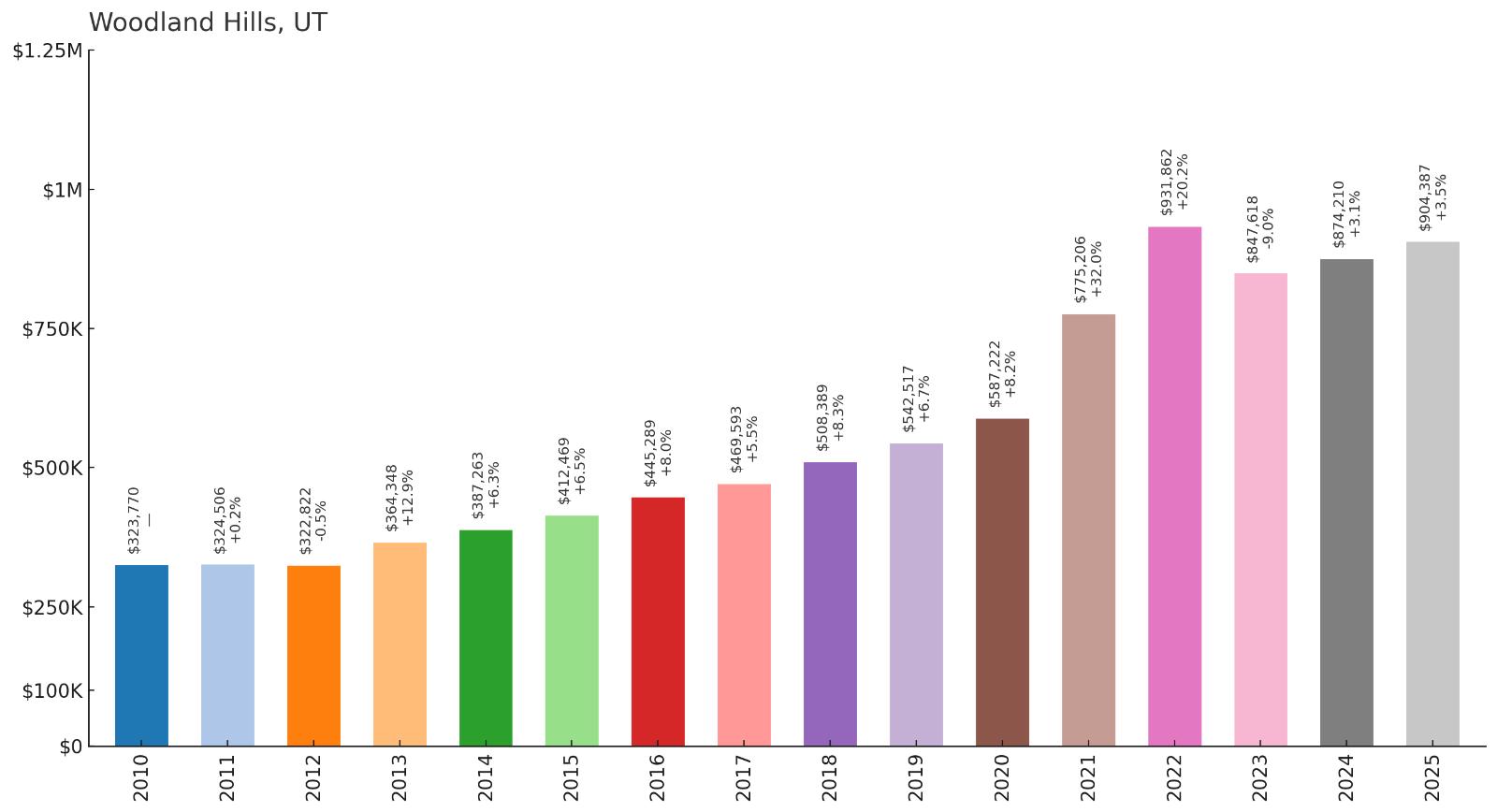
- 2010: $323,770
- 2011: $324,506
- 2012: $322,822
- 2013: $364,348
- 2014: $387,263
- 2015: $412,469
- 2016: $445,289
- 2017: $469,593
- 2018: $508,389
- 2019: $542,517
- 2020: $587,222
- 2021: $775,206
- 2022: $931,862
- 2023: $847,618
- 2024: $874,210
- 2025: $904,387
Woodland Hills has achieved impressive 179% growth since 2010, reaching $904,387 by 2025. The city showed remarkable stability through 2011-2012 before establishing consistent appreciation that accelerated dramatically during 2021-2022. Despite some volatility in recent years, values remain substantially elevated.
Why Woodland Hills?

Why are people willing to pay so much to live here? What’s special about it?
Woodland Hills offers upscale suburban living with stunning mountain views and easy access to Utah County’s employment centers. Families are drawn to the excellent schools, newer neighborhoods, and proximity to both technology jobs and outdoor recreation. The city provides luxury amenities while maintaining a family-friendly atmosphere in a beautiful setting.
How Woodland Hills Rose to Prominence
Incorporated in 1983, Woodland Hills was developed as a master-planned community designed to take advantage of the area’s natural beauty and mountain views. The city’s location at the base of the Wasatch Mountains, combined with careful planning and quality development, made it attractive for upscale family housing. As Utah County’s technology sector expanded, Woodland Hills became a preferred location for professionals.
3 Interesting Tidbits
1. Planned Community – Woodland Hills was designed as a master-planned community with an emphasis on preserving natural beauty and mountain views.
2. Mountain Access – The city provides direct access to hiking and outdoor recreation in the Wasatch Mountains while maintaining suburban conveniences.
3. Family Focus – Woodland Hills is known for its excellent schools and family-friendly amenities that attract growing families.
10. Highland – 180% Home Price Increase Since 2010

- 2010: $344,494
- 2011: $327,145
- 2012: $347,583
- 2013: $387,298
- 2014: $415,195
- 2015: $437,581
- 2016: $469,033
- 2017: $494,861
- 2018: $533,714
- 2019: $576,974
- 2020: $607,118
- 2021: $805,397
- 2022: $966,913
- 2023: $880,913
- 2024: $901,886
- 2025: $963,034
Highland has delivered exceptional 180% growth since 2010, reaching $963,034 by 2025. The city showed consistent appreciation throughout the 2010s before experiencing dramatic increases during the pandemic years. Despite some volatility in 2023, values have resumed their upward trajectory in this prestigious Utah County community.
Why Highland?

Why are people willing to pay so much to live here? What’s special about it?
Highland offers luxury suburban living with custom homes, large lots, and stunning mountain views. Residents enjoy excellent schools, upscale neighborhoods, and easy access to both Silicon Slopes employment and outdoor recreation. The city provides a prestigious address while maintaining proximity to Utah County’s technology corridor and natural amenities.
How Highland Rose to Prominence
Incorporated in 1977, Highland was developed as an upscale suburban community designed to attract families seeking luxury living in Utah County. The city’s location at the base of the Wasatch Mountains, combined with large lots and custom home opportunities, made it attractive to affluent buyers. As Utah’s technology sector grew, Highland became a preferred location for executives and professionals.
3 Interesting Tidbits
1. Luxury Focus – Highland is known for large custom homes and upscale neighborhoods that attract affluent families.
2. Mountain Views – The city offers stunning views of the Wasatch Mountains from most neighborhoods, creating a premium suburban environment.
3. Tech Proximity – Highland provides easy access to Utah County’s Silicon Slopes while maintaining an exclusive residential atmosphere.
9. Midway – 208% Home Price Increase Since 2010
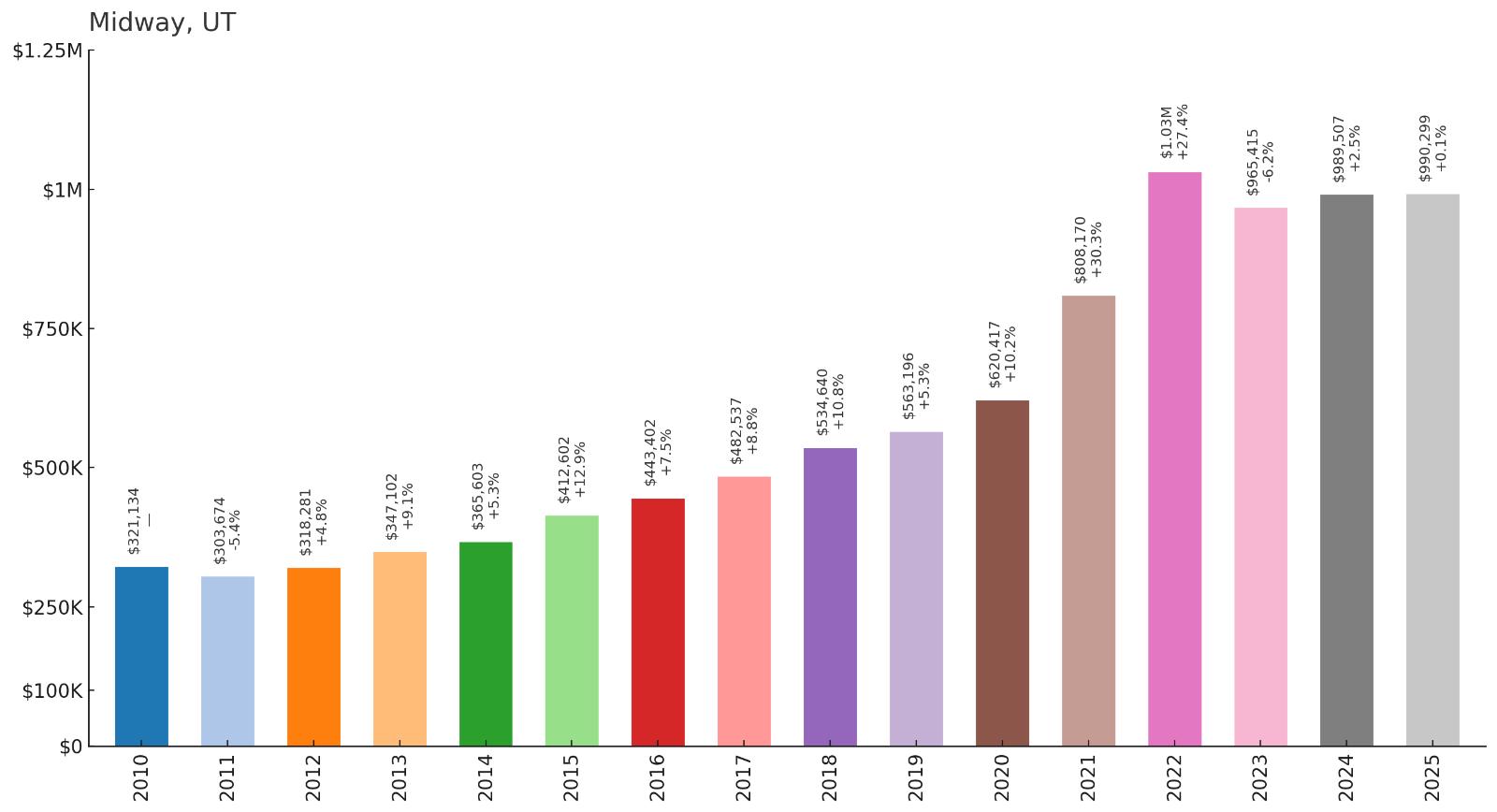
- 2010: $321,134
- 2011: $303,674
- 2012: $318,281
- 2013: $347,102
- 2014: $365,603
- 2015: $412,602
- 2016: $443,402
- 2017: $482,537
- 2018: $534,640
- 2019: $563,196
- 2020: $620,417
- 2021: $808,170
- 2022: $1,029,209
- 2023: $965,415
- 2024: $989,507
- 2025: $990,299
Midway has achieved remarkable 208% growth since 2010, reaching $990,299 by 2025. The scenic mountain community showed steady appreciation through the 2010s before experiencing dramatic increases that peaked in 2022. Values have stabilized recently while remaining just under the million-dollar mark.
Why Midway?
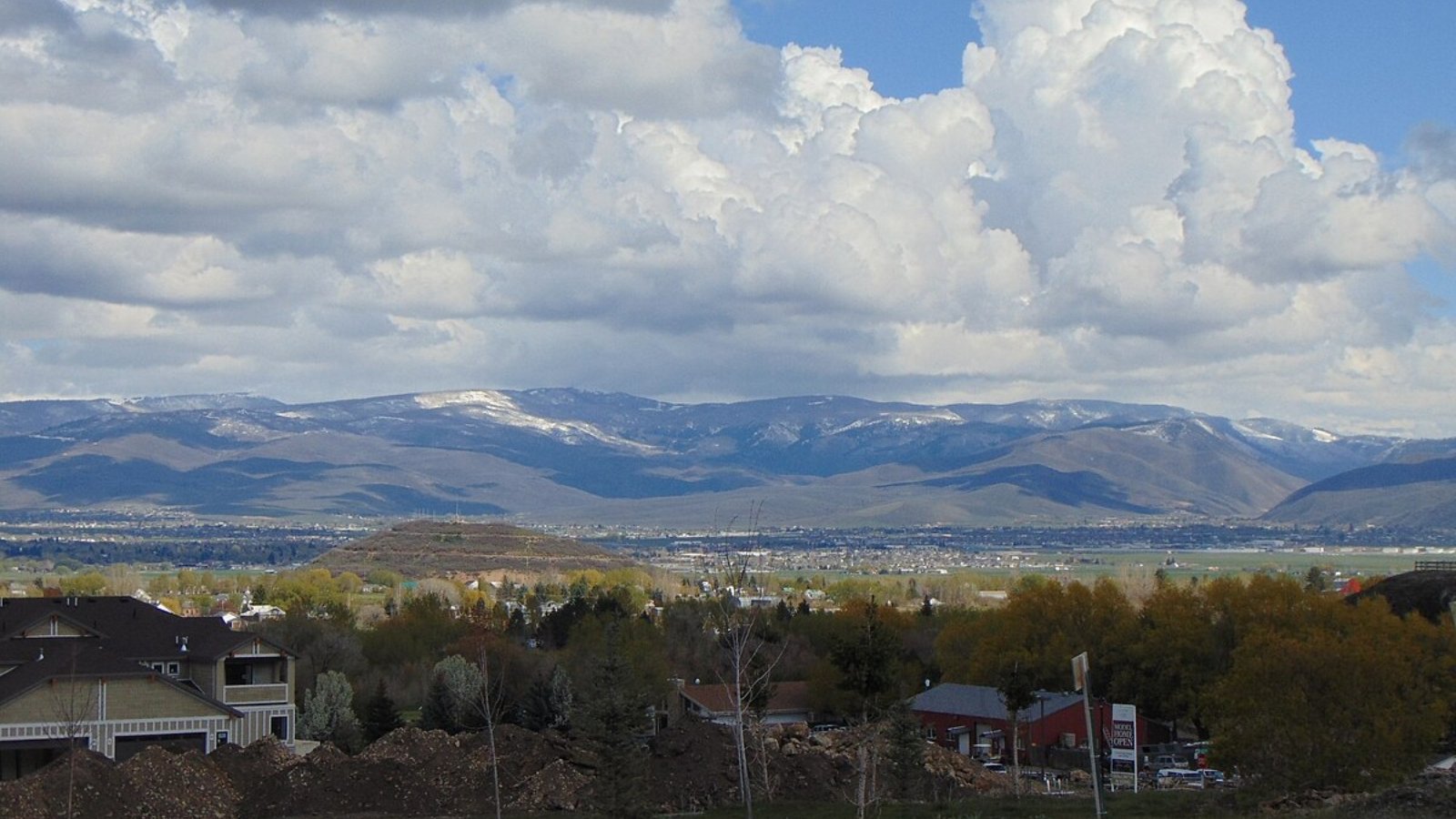
Why are people willing to pay so much to live here? What’s special about it?
Midway offers authentic Swiss-inspired mountain living in the beautiful Heber Valley with world-class recreation access. Residents enjoy the town’s unique character, natural hot springs, and proximity to Park City’s skiing while maintaining a small-town atmosphere. The community provides year-round recreational opportunities including golf, skiing, and outdoor adventures.
How Midway Rose to Prominence
Founded by Swiss immigrants in the 1860s, Midway developed its distinctive Alpine character that persists today. The town’s location in the scenic Heber Valley, combined with natural hot springs and recreational amenities, made it attractive for both tourism and residential development. As Park City became increasingly expensive, Midway offered similar mountain access with more authentic small-town character.
3 Interesting Tidbits
1. Swiss Heritage – Midway was settled by Swiss immigrants and maintains its Alpine character through architecture and community traditions.
2. Hot Springs – The town is famous for its natural hot springs, including the popular Homestead Crater geothermal pool.
3. Golf Destination – Midway is home to several championship golf courses that take advantage of the valley’s natural beauty.
8. Peoa – -2% Home Price Increase Since 2010
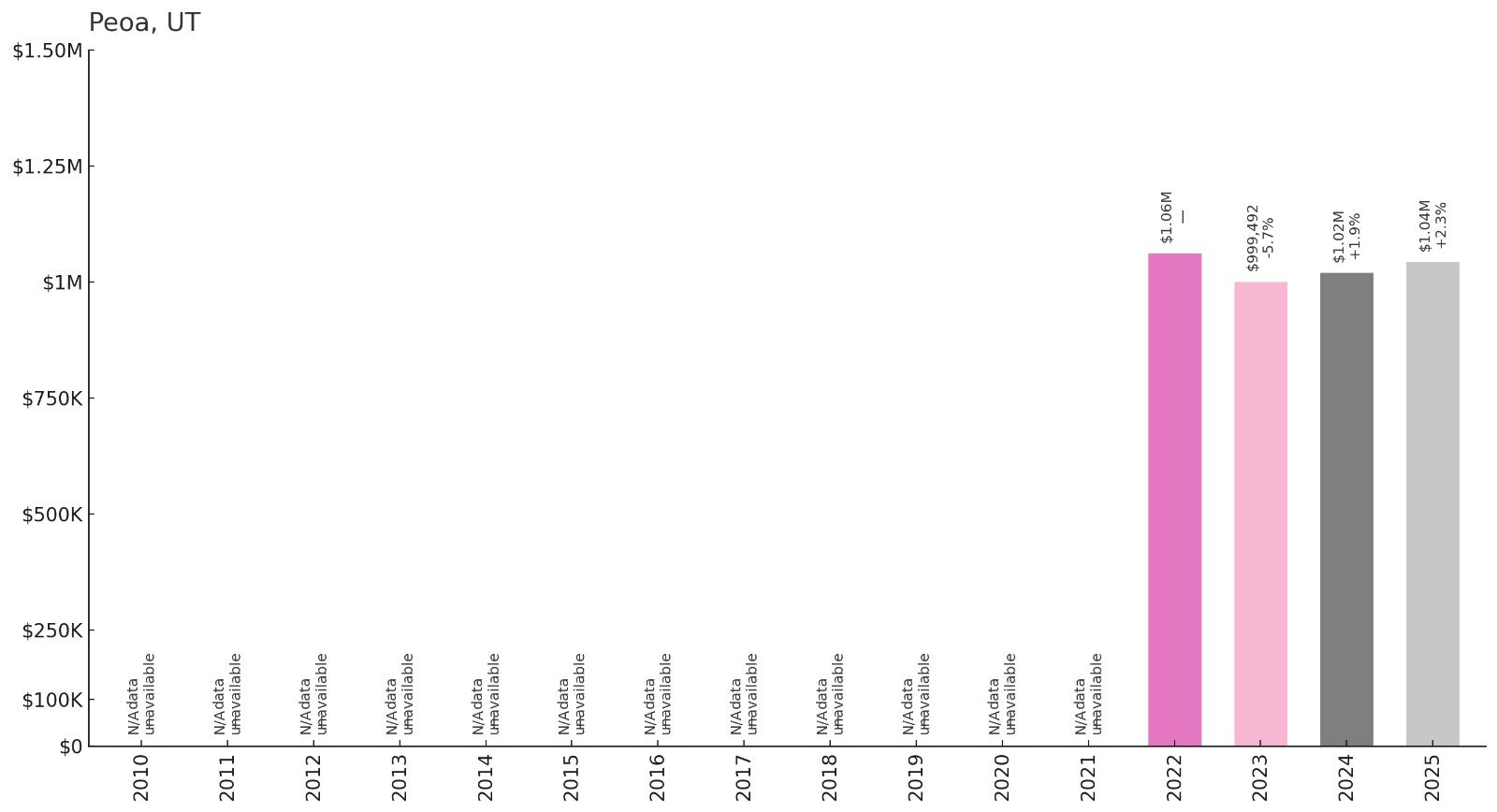
- 2010: N/A
- 2011: N/A
- 2012: N/A
- 2013: N/A
- 2014: N/A
- 2015: N/A
- 2016: N/A
- 2017: N/A
- 2018: N/A
- 2019: N/A
- 2020: N/A
- 2021: N/A
- 2022: $1,060,299
- 2023: $999,492
- 2024: $1,018,318
- 2025: $1,042,213
Peoa shows a slight -2% decline with limited data available only from 2022 onward, reaching $1,042,213 by 2025. Despite the technical decline, the small Summit County community commands over one million dollars in median home prices. The town represents some of Utah’s most exclusive mountain real estate.
Why Peoa?
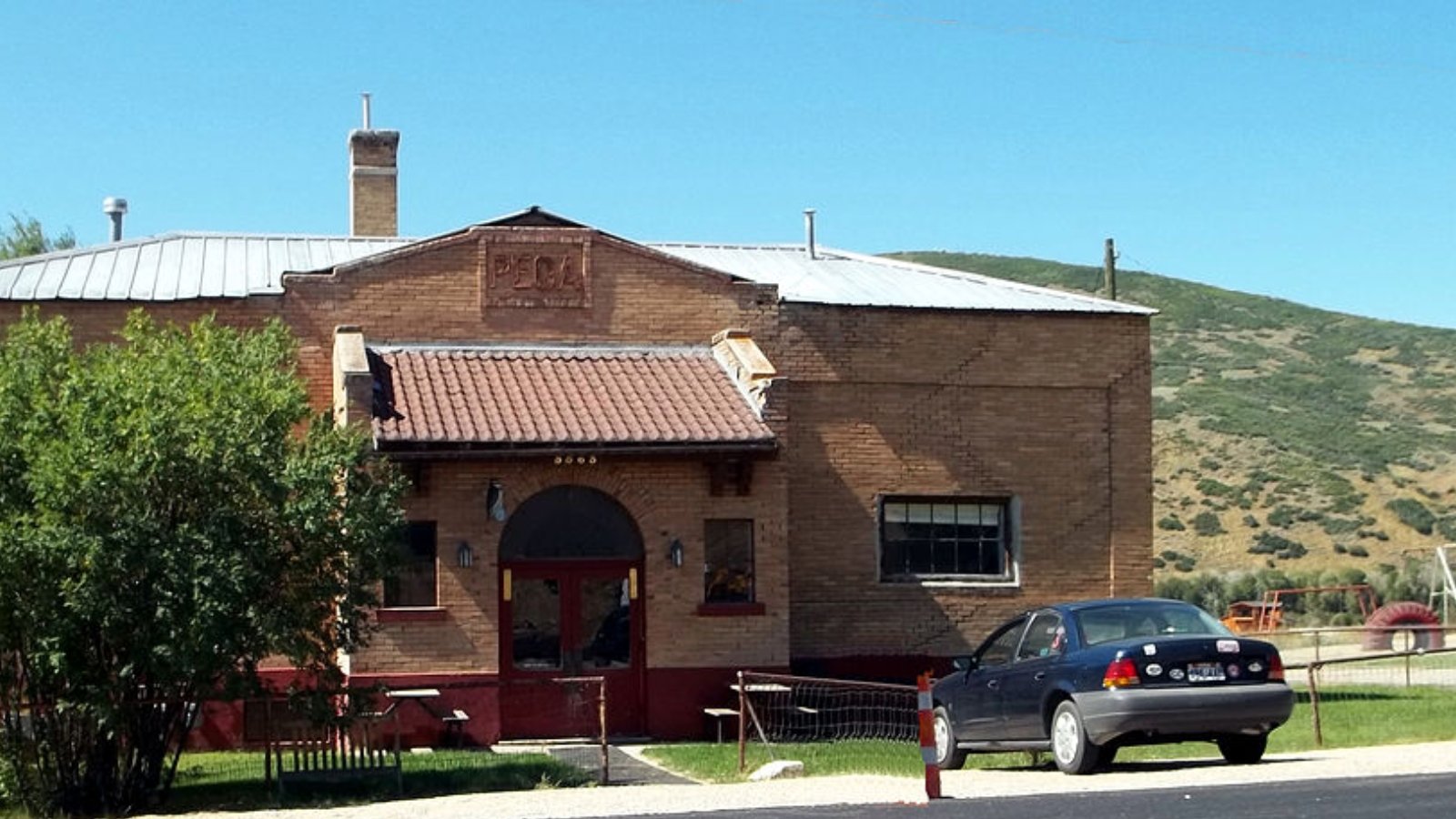
Why are people willing to pay so much to live here? What’s special about it?
Peoa offers exclusive mountain living with privacy, wide-open spaces, and stunning natural beauty. Residents enjoy a genuine rural mountain lifestyle while remaining accessible to Park City’s recreational amenities and employment opportunities. The community provides an authentic western experience with luxury amenities and outdoor recreation access.
How Peoa Rose to Prominence
Located in the scenic Weber Canyon area of Summit County, Peoa began as a small ranching community serving local agricultural operations. The town’s beautiful setting and proximity to Park City made it increasingly attractive to buyers seeking privacy and authentic mountain living. As Park City became more crowded, Peoa offered an exclusive alternative for those wanting genuine rural luxury.
3 Interesting Tidbits
1. Million-Dollar Market – Peoa represents some of Utah’s most exclusive real estate, with median prices exceeding one million dollars.
2. Rural Luxury – The town combines authentic ranching heritage with luxury mountain living and privacy.
3. Park City Alternative – Peoa provides exclusive mountain living for those seeking alternatives to Park City’s more crowded areas.
7. Mount Olympus – 161% Home Price Increase Since 2010
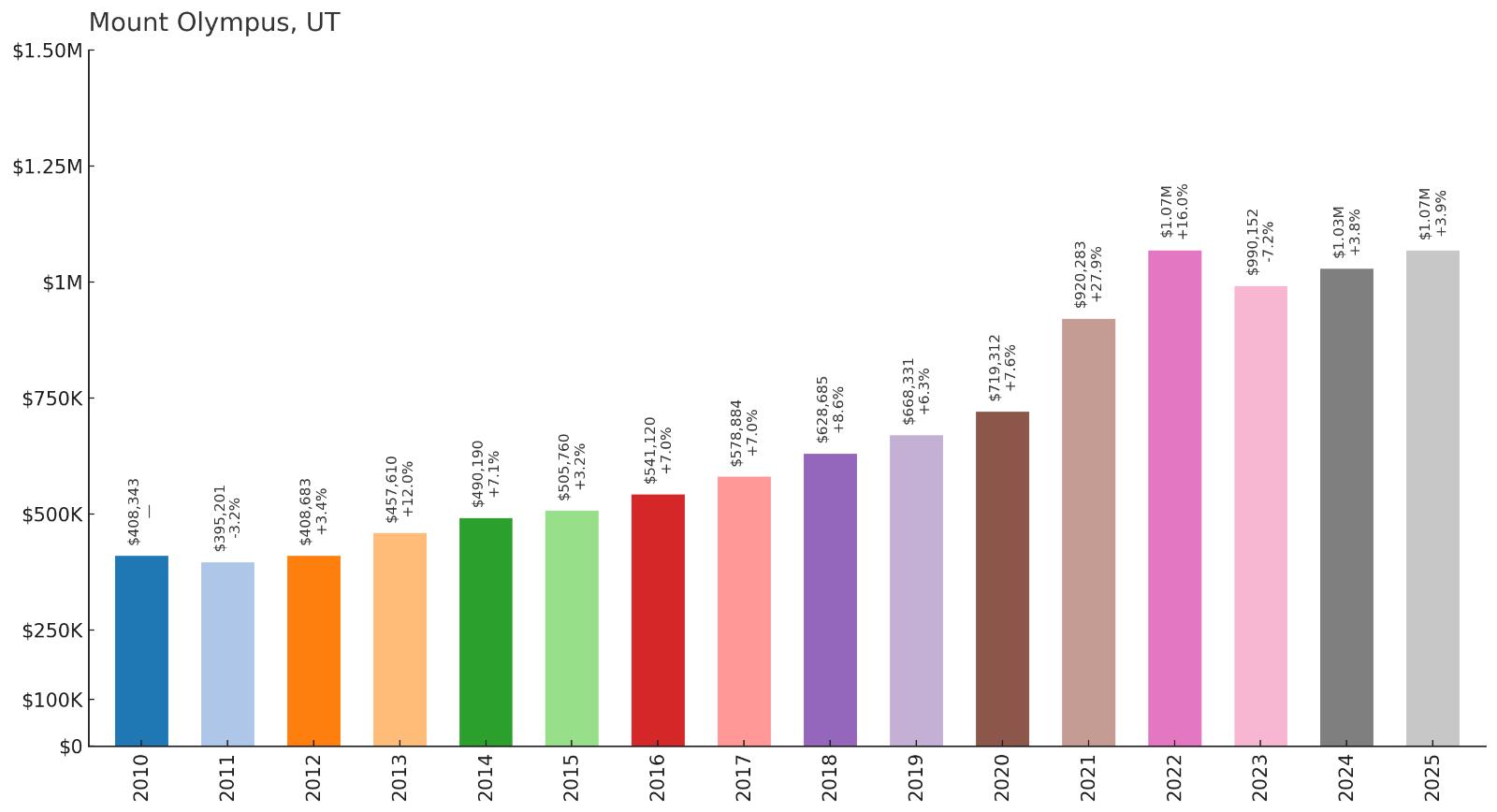
- 2010: $408,343
- 2011: $395,201
- 2012: $408,683
- 2013: $457,610
- 2014: $490,190
- 2015: $505,760
- 2016: $541,120
- 2017: $578,884
- 2018: $628,685
- 2019: $668,331
- 2020: $719,312
- 2021: $920,283
- 2022: $1,067,393
- 2023: $990,152
- 2024: $1,027,913
- 2025: $1,067,614
Mount Olympus has achieved strong 161% growth since 2010, reaching $1,067,614 by 2025. The prestigious Salt Lake County community showed consistent appreciation through the 2010s before experiencing dramatic increases during the pandemic years. Values have stabilized recently while maintaining their seven-figure status.
Why Mount Olympus?
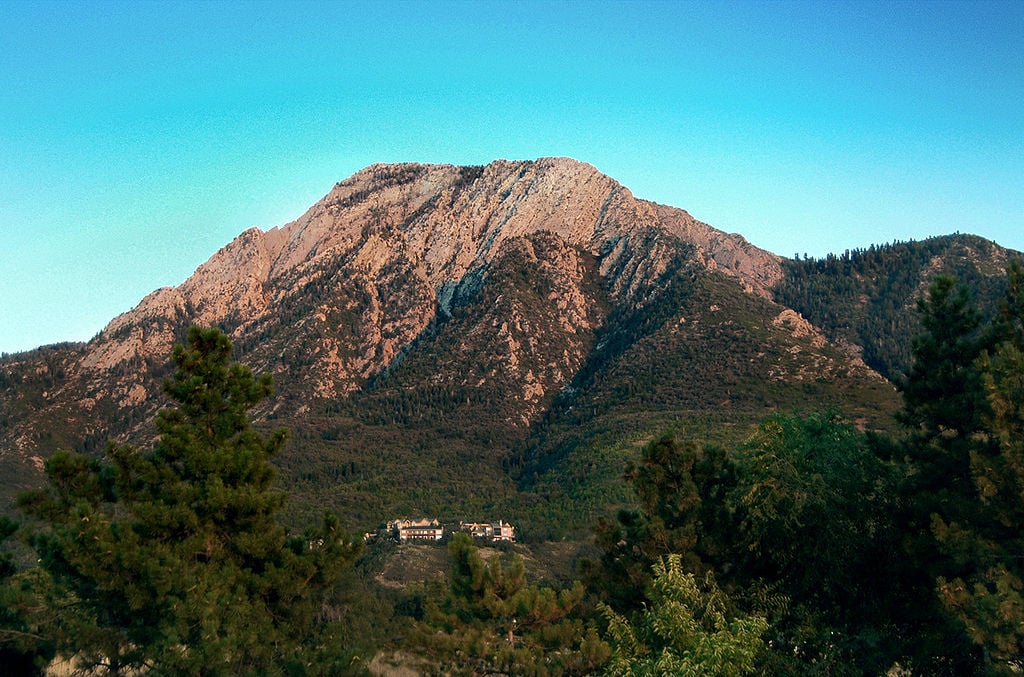
Why are people willing to pay so much to live here? What’s special about it?
Mount Olympus offers luxury hillside living with panoramic views of Salt Lake Valley and the surrounding mountains. Residents enjoy custom homes, upscale neighborhoods, and easy access to both downtown Salt Lake City and mountain recreation. The area provides a prestigious address while maintaining proximity to urban amenities and outdoor activities.
How Mount Olympus Rose to Prominence
Named for the prominent mountain peak that dominates the area, Mount Olympus developed as one of Salt Lake Valley’s most prestigious residential areas. The hillside location provided stunning views and natural beauty that attracted custom home development. As Salt Lake City grew and prospered, Mount Olympus became the preferred location for executives and professionals seeking luxury living with mountain access.
3 Interesting Tidbits
1. Hillside Location – Mount Olympus sits on the foothills of the Wasatch Mountains, providing elevation and stunning valley views.
2. Prestigious Address – The area has long been considered one of Salt Lake Valley’s most desirable and exclusive residential locations.
3. Mountain Access – Residents enjoy direct access to hiking trails and outdoor recreation in the Mount Olympus Wilderness Area.
6. Charleston – -2% Home Price Increase Since 2010
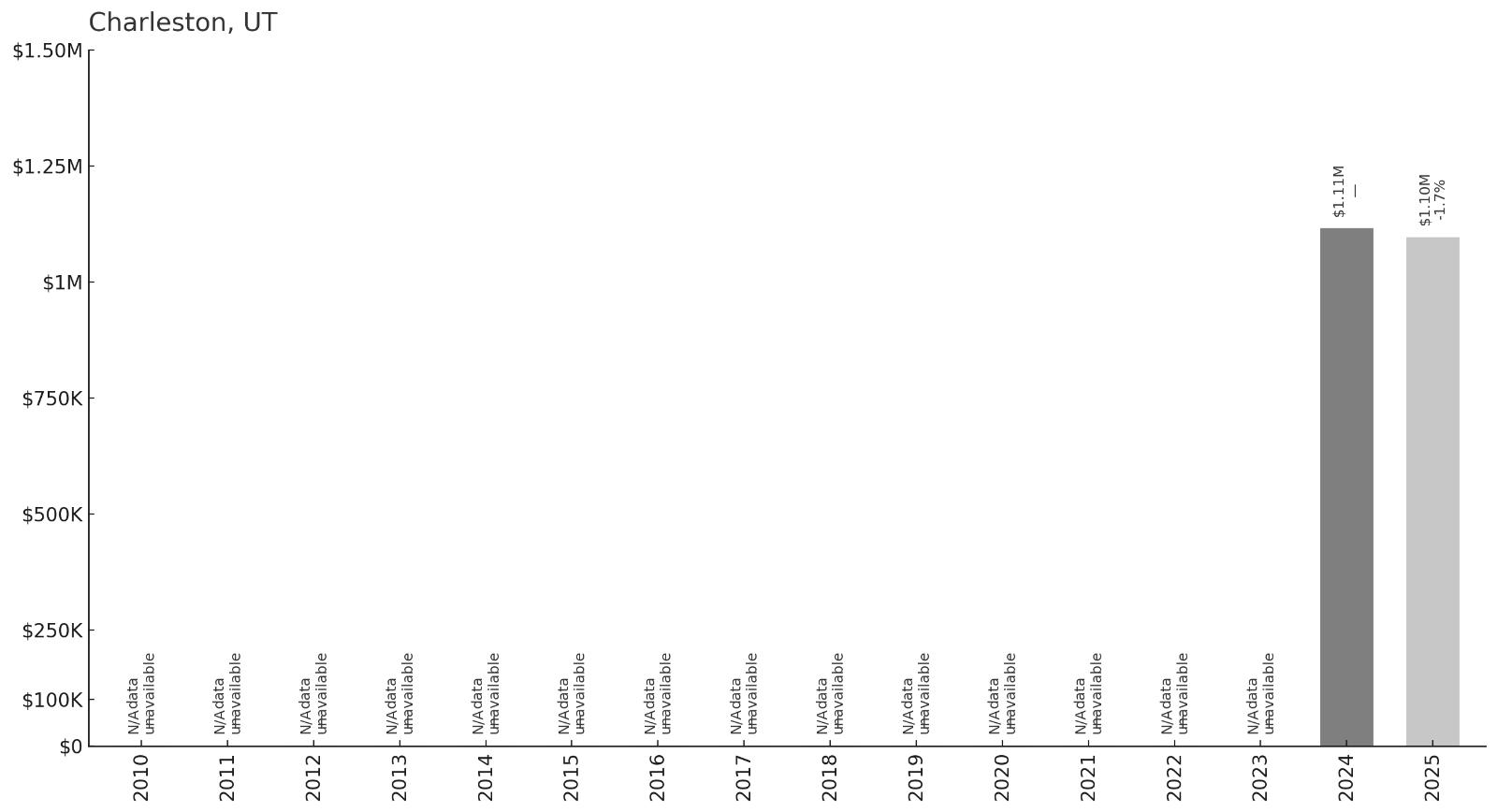
- 2010: N/A
- 2011: N/A
- 2012: N/A
- 2013: N/A
- 2014: N/A
- 2015: N/A
- 2016: N/A
- 2017: N/A
- 2018: N/A
- 2019: N/A
- 2020: N/A
- 2021: N/A
- 2022: N/A
- 2023: N/A
- 2024: $1,114,913
- 2025: $1,095,940
Charleston shows a slight -2% decline with very limited data available only from 2024-2025. Despite the technical decline, the median price of $1,095,940 places it among Utah’s most expensive communities. This exclusive Heber Valley location commands premium prices for its mountain setting and recreational access.
Why Charleston?

Why are people willing to pay so much to live here? What’s special about it?
Charleston offers exclusive mountain living in the scenic Heber Valley with world-class recreational access and stunning natural beauty. Residents enjoy privacy, wide-open spaces, and proximity to both Park City’s amenities and Deer Creek Reservoir’s water recreation. The community provides authentic mountain lifestyle with luxury amenities and outdoor adventure access.
How Charleston Rose to Prominence
Located in the beautiful Heber Valley near Deer Creek Reservoir, Charleston began as a small agricultural community serving local farming and ranching operations. The area’s natural beauty and recreational opportunities, combined with proximity to Park City, made it increasingly attractive to buyers seeking exclusive mountain properties. As the Heber Valley gained recognition, Charleston became a destination for luxury mountain homes.
3 Interesting Tidbits
1. Reservoir Access – Charleston sits near Deer Creek Reservoir, providing boating, fishing, and water recreation opportunities.
2. Exclusive Market – The town represents some of Utah’s most exclusive mountain real estate with million-dollar-plus median prices.
3. Valley Setting – Charleston enjoys the scenic beauty of the Heber Valley with mountain views and outdoor recreation access.
5. Alpine – 162% Home Price Increase Since 2010
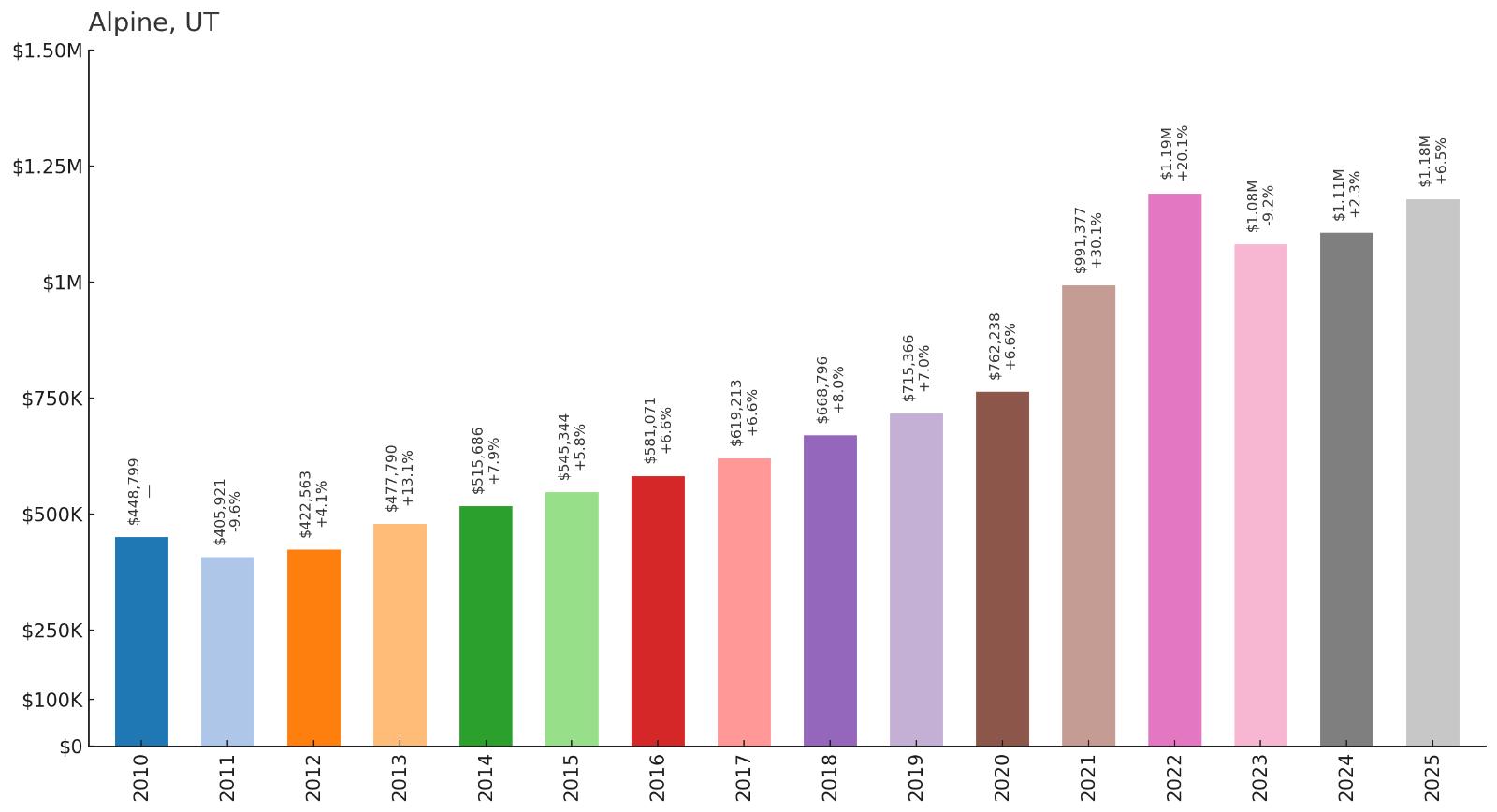
- 2010: $448,799
- 2011: $405,921
- 2012: $422,563
- 2013: $477,790
- 2014: $515,686
- 2015: $545,344
- 2016: $581,071
- 2017: $619,213
- 2018: $668,796
- 2019: $715,366
- 2020: $762,238
- 2021: $991,377
- 2022: $1,190,270
- 2023: $1,081,107
- 2024: $1,105,752
- 2025: $1,177,827
Alpine has achieved impressive 162% growth since 2010, reaching $1,177,827 by 2025. The prestigious Utah County community showed steady appreciation through the 2010s before experiencing dramatic increases that pushed median prices above one million dollars. Despite some volatility, values remain well into seven-figure territory.
Why Alpine?
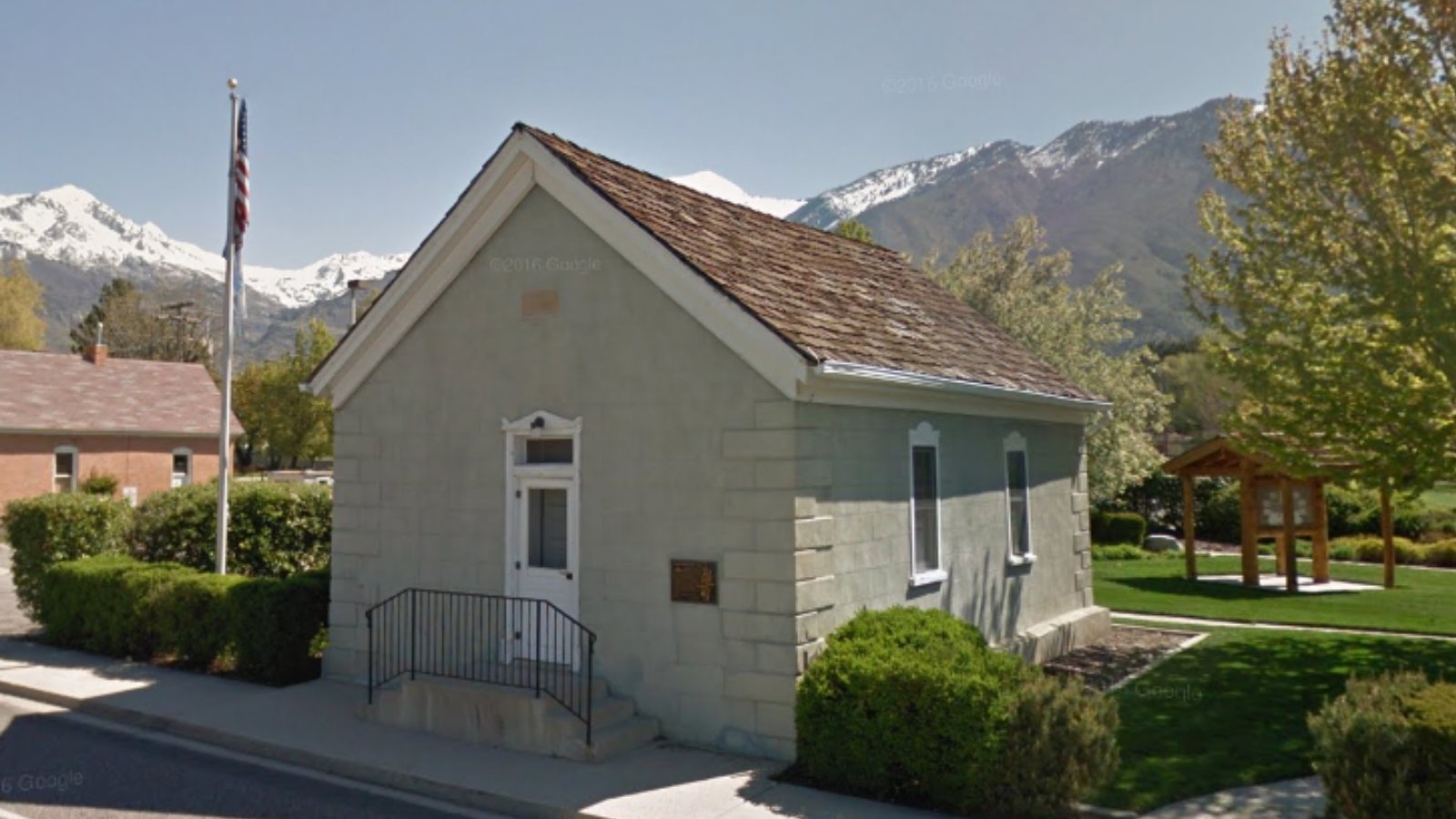
Why are people willing to pay so much to live here? What’s special about it?
Alpine offers luxury mountain living with custom homes, large lots, and spectacular views of Utah Valley and surrounding peaks. Residents enjoy excellent schools, upscale neighborhoods, and easy access to both Silicon Slopes employment and world-class outdoor recreation. The city provides a prestigious address while maintaining proximity to technology jobs and mountain activities.
How Alpine Rose to Prominence
Incorporated in 1850, Alpine began as one of Utah County’s earliest settlements but remained largely rural until the late 20th century. The city’s location at the base of the Wasatch Mountains, combined with large developable lots, made it attractive for luxury custom homes. As Utah County’s technology sector expanded and prosperity increased, Alpine became the preferred location for executives seeking mountain luxury.
3 Interesting Tidbits
1. Historic Settlement – Alpine is one of Utah County’s oldest communities, originally settled in 1850 by Mormon pioneers.
2. Custom Homes – The city is known for large custom homes on spacious lots that take advantage of mountain views and natural beauty.
3. Million-Dollar Market – Alpine represents Utah County’s luxury real estate market with median prices exceeding one million dollars.
4. Kamas – 222% Home Price Increase Since 2010
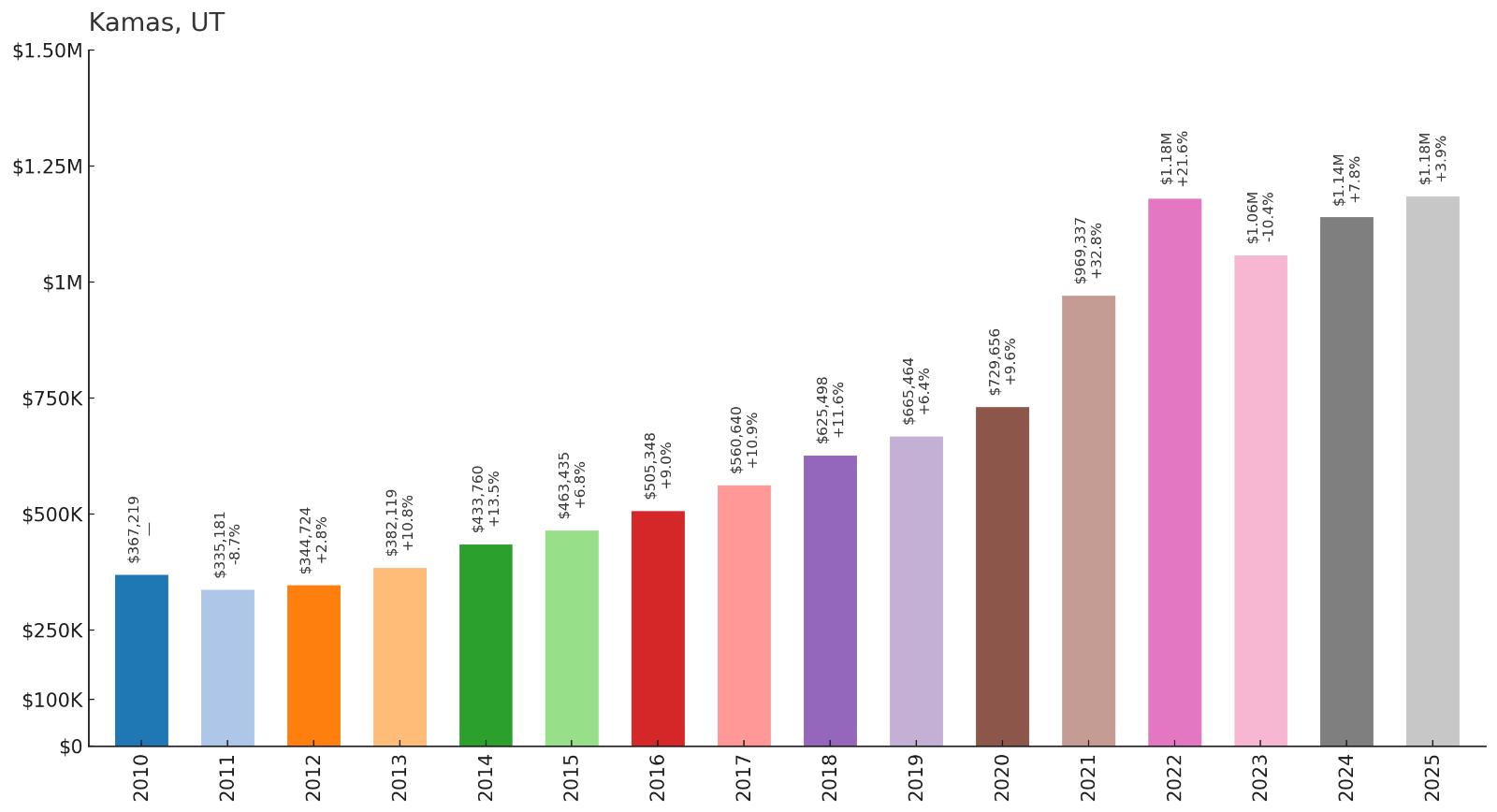
- 2010: $367,219
- 2011: $335,181
- 2012: $344,724
- 2013: $382,119
- 2014: $433,760
- 2015: $463,435
- 2016: $505,348
- 2017: $560,640
- 2018: $625,498
- 2019: $665,464
- 2020: $729,656
- 2021: $969,337
- 2022: $1,178,788
- 2023: $1,056,408
- 2024: $1,138,292
- 2025: $1,182,937
Kamas has delivered exceptional 222% growth since 2010, reaching $1,182,937 by 2025. The Summit County town showed consistent appreciation throughout the 2010s before experiencing dramatic increases that pushed median prices above one million dollars. Despite some volatility in recent years, values remain firmly in seven-figure territory.
Why Kamas?

Why are people willing to pay so much to live here? What’s special about it?
Kamas offers authentic western mountain living with access to world-class outdoor recreation and proximity to Park City’s amenities. Residents enjoy the town’s historic character, beautiful valley setting, and easy access to skiing, hiking, and other mountain activities. The community provides genuine small-town atmosphere while remaining close to recreational opportunities and employment centers.
How Kamas Rose to Prominence
Founded in the 1860s as a logging and ranching community in the Kamas Valley, the town maintained its western character as Utah’s recreation industry developed. Kamas’ location near Park City and multiple ski resorts, combined with its authentic small-town atmosphere, made it increasingly attractive to buyers seeking mountain living. As Park City became more expensive, Kamas offered similar access with more genuine western character.
3 Interesting Tidbits
1. Western Heritage – Kamas maintains its authentic western character with ranching heritage and small-town atmosphere.
2. Gateway Location – The town serves as a gateway to the Uinta Mountains and numerous outdoor recreation opportunities.
3. Valley Setting – Kamas sits in the scenic Kamas Valley, surrounded by mountains and offering stunning natural beauty.
3. West Mountain – 3% Home Price Increase Since 2010
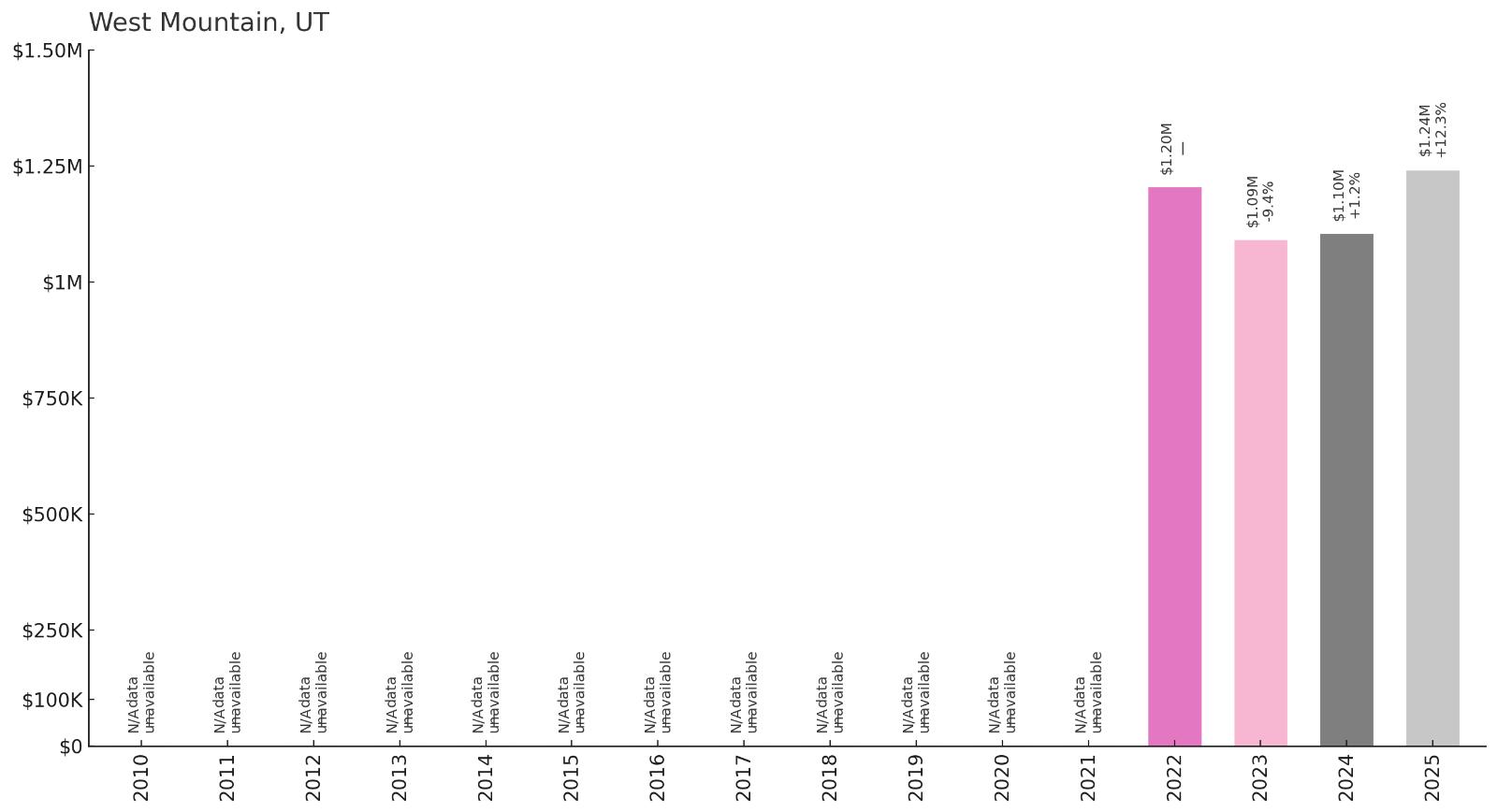
- 2010: N/A
- 2011: N/A
- 2012: N/A
- 2013: N/A
- 2014: N/A
- 2015: N/A
- 2016: N/A
- 2017: N/A
- 2018: N/A
- 2019: N/A
- 2020: N/A
- 2021: N/A
- 2022: $1,202,831
- 2023: $1,089,321
- 2024: $1,102,699
- 2025: $1,238,602
West Mountain shows modest 3% growth with limited data available from 2022 onward, reaching $1,238,602 by 2025. Despite the small percentage increase, the median price exceeds $1.2 million, making it one of Utah’s most expensive communities. This exclusive Utah County location commands premium prices for its mountain setting and luxury amenities.
Why West Mountain?
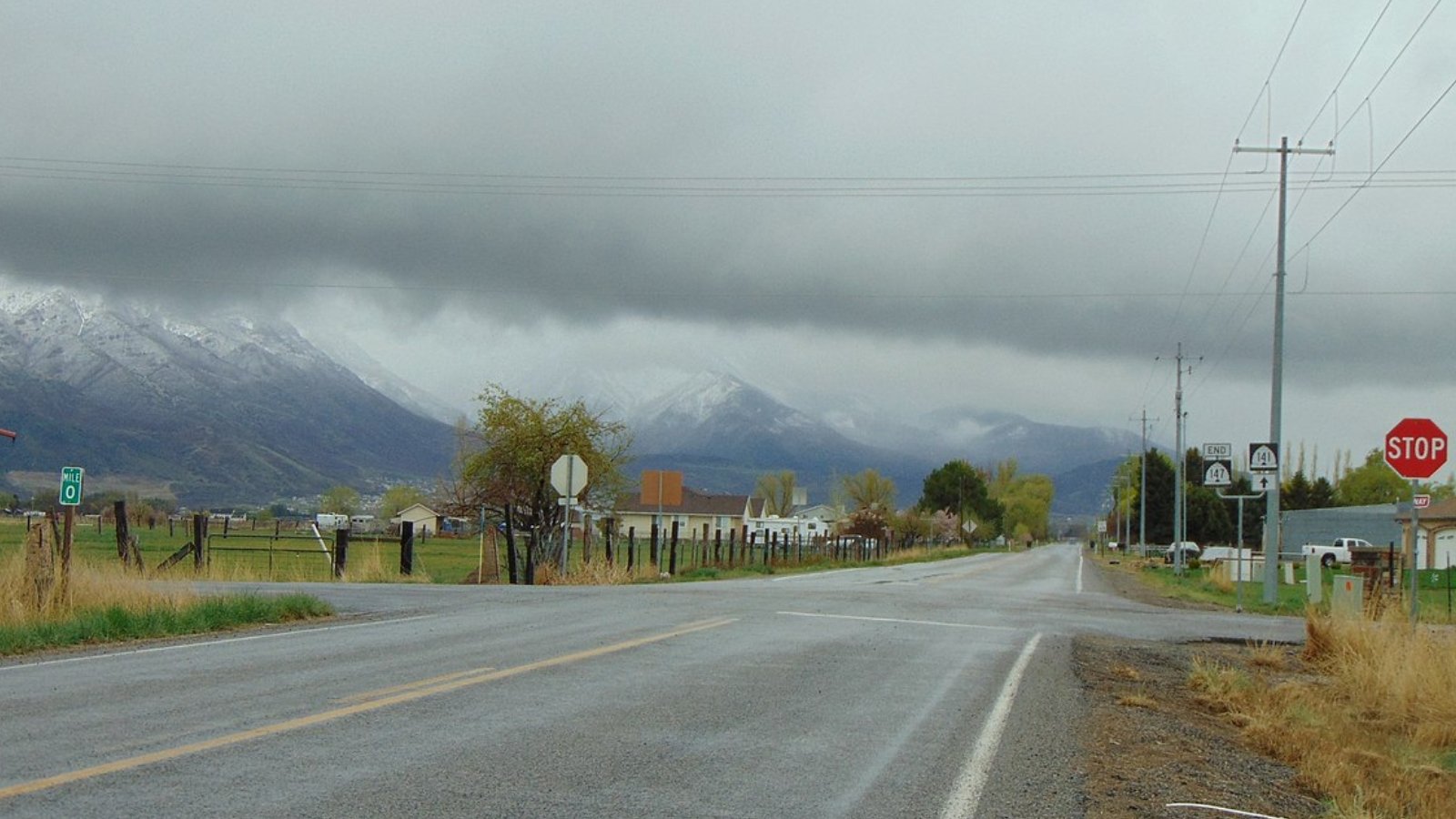
Why are people willing to pay so much to live here? What’s special about it?
West Mountain offers exclusive luxury living with custom homes, large lots, and panoramic views of Utah Valley and surrounding mountains. Residents enjoy privacy, upscale amenities, and easy access to both technology employment and outdoor recreation. The community provides a prestigious address while maintaining proximity to Utah County’s Silicon Slopes and natural attractions.
How West Mountain Rose to Prominence
Developed as an exclusive residential community in Utah County, West Mountain was designed to take advantage of elevated mountain locations and stunning views. The area’s large lots and custom home opportunities attracted affluent buyers seeking luxury mountain living with valley access. As Utah County’s technology sector grew and prosperity increased, West Mountain became a premier destination for executive-level housing.
3 Interesting Tidbits
1. Luxury Market – West Mountain represents Utah County’s most exclusive real estate with median prices exceeding $1.2 million.
2. Mountain Views – The community offers spectacular panoramic views of Utah Valley and the surrounding Wasatch Mountains.
3. Executive Housing – West Mountain attracts executives and professionals from Utah County’s thriving technology sector.
2. Park City – 221% Home Price Increase Since 2010

- 2010: $472,267
- 2011: $493,648
- 2012: $490,842
- 2013: $526,406
- 2014: $584,777
- 2015: $654,409
- 2016: $719,467
- 2017: $776,379
- 2018: $825,406
- 2019: $857,319
- 2020: $896,107
- 2021: $1,200,902
- 2022: $1,634,755
- 2023: $1,440,146
- 2024: $1,498,780
- 2025: $1,517,074
Park City has achieved remarkable 221% growth since 2010, reaching $1,517,074 by 2025. The world-renowned ski resort town showed steady appreciation through the 2010s before experiencing dramatic increases that peaked in 2022. Despite some moderation, values remain well above $1.5 million, reflecting the town’s status as a premier recreational destination.
Why Park City?

Why are people willing to pay so much to live here? What’s special about it?
Park City offers world-class skiing, luxury amenities, and year-round recreational opportunities in a vibrant mountain town setting. Residents enjoy access to Deer Valley and Park City Mountain Resort, fine dining, cultural events, and a sophisticated mountain lifestyle. The town provides ski-in/ski-out living while maintaining easy access to Salt Lake City’s international airport and urban amenities.
How Park City Rose to Prominence
Originally a silver mining town founded in the 1860s, Park City transformed into a world-class ski destination beginning in the 1960s with the development of its ski resorts. The town gained international recognition hosting events during the 2002 Winter Olympics and has continued to attract luxury development and high-end tourism. Park City has become synonymous with luxury mountain living and recreational excellence.
3 Interesting Tidbits
1. Olympic Legacy – Park City hosted numerous events during the 2002 Winter Olympics, cementing its status as a world-class ski destination.
2. Largest Ski Resort – Park City Mountain Resort is now the largest ski resort in the United States, offering over 7,300 acres of skiable terrain.
3. Historic Main Street – The town’s historic Main Street maintains its mining-era character while housing upscale shops, restaurants, and galleries.
1. Alta – 1% Home Price Increase Since 2010
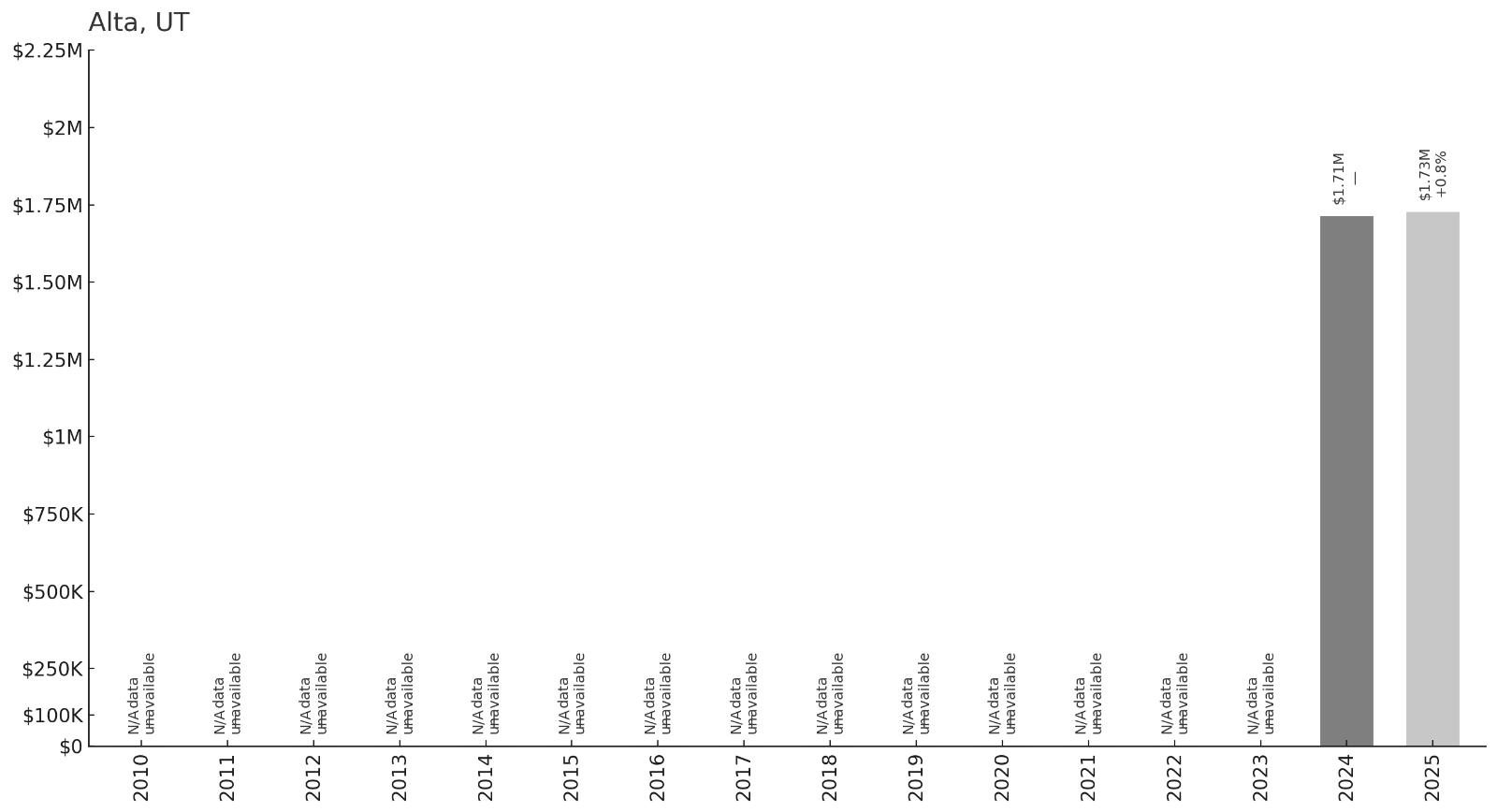
- 2010: N/A
- 2011: N/A
- 2012: N/A
- 2013: N/A
- 2014: N/A
- 2015: N/A
- 2016: N/A
- 2017: N/A
- 2018: N/A
- 2019: N/A
- 2020: N/A
- 2021: N/A
- 2022: N/A
- 2023: N/A
- 2024: $1,711,735
- 2025: $1,725,182
Alta shows minimal 1% growth with very limited data available only from 2024-2025. Despite the small percentage increase, the median price of $1,725,182 makes it Utah’s most expensive town. This exclusive ski community at the top of Little Cottonwood Canyon commands the highest prices in the state for its unparalleled ski access and mountain lifestyle.
Why Alta?
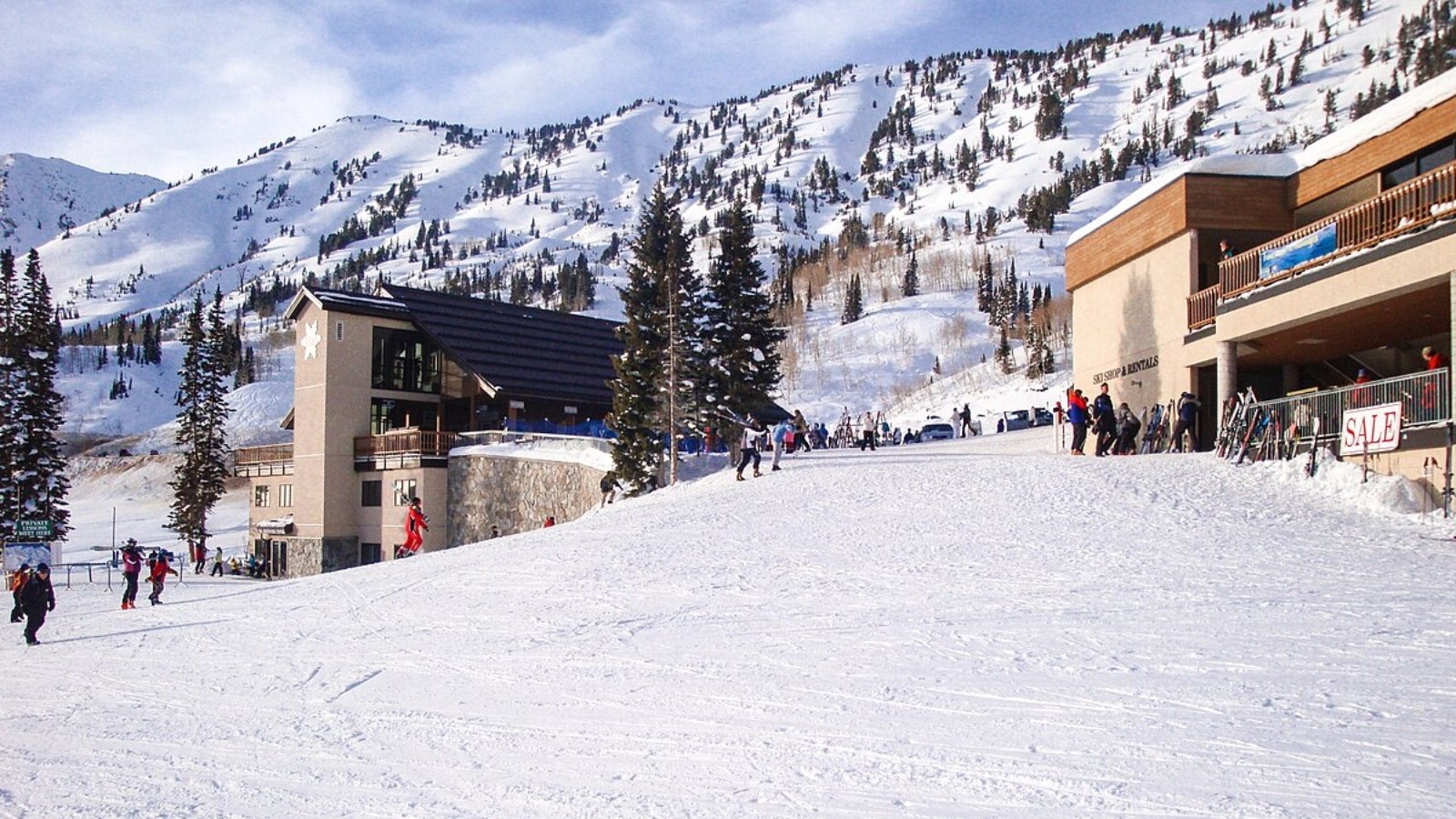
Why are people willing to pay so much to live here? What’s special about it?
Alta offers the ultimate ski-in/ski-out lifestyle with direct access to some of the world’s best powder skiing and mountain terrain. Residents enjoy an exclusive mountain community atmosphere with fewer than 500 year-round residents and unmatched recreational opportunities. The town provides authentic mountain living while maintaining proximity to Salt Lake City’s urban amenities and international airport access.
How Alta Rose to Prominence
Alta began as a silver mining town in the 1860s before transforming into a ski area in 1938. The mountain’s reputation for exceptional snow quality and challenging terrain attracted skiers from around the world, making it one of only three U.S. ski resorts that prohibits snowboarding. As Utah’s ski industry matured, Alta’s exclusive character and world-class skiing made it the most prestigious mountain community in the state.
3 Interesting Tidbits
1. Powder Paradise – Alta receives over 500 inches of dry, light snow annually, earning recognition as having some of the world’s best skiing conditions.
2. Skiers Only – Alta is one of only three ski areas in the United States that prohibits snowboarding, maintaining its traditional skiing culture.
3. Exclusive Community – With fewer than 500 year-round residents, Alta maintains an intimate mountain community atmosphere that attracts the most discerning buyers.



